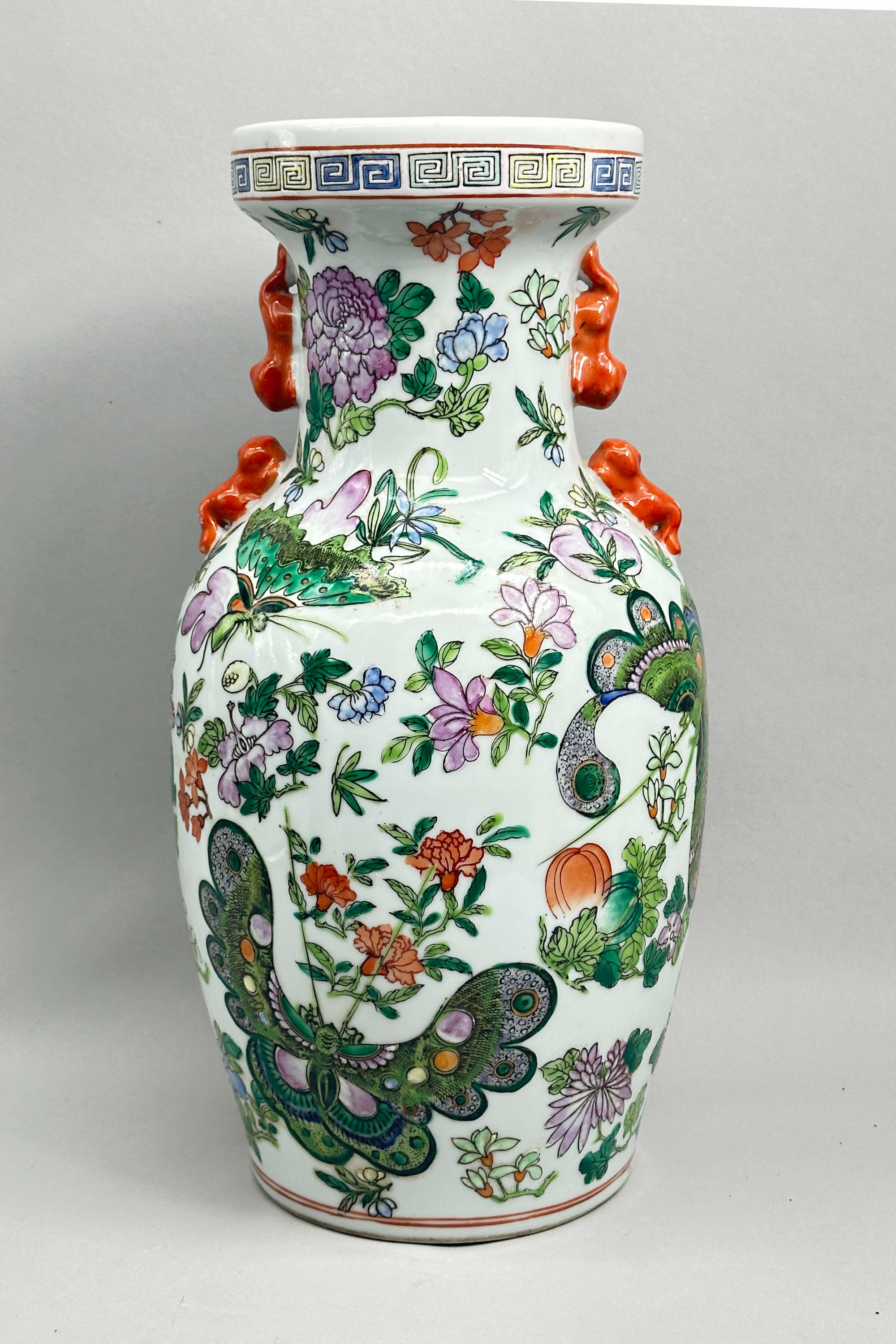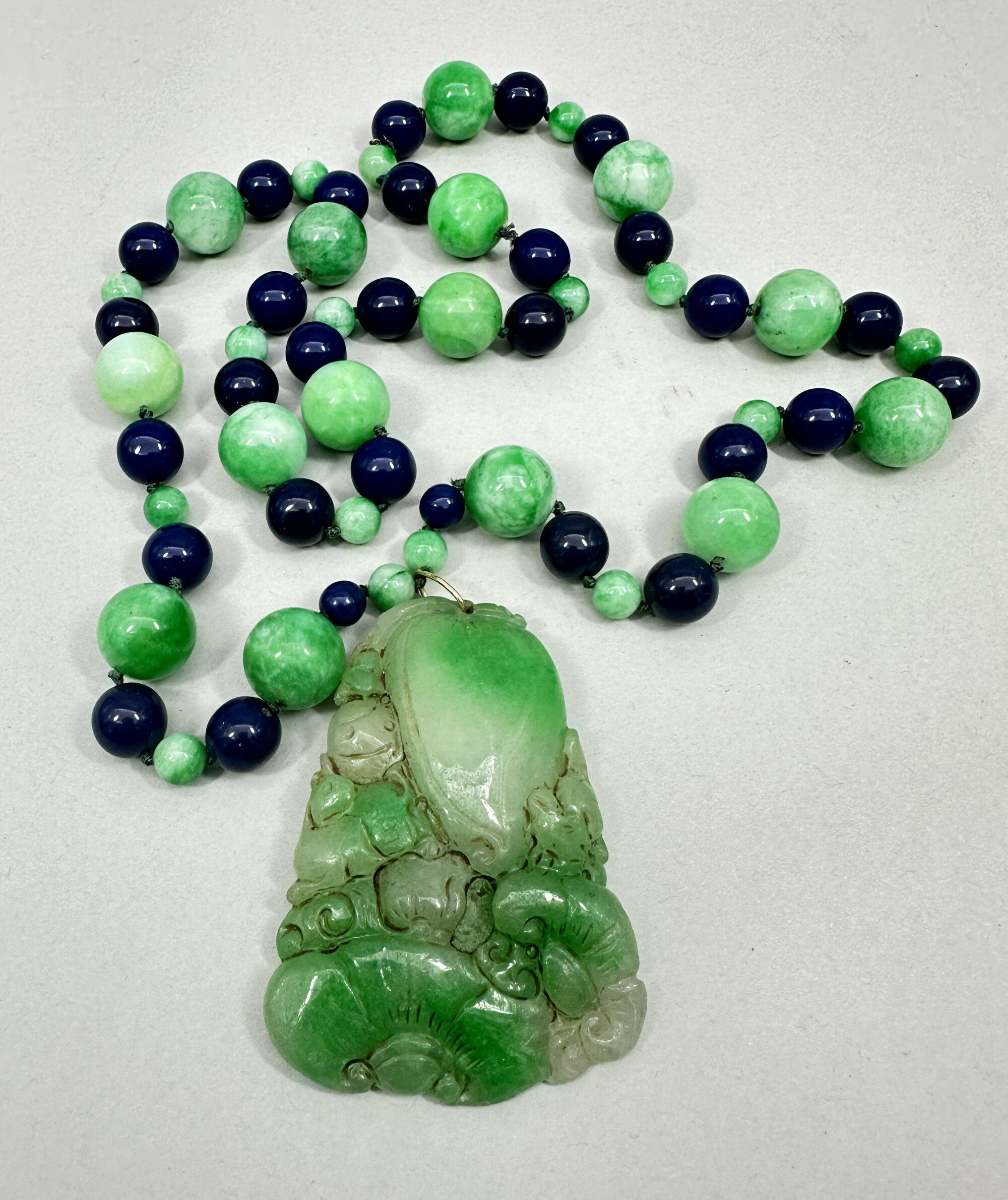
Beautiful long jade necklace with lapis lazuli and large carved jade pendant
Price: £950
Decorative pair of Chinese ceramic figures of children, Yunu and Jintong , late C20th
Price: £45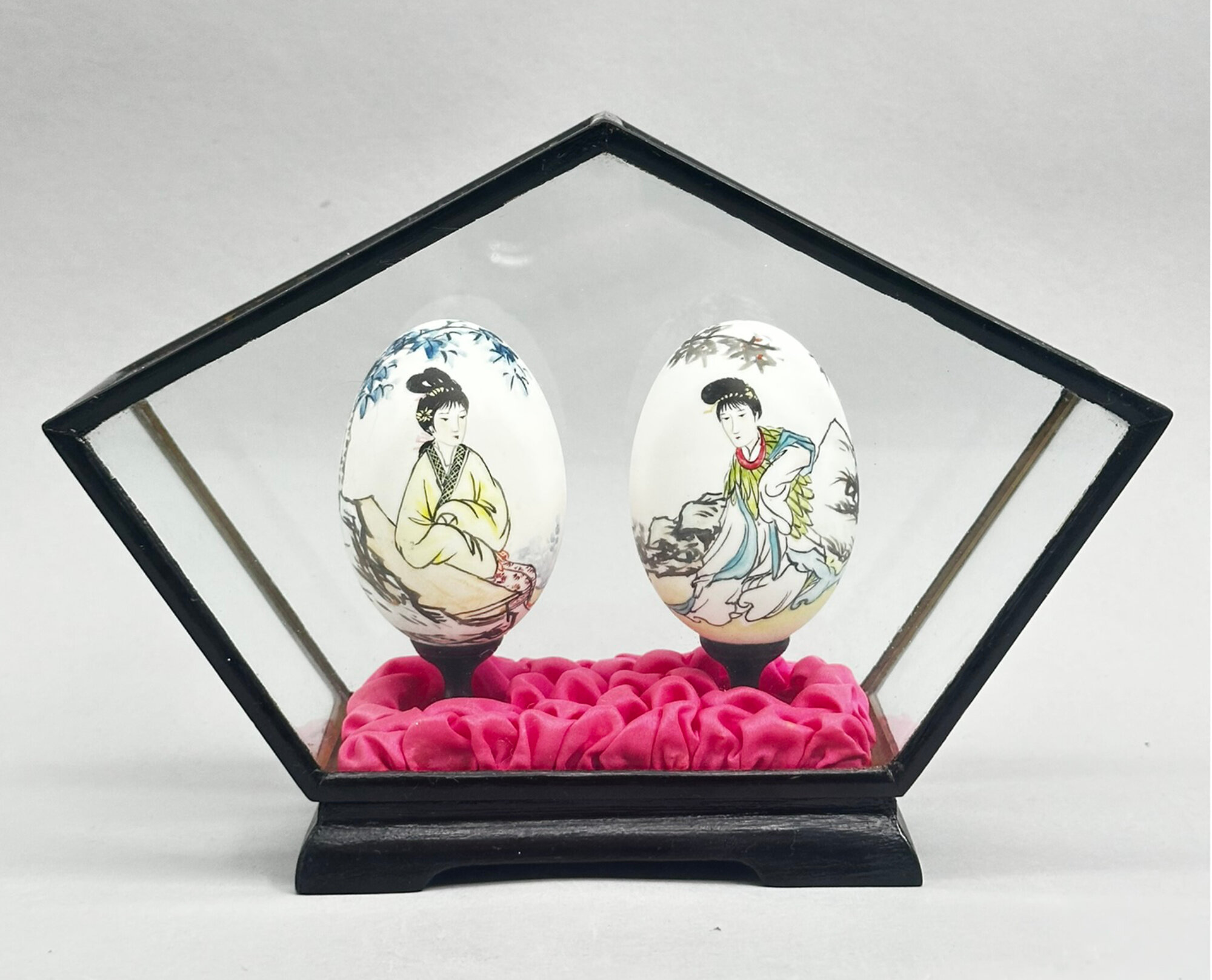
Pair of Chinese Hand Painted Eggs in Case, 1970s
Price: £25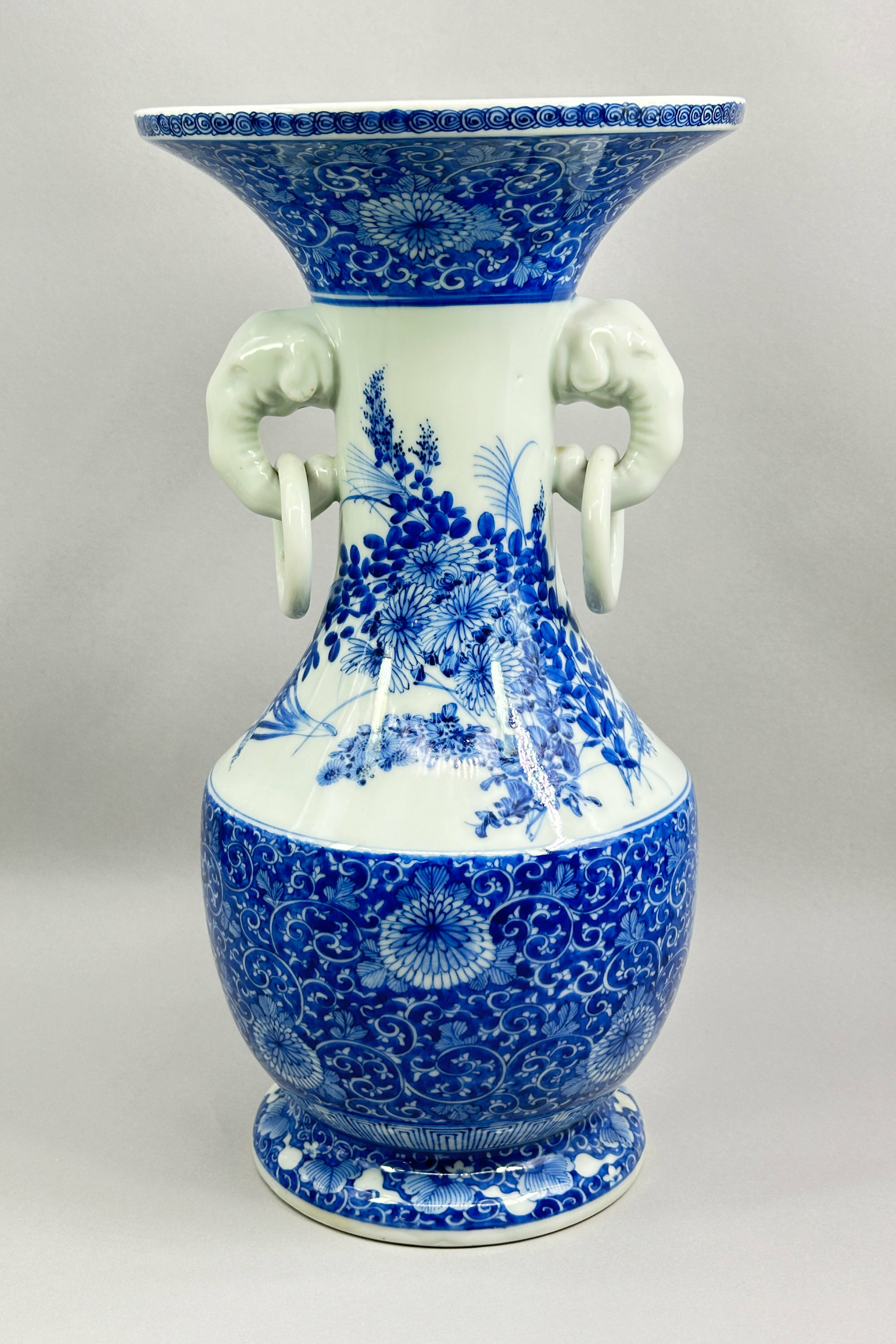
Japanese Seto Ware Blue and White Vase, late C19th
Price: £450A fine quality Japanese porcelain vase, the ovoid body with a curved flaring foot and rising to a tall concave neck with a well defined shoulder, applied elephant and ring handles to the sides and a galleried rim, decorated in bright underglaze blue with two bands of stylised flowering chrysanthemum at the top and bottom between a continuous scene of flowering peony and chrysanthemum, the top rim with repeating whorl design on the exterior and stylised leaf design inside, the stepped base glazed white.
The kilns at Seto in the Aichi prefecture of Japan and situated close to Nagoya form one of the traditional ‘Nihon Rokkoyo’, the six old kilns of medieval Japan. The location of Seto was ideal for the production of ceramics with an abundance nearby of both porcelain clay and forests to provide firewood for the kilns. Production began as early as the Heian period (794-1185) and continued without a break thereafter, the earlier pieces being more pottery forms copying Chinese wares. It was in the early nineteenth century that the kilns turned to producing porcelains decorated in underglaze blue and white, a development initiated by the potter Tamikichi Kato who went to Arita to learn the techniques of its production there, returning to Seto in 1807. Production grew and developed and was directed towards the export market in the Meiji period (1868-1912) with Seto wares being displayed at the European and North American exhibitions and fairs. Their delicately painted designs of birds and flowers proved to be immensely popular and were, in their time, to influence Art Nouveau and Art Deco designs. Some of the forms produced were truly virtuoso creations including, besides vases, screens, jardinieres and even ceramic tables.
Signed pieces are known and besides Tamikichi Kato the distinguished potters included the Kichiemon brothers, Kato Chuji and Kawamoto Jihyoe, and Kawamoto Hansuke. But not all the best pieces carried an artist’s signature as this vase well demonstrates. Formed from fine quality clay, as can be seen from the foot rim (image 10), the complex shape with its spreading base, angled shoulder and galleried rim would have been difficult to create. The handles show remarkable skill with the rings somehow formed so as to hang loose (presumably some form of kiln waster technique was used). The detail and artistry of the painting speaks for itself. Note in particular the shading effects on the peony flowers. While not perhaps an exhibition piece, this vase is definitely of exhibition quality and would be a worthy addition to a collection of nineteenth century Japanese ceramic art.

Translucent celadon jade recumbent horse
Price: £25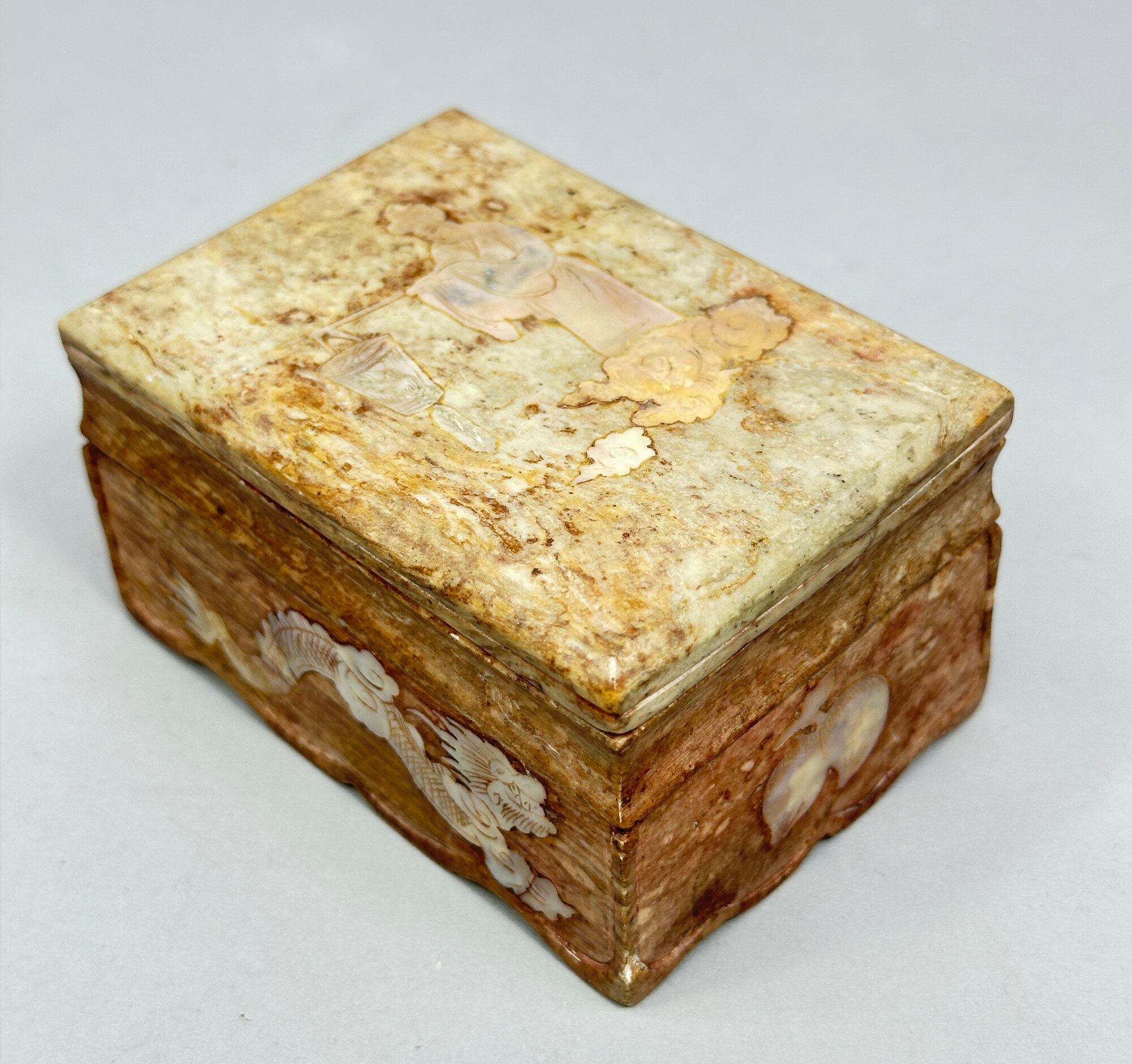
Chinese Soapstone Box and Cover with Mother of Pearl Inlay, C20th
Price: £55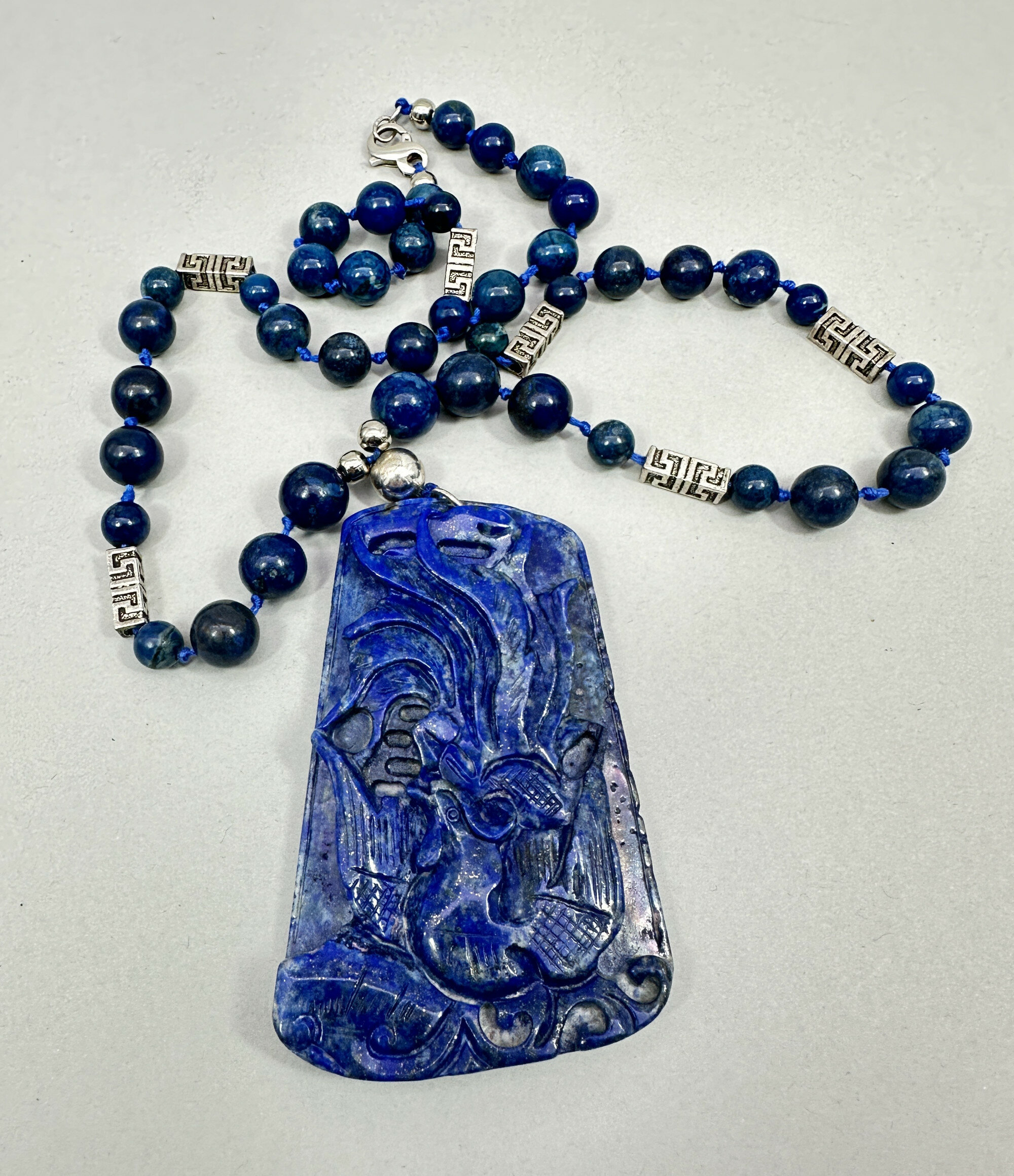
Massive lapis lazuli carved pendant necklace
Price: £125
Striking Art Deco jade necklace
Price: £150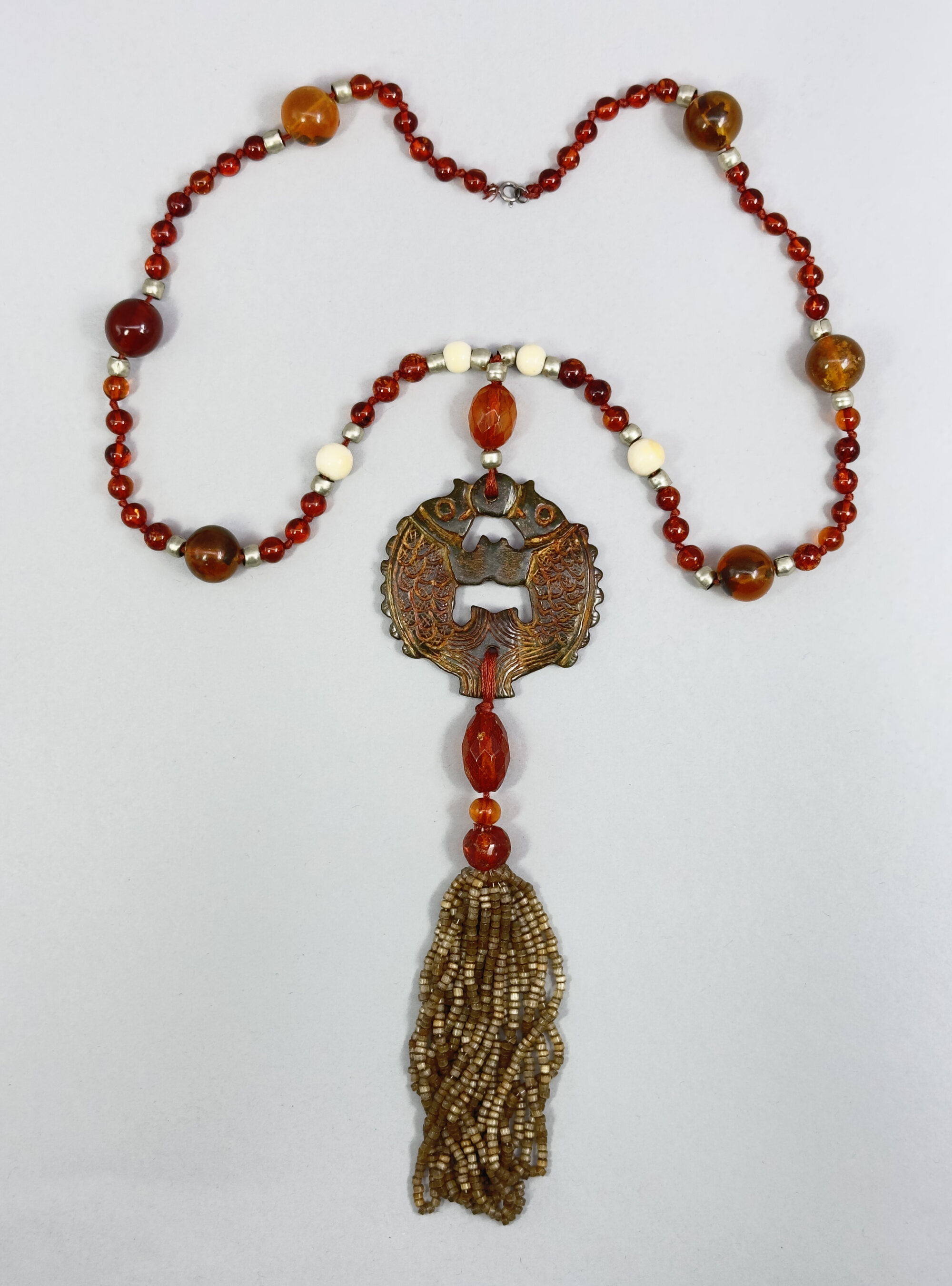
Necklace with soapstone pendant and amber beads
Price: £65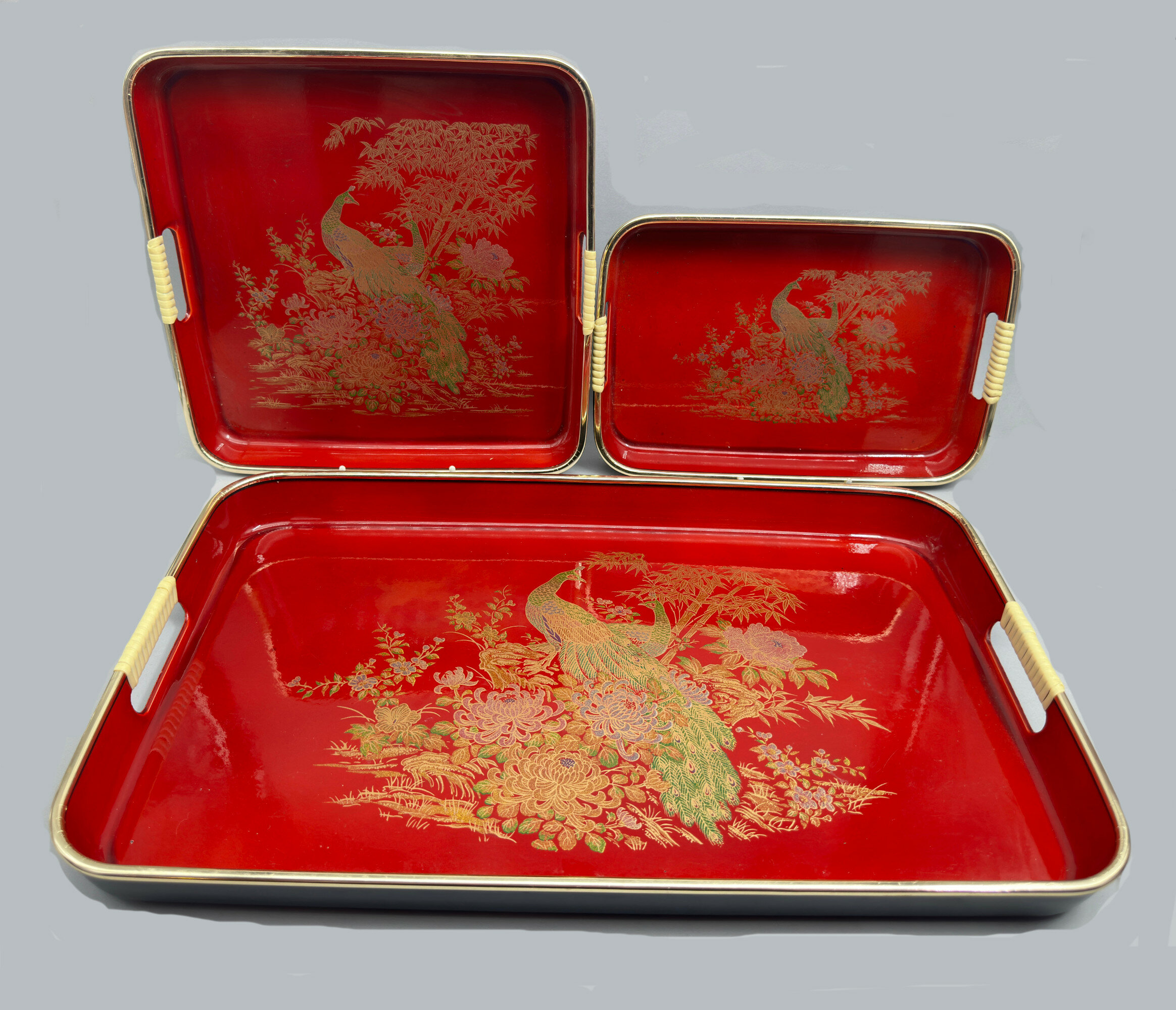
Set of Three Japanese Lacquer Nesting Trays, mid to late C20th
Price: £45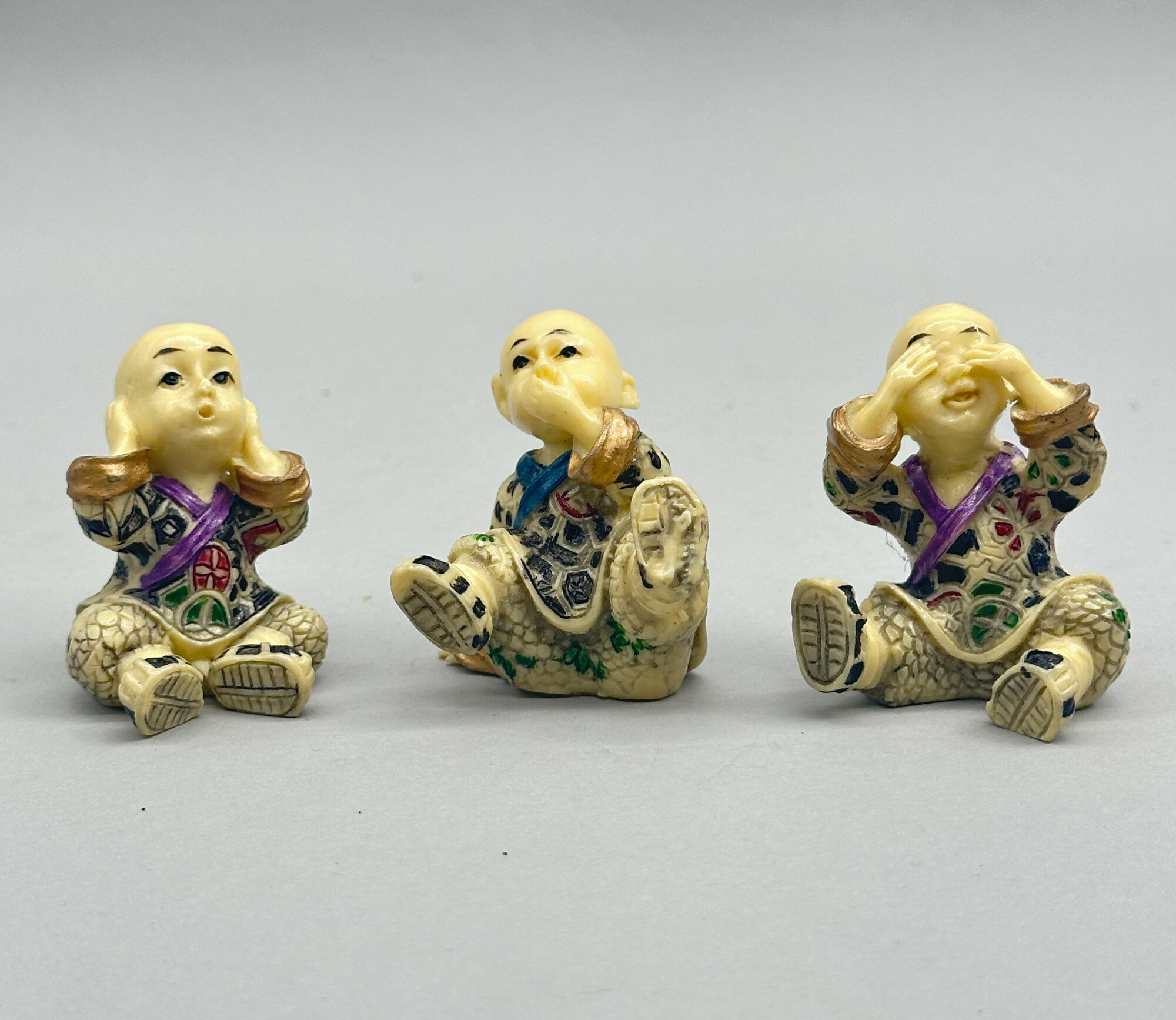
Set of Three Celluloid Figures of Monks, Japanese, first half C20th
Price: £45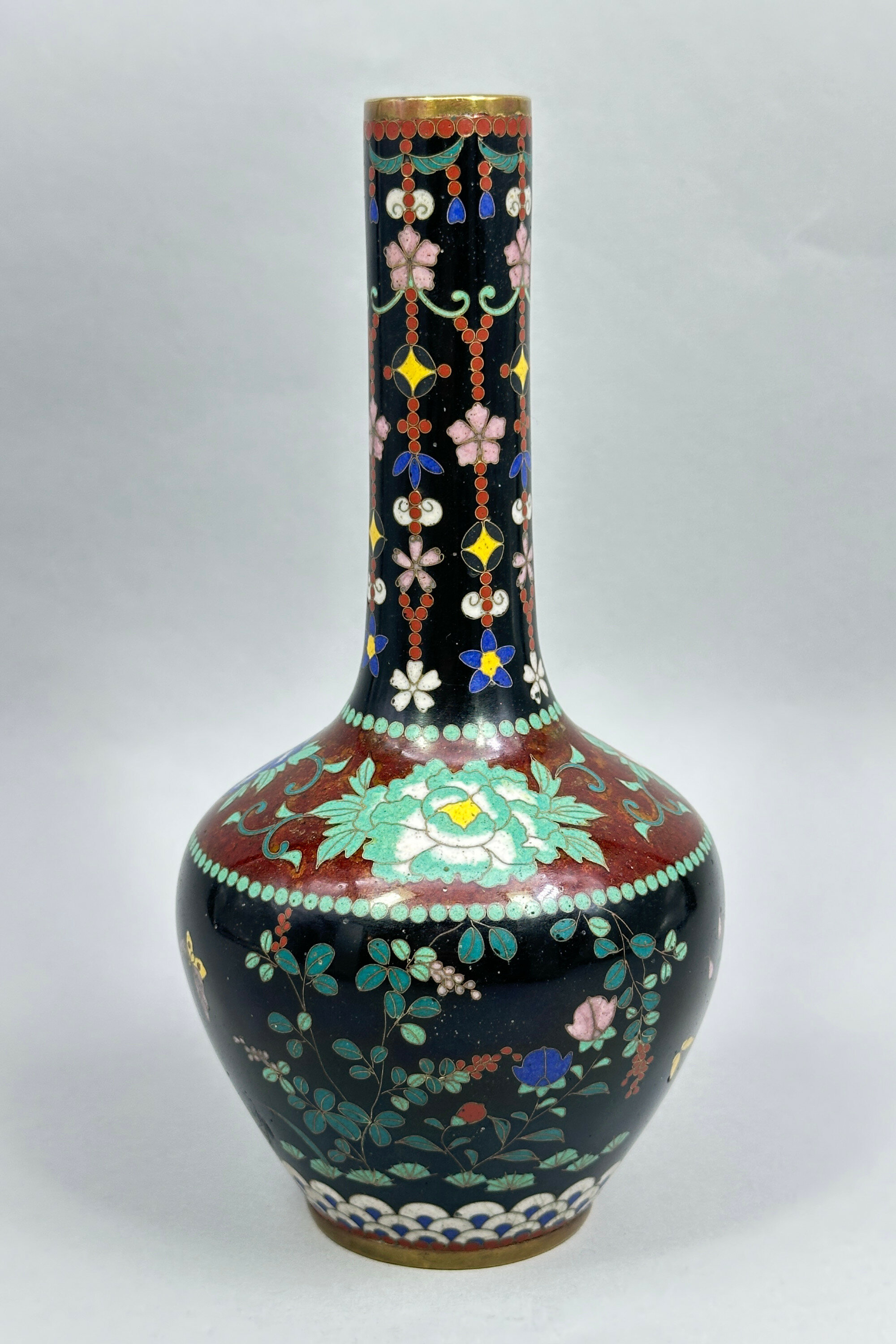
Fine quality Japanese Cloisonne bottle form Vase with black ground, late C19th
Price: £45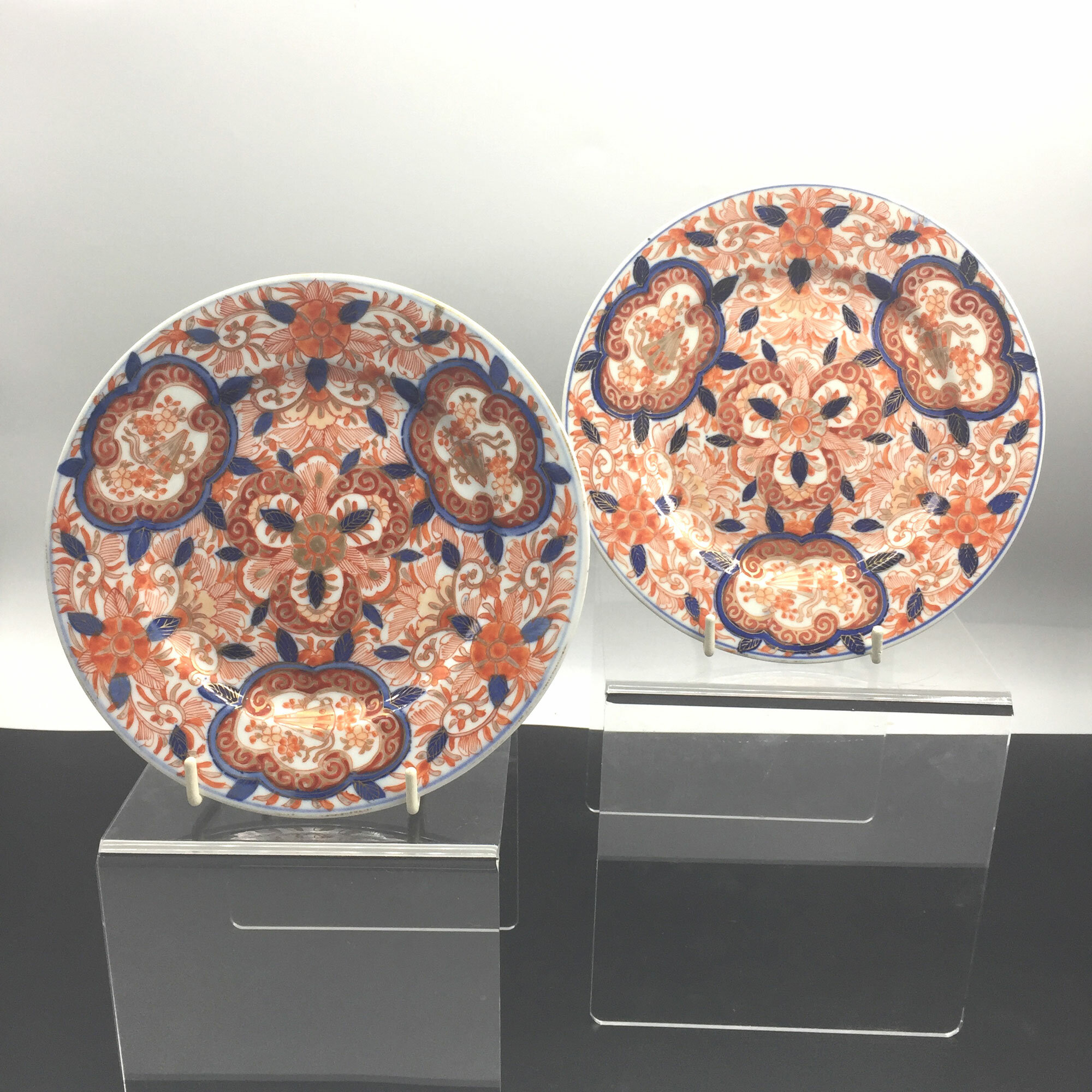
Pair of Japanese Imari Plates, Meiji Period circa 1880
Price: £150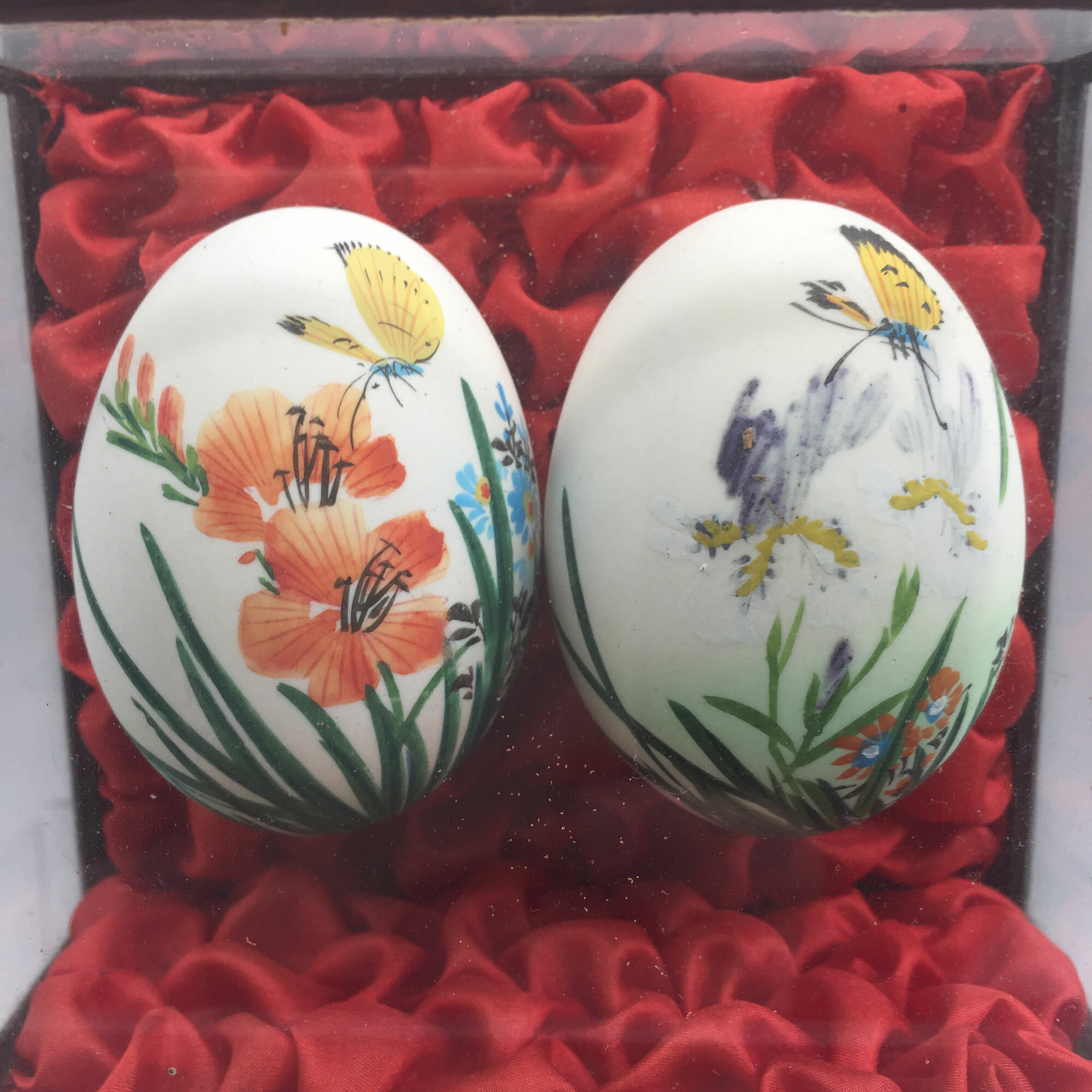
Set of two vintage Chinese painted eggs in glass display boxes
Price: £25
Very fine pair of vintage Chinese painted eggs in a pentagonal glass case
Price: £25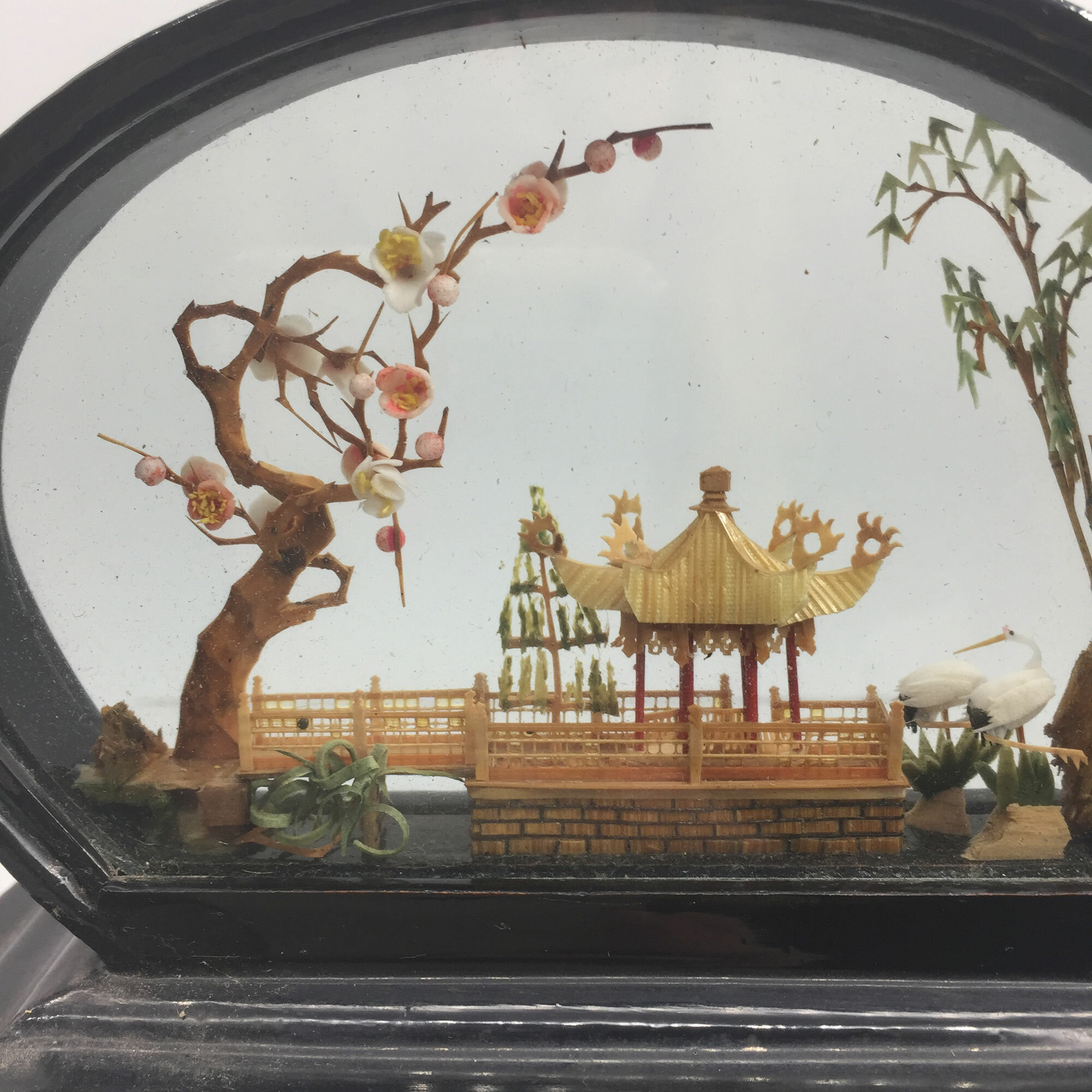
Lot of two vintage Chinese miniature Cork Groups
Price: £25
Lot of 3 vintage Chinese miniature cork groups
Price: £25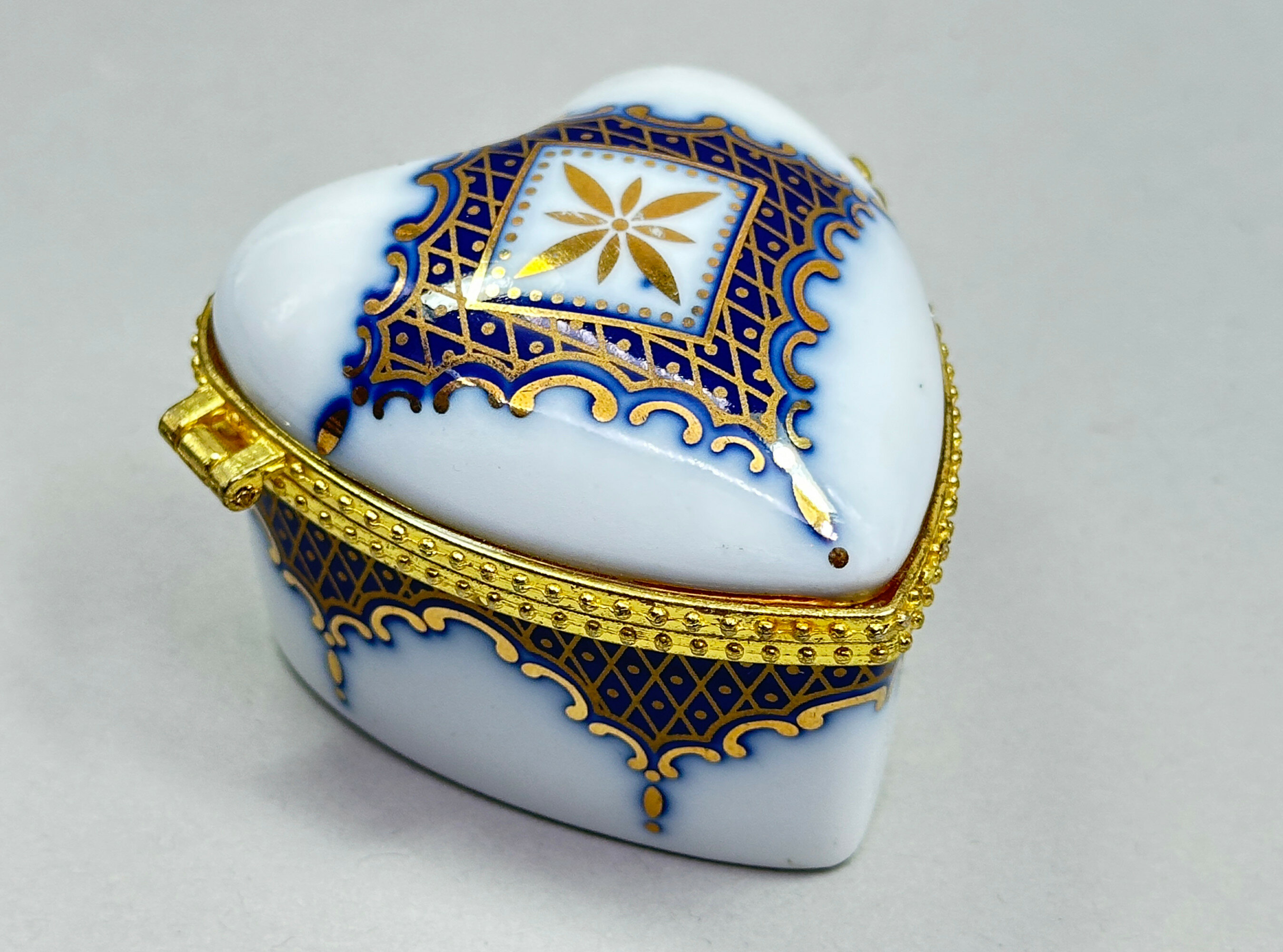
Oriental porcelain European Style Heart Shape Box and Cover, OC & CO, late C20th
Price: £15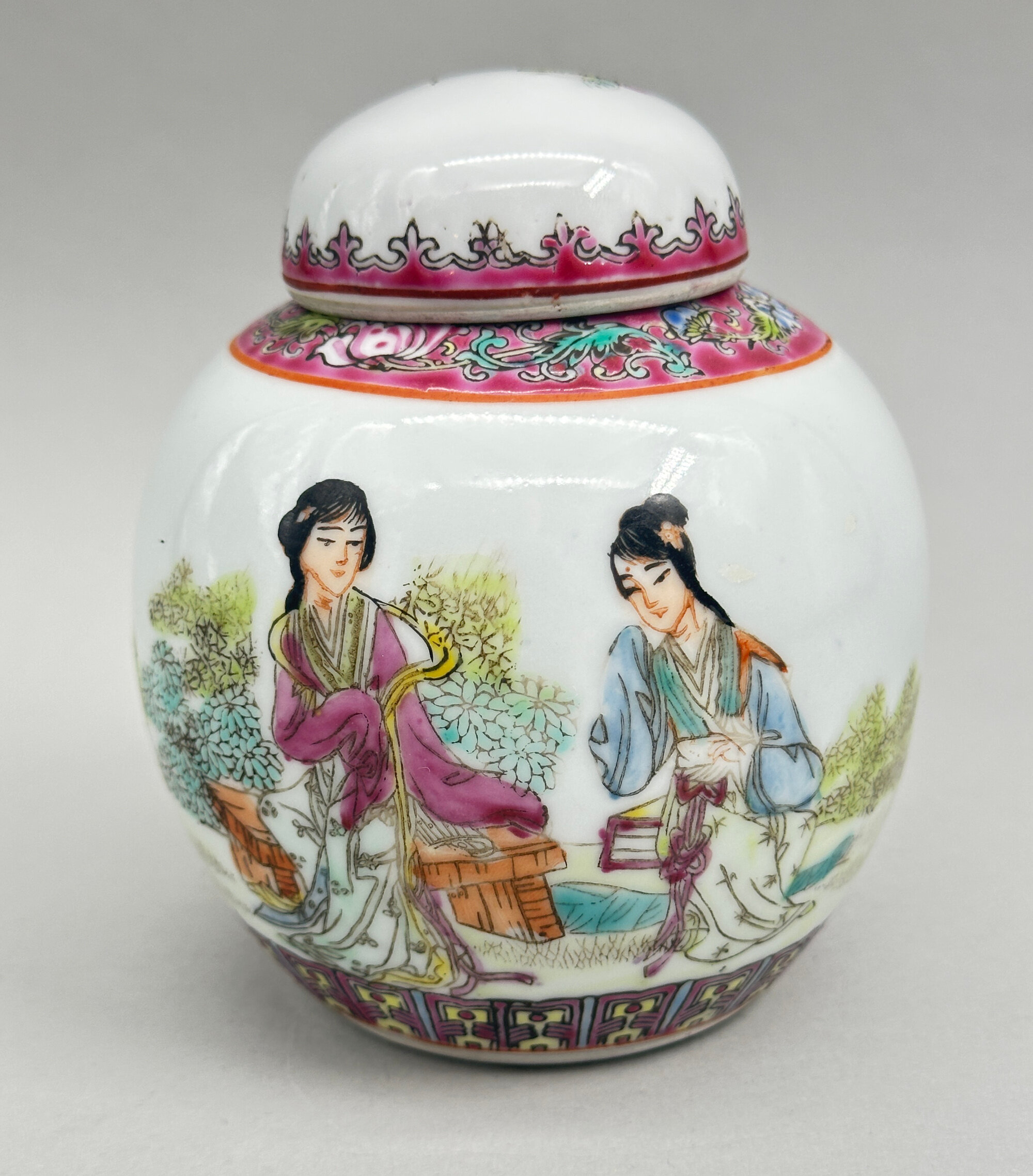
Chinese Republican Style small Famille Rose Ginger Jar and Cover, late c20th
Price: £20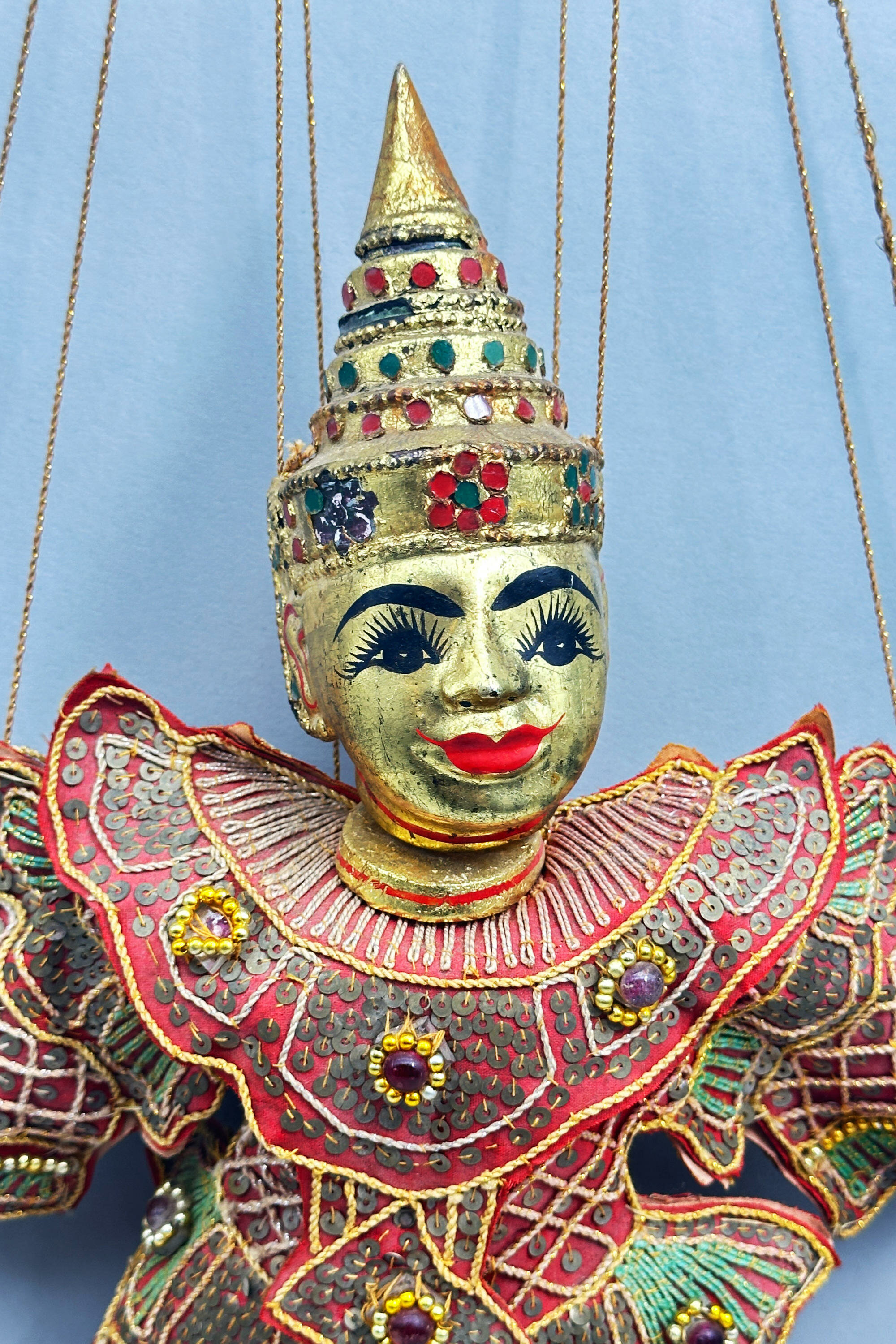
Marionette Figure of a Prince, probably Burmese mid C20th
Price: £45The style of the dress suggests Burma which has a tradition of marionette puppetry (marionettes are a specific form of puppet where the figure is controlled by strings or rods) dating back to the late eighteenth century and still popular today with visitors to the country, now called Myanmar. Termed ‘Yoke thé’, the Burmese marionette tradition allowed political commentary under the guise of of an entertainment display. The standard ‘troupe’ comprised twenty seven characters, both animal and human, and this male figure is probably the ‘King’ (‘Mintayar gyi’). Dating is probably to the mid C20th and a little earlier than the female marionette figure also included in this sale. This figure is rather more majestic as befits his regal status.
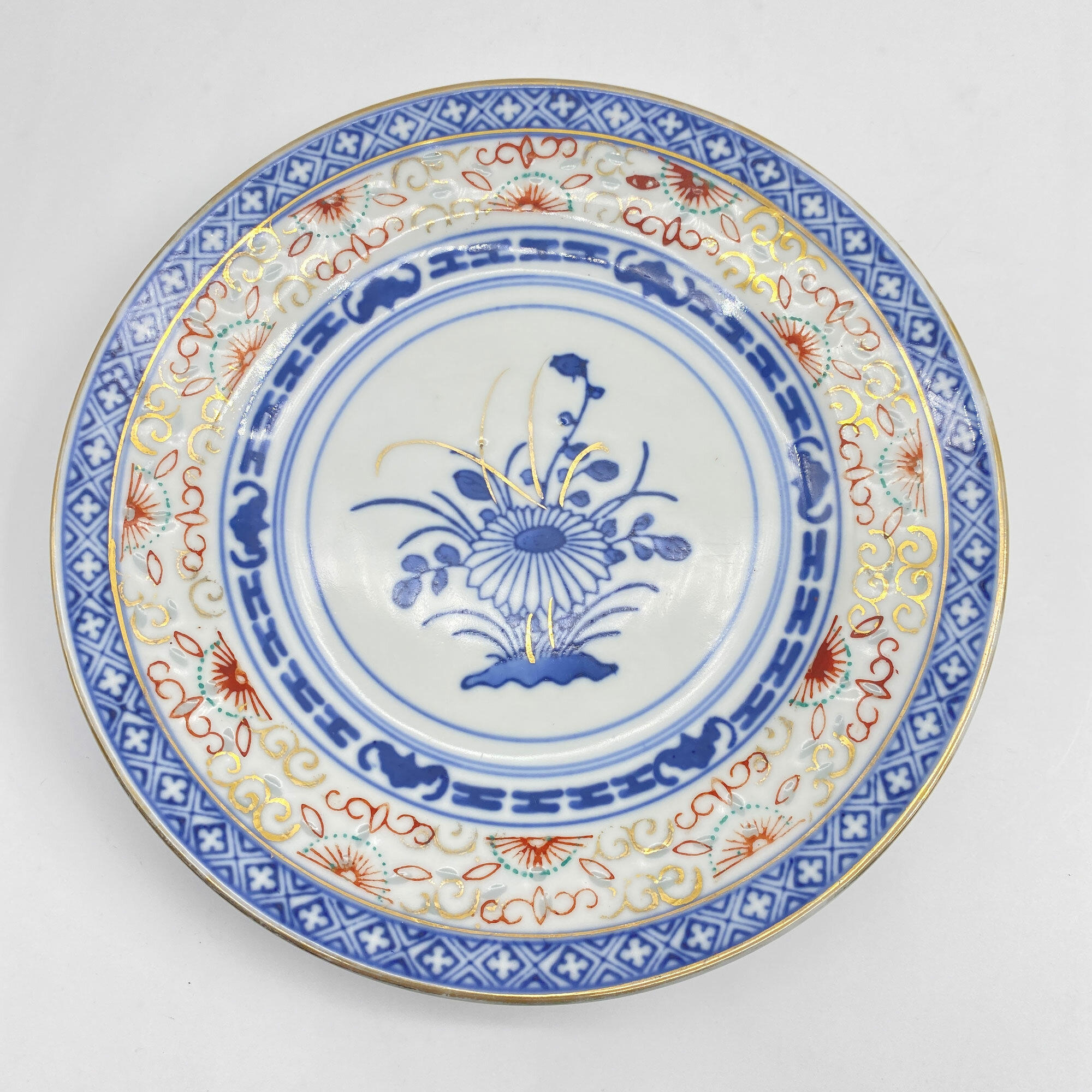
Chinese Rice Grain Plate decorated in underglaze blue, iron red and gold, circa 1900
Price: £45
Chinese Famille Rose Bowl decorated with ladies, Qianlong mark, Republican period
Price: £45PLEASE NOTE THAT THERE IS FREE UK SHIPPING ON THIS ITEM. For international buyers the shipping cost will be reduced by the UK shipping cost, so don't worry if you are outside the UK, you still receive this benefit!
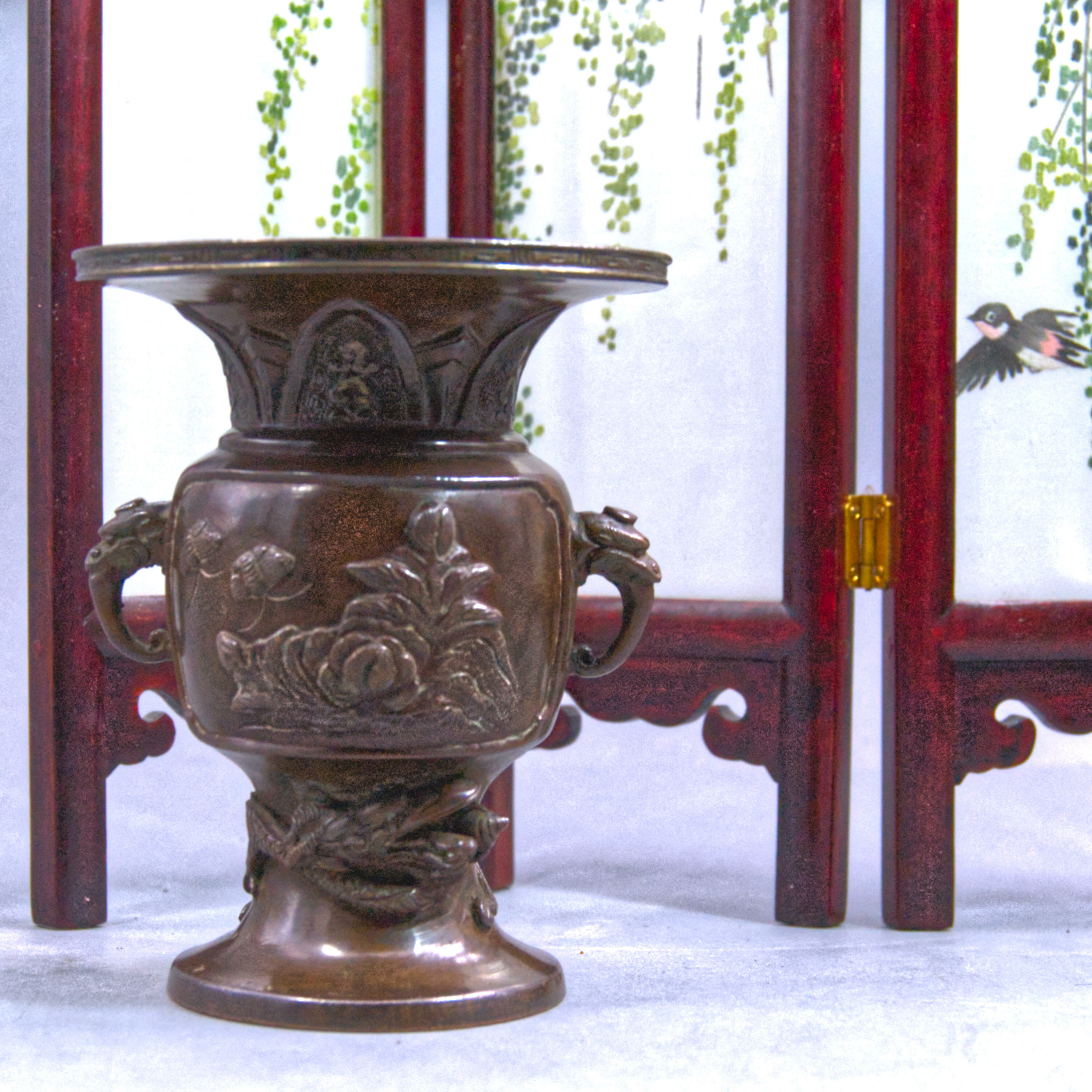
Small Chinese Bronze Vase of Ku Form with Elephant Head Handles, Qing Dynasty circa 1800
Price: £75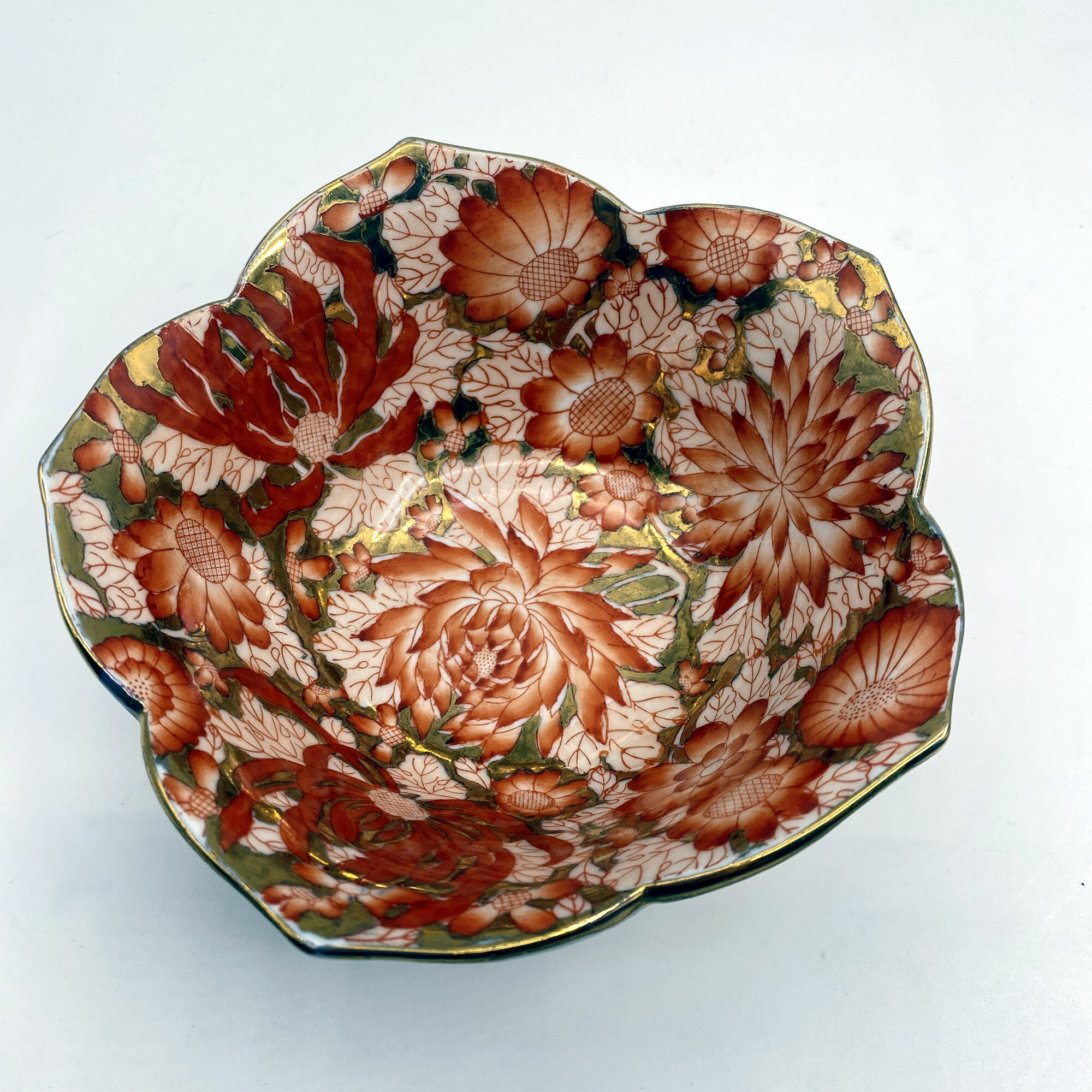
Unusual Chinese Bowl decorated in the Japanese Kutani Style, early 20th Century
Price: £45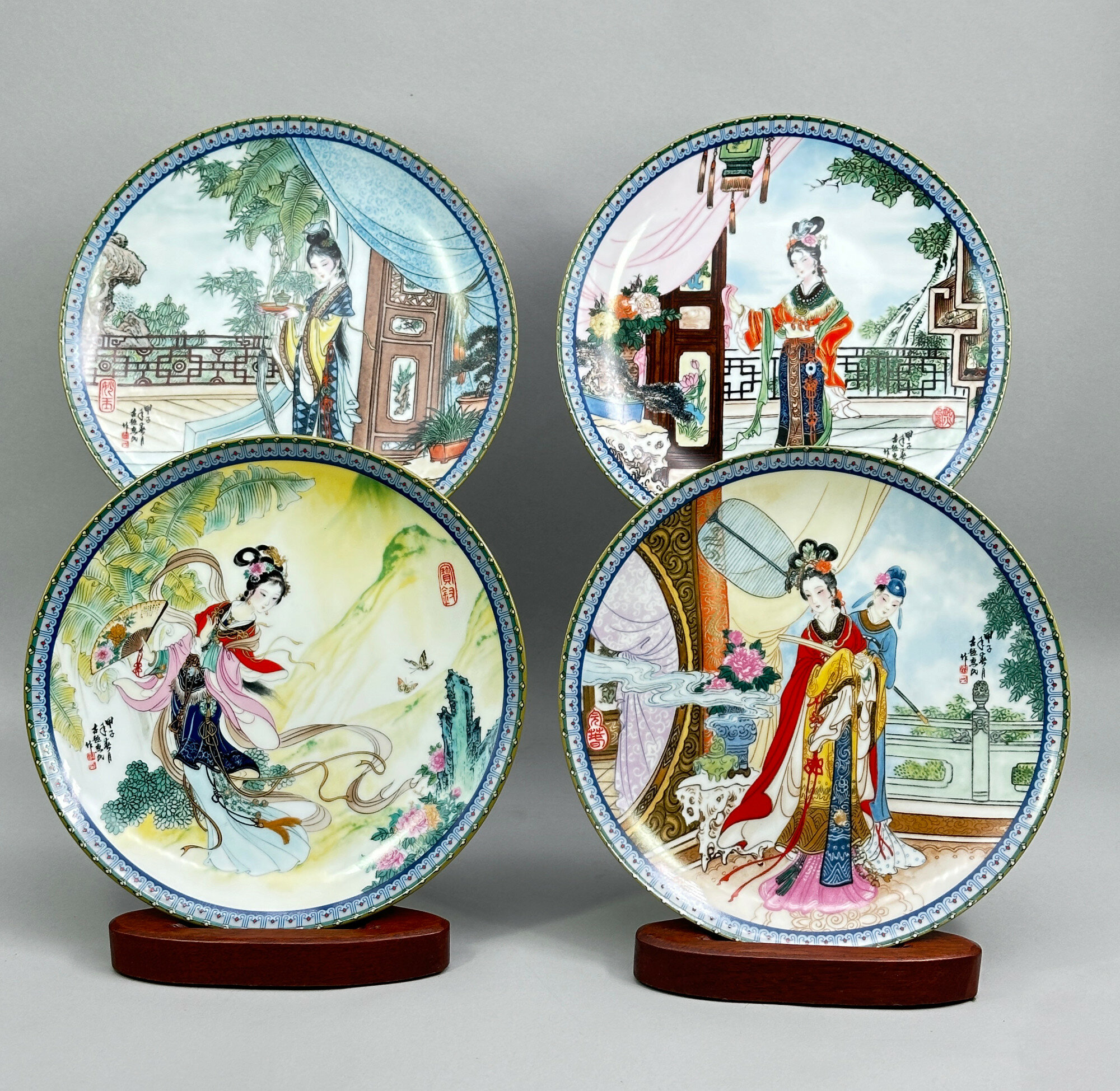
Set of Four Chinese Plates, Beauties of the Red Mansion, Jingdezhen, 1980s
Price: £75Please note that the stands are for display purposes only.

Chinese Straw Thread Picture on Silk, framed in original box, late C20th
Price: £45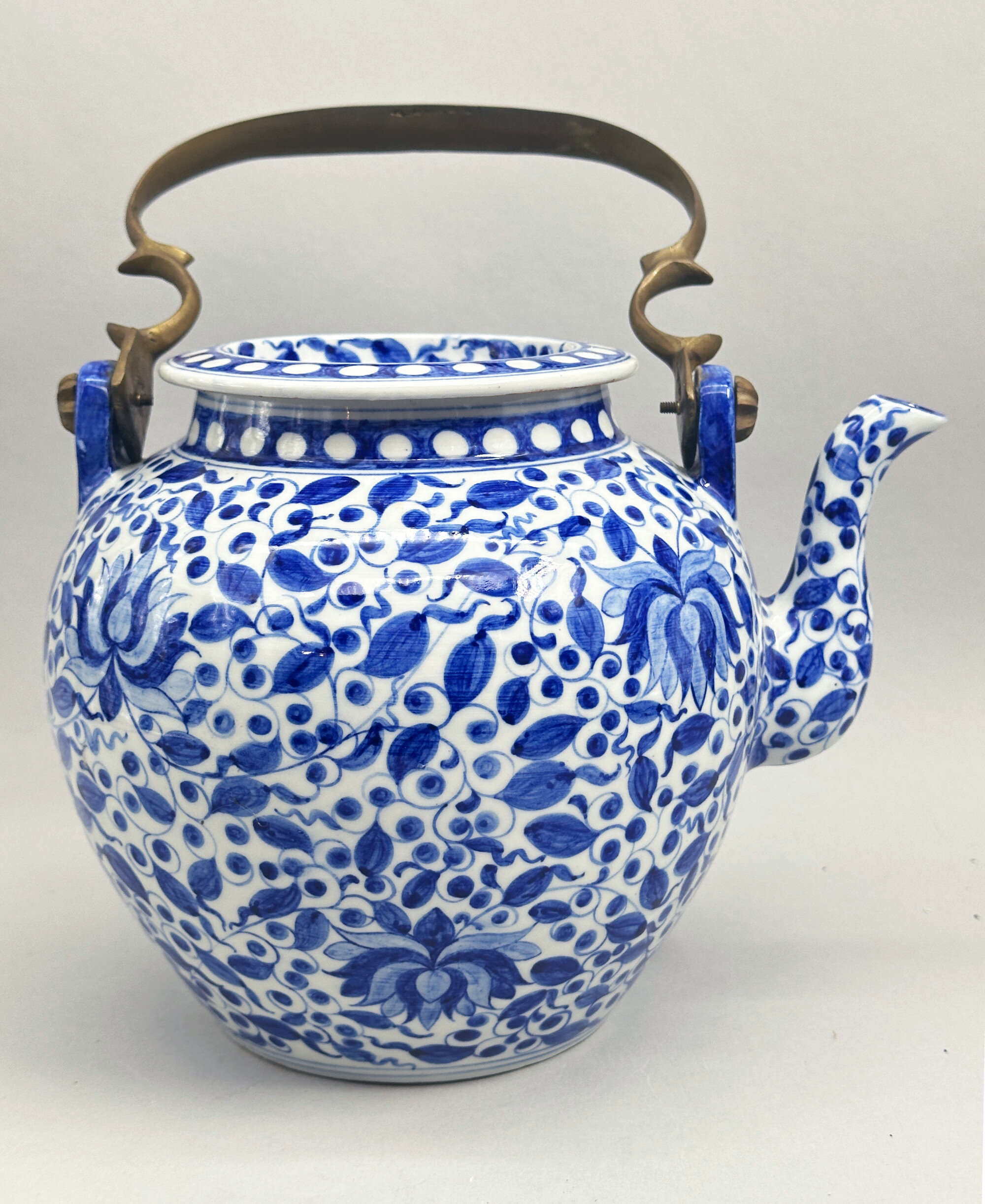
Exceptionally large Chinese Blue and White Teapot with metal handle, C19th
Price: £350The form here, without a ceramic handle but with an attached carrying handle, suggests a travelling teapot, a well known variation of the teapot type produced in China but rarely found on such an epic scale. Presumably this piece was intended for use at a rather large gathering or banquet so that a multitude of guests could be served at once! The paste of the footrim, style of decoration and clearly visible hand thrown potting rings (see images 8 and 9) all point to late nineteenth century work which is confirmed by the minute vertical lines seen on the exterior which are often found on blue and white pieces from that period. It is sometimes suggested that these brass handles, for similar examples can be found, were made in Thailand but there is little evidence for this. However, a local audience rather than an international one seems more than likely since there would have been little call for such a serving item in Western homes.
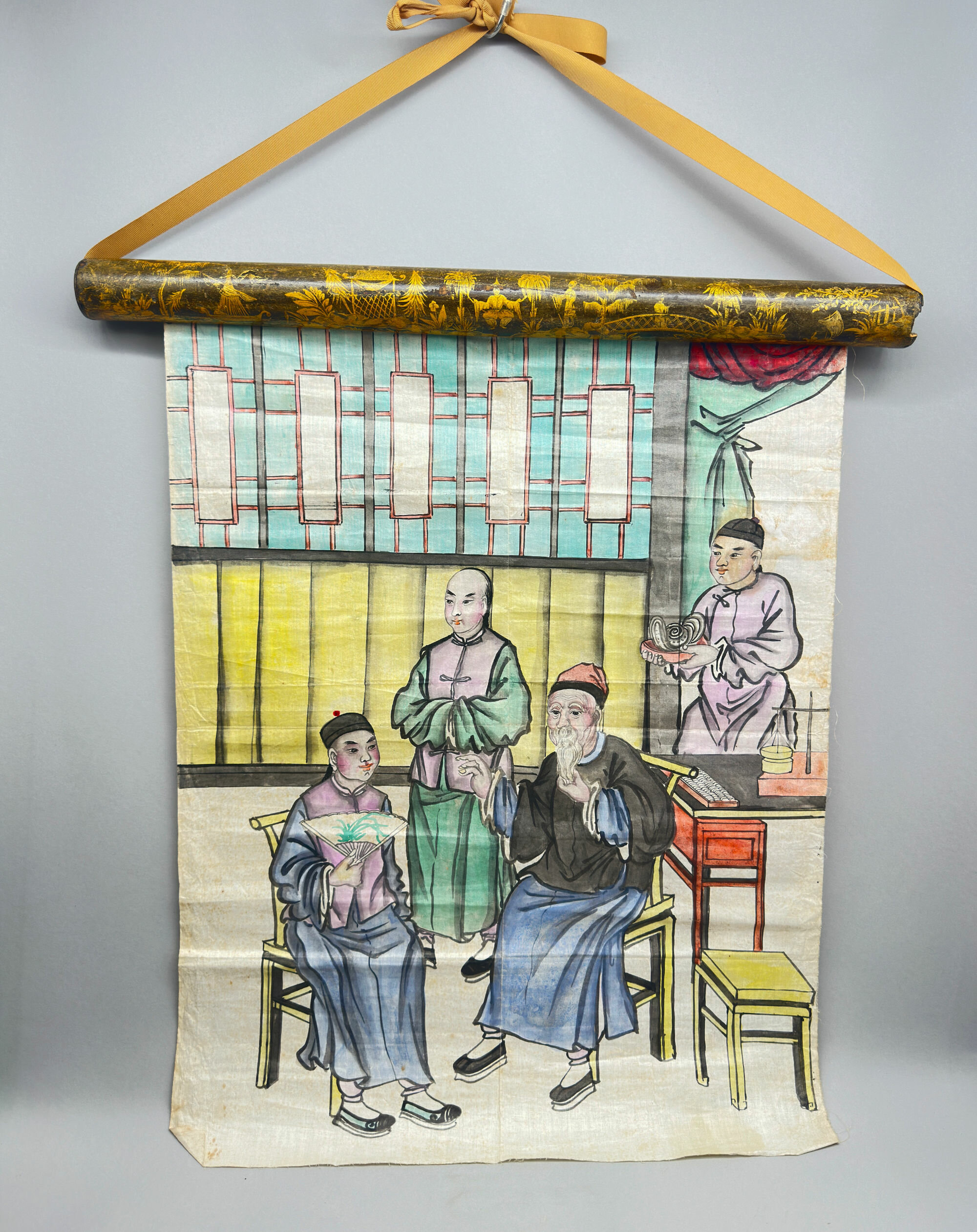
Chinese Scroll Painting of a Merchant and his Client, C20th
Price: £45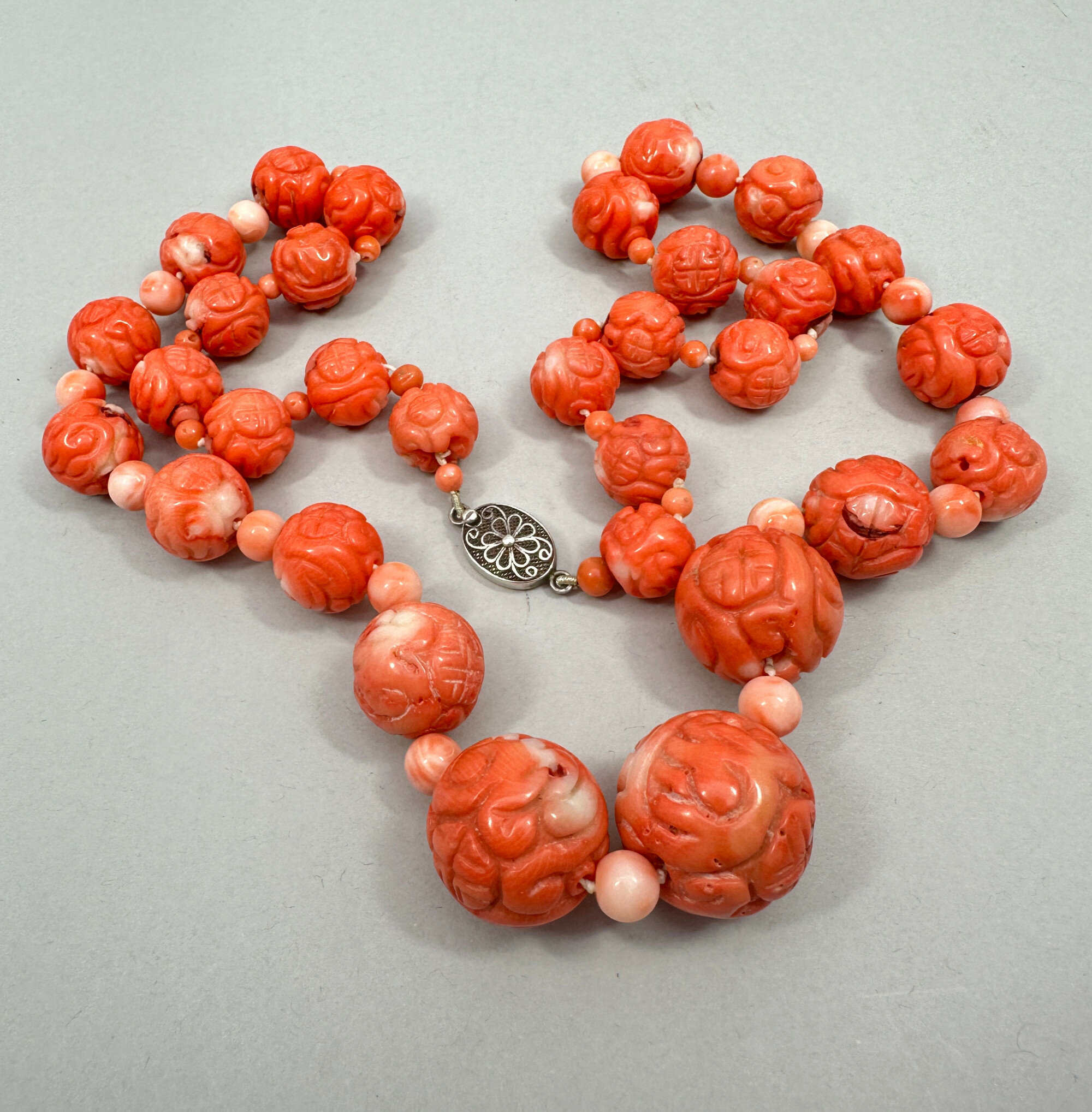
Outstanding strand of Chinese coral beads
Price: £150
Chinese Silver Bangle with Dragon Heads, C20th
Price: £45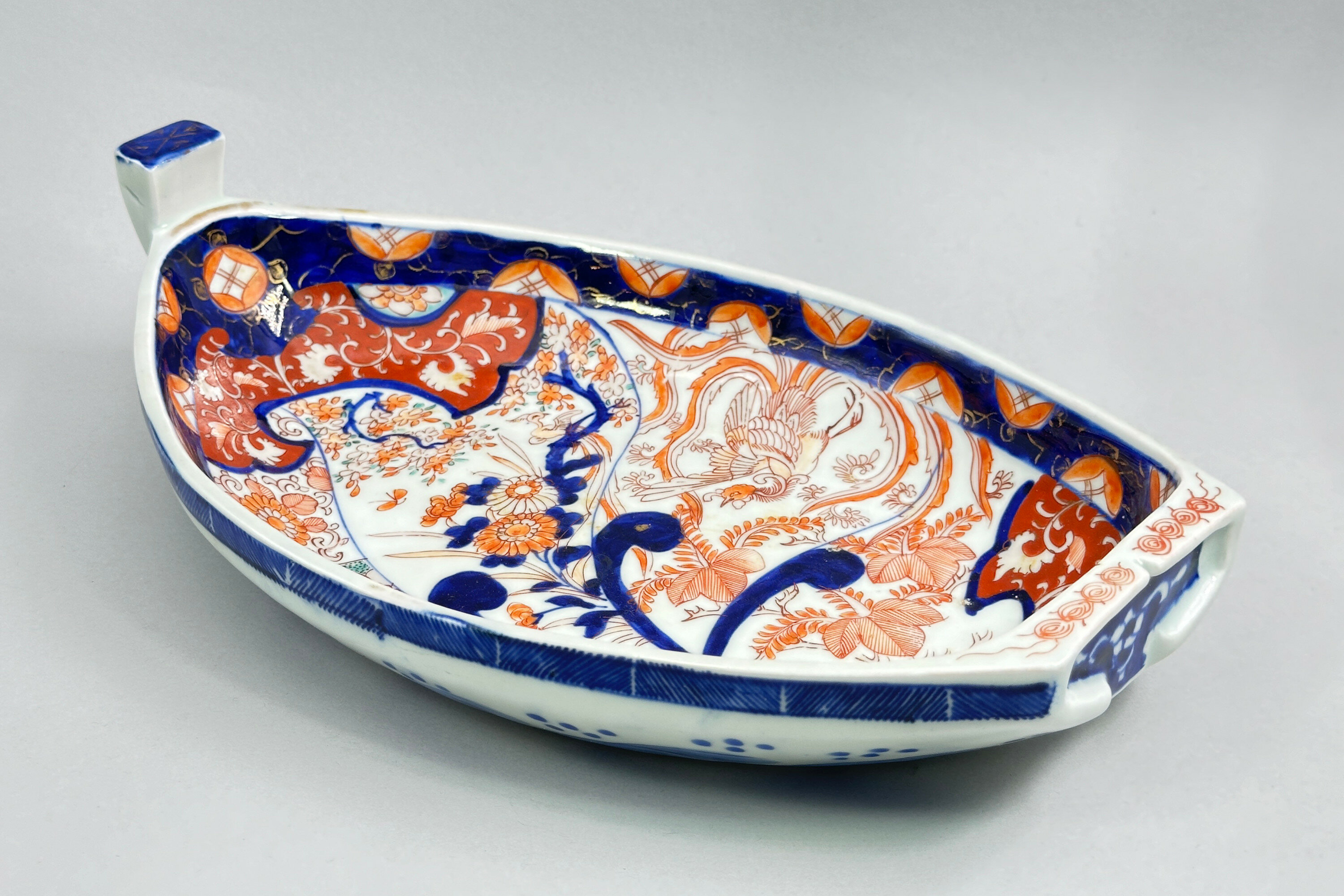
Japanese Imari Dish in the form of a Treasure Boat ‘Takarabune’, Meiji Period, circa 1900
Price: £250In Japanese folklore, the Takarabune or "Treasure Ship", is a mythical ship piloted through the heavens by the Seven Lucky Gods during the first three days of the New Year. Ceramic boat shape dishes were produced during the Meiji period (1868-1912) in both Arita and Imari porcelains. Paste of the foot rim and style of decoration suggest a circa date here towards the end of the nineteenth century.
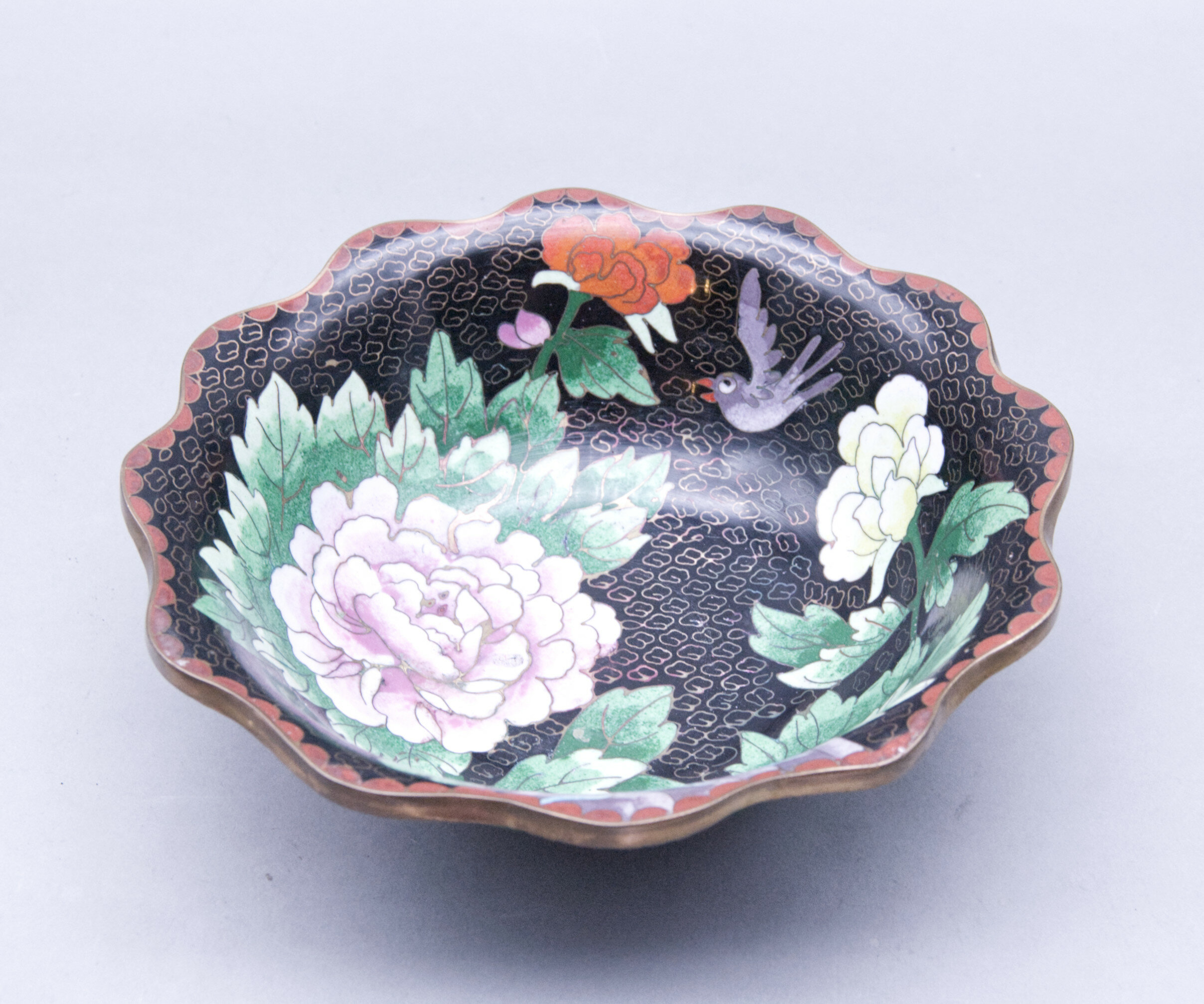
Chinese Cloisonné Bowl with a wavy edge, 20th Century
Price: £25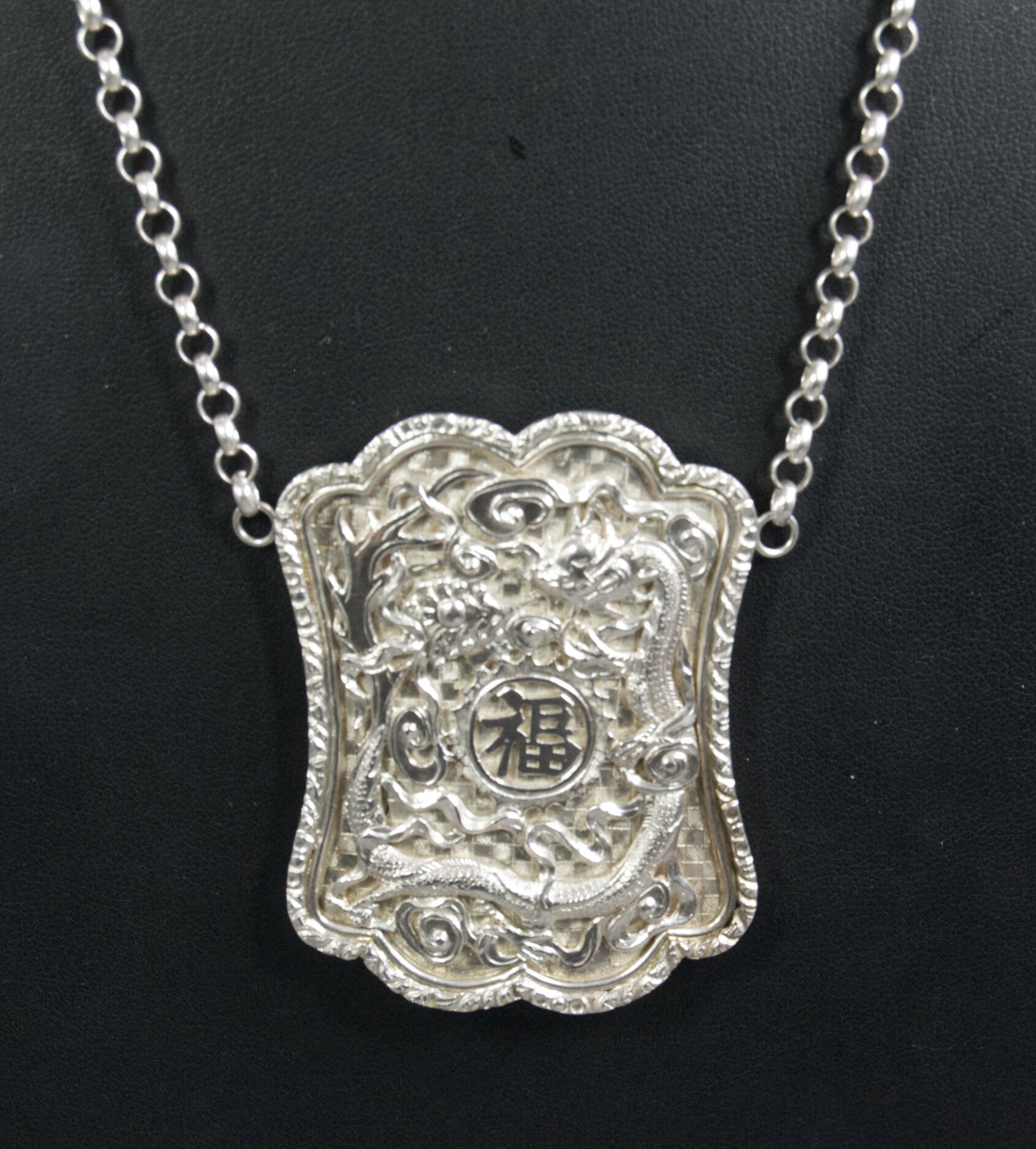
Art Deco Chinese Export silver Buckle later converted to a Necklace
Price: £125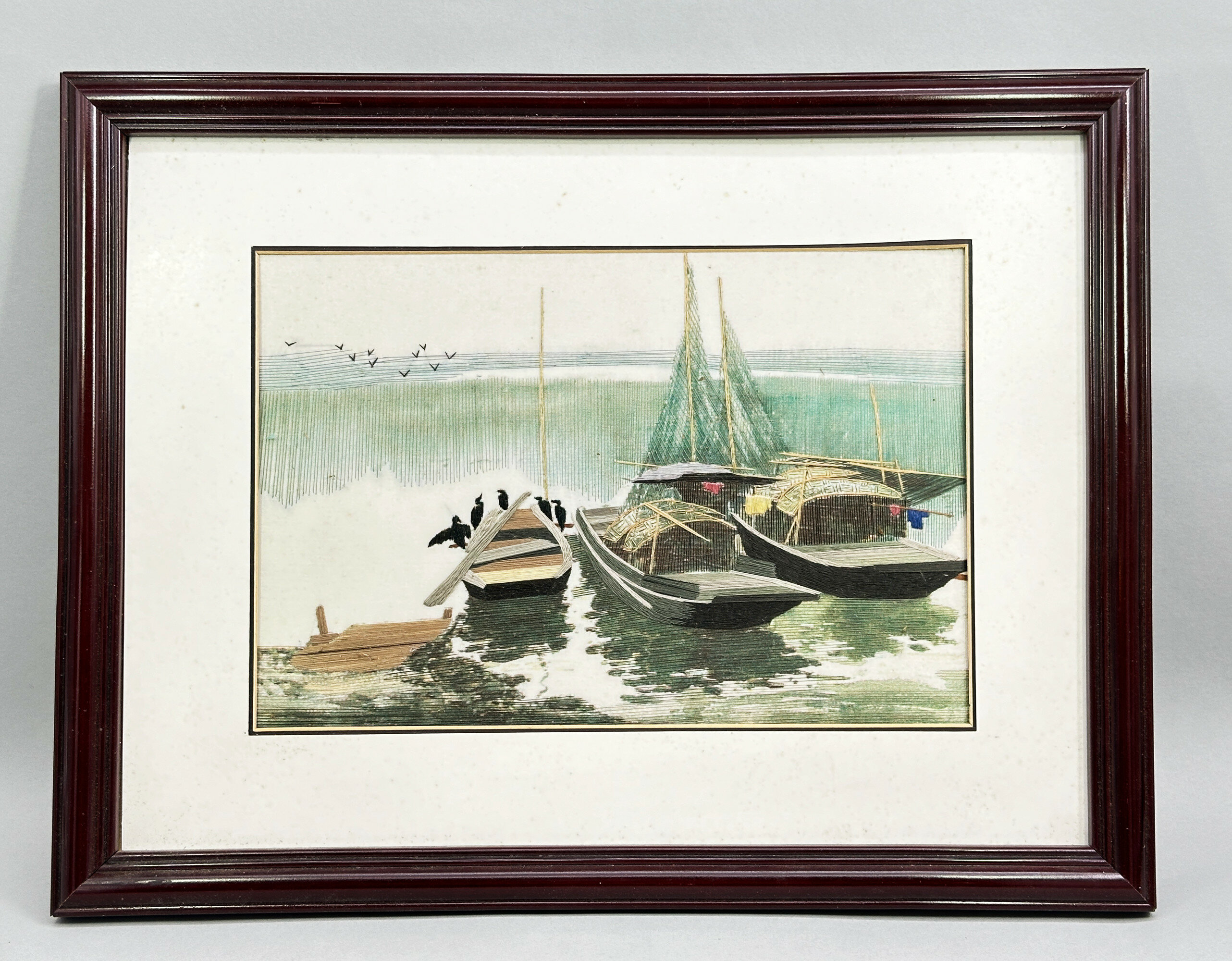
Chinese Straw Thread Picture on Silk, framed in original box, late C20th
Price: £45
Tibetan amulet necklace featuring Buddhist deity c1900
Price: £25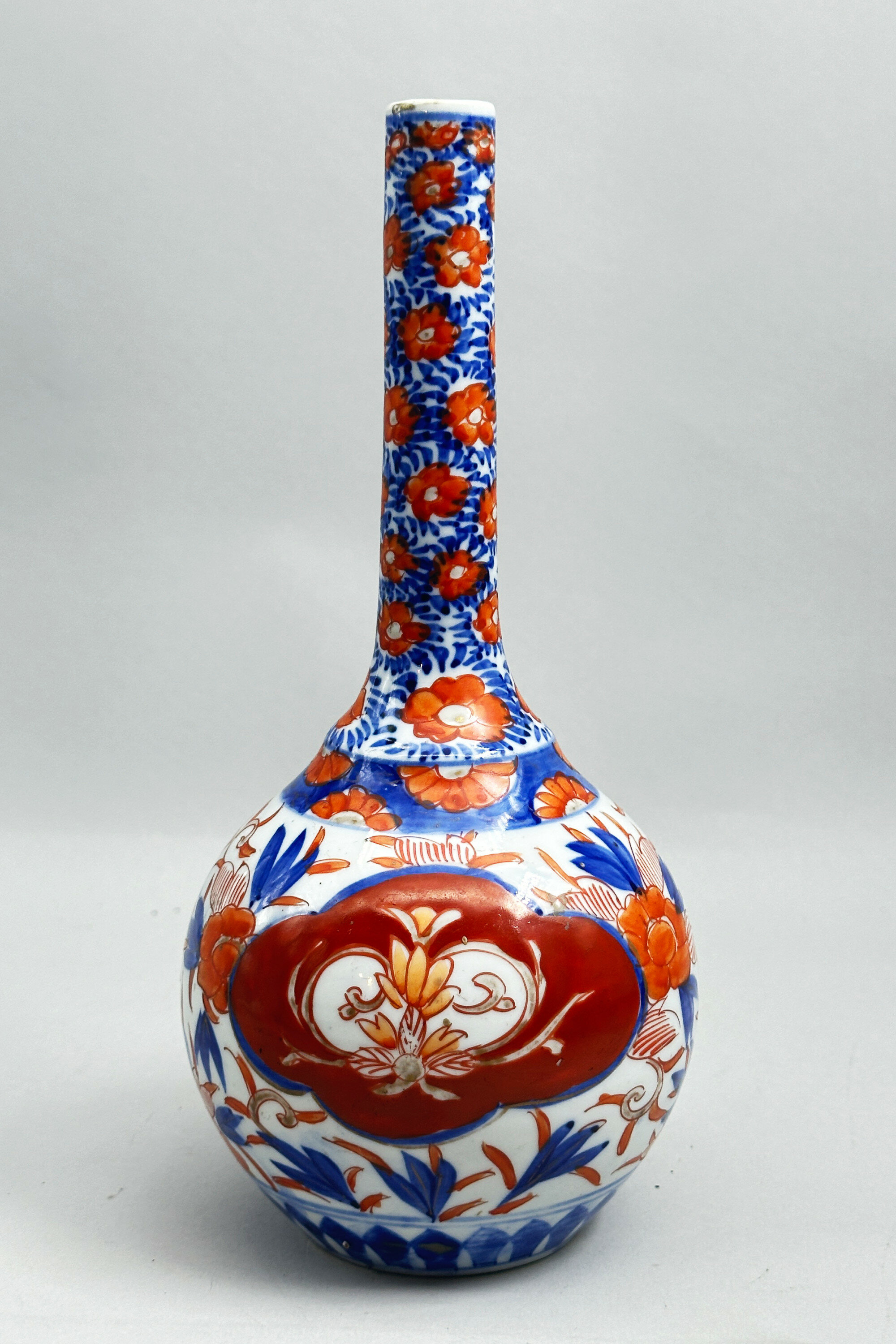
Japanese Imari Bottle Vase, circa 1900
Price: £30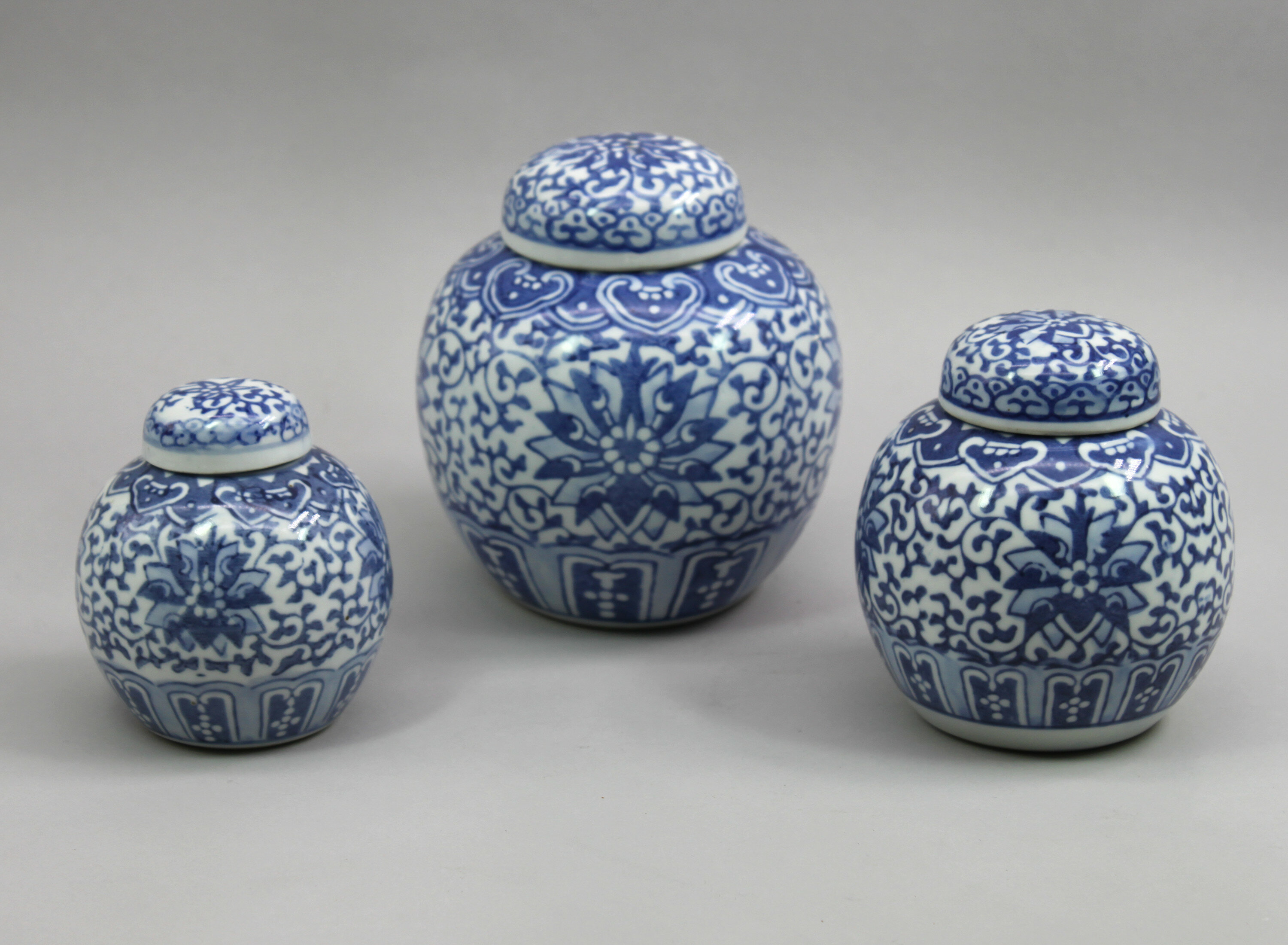
Graduated set of Three Chinese Blue and White Ginger Jars and Covers, 20th Century
Price: £45Although of relatively recent manufacture, the quality of these pieces continues the Chinese ceramic productions of the late nineteenth century and together they form an attractive decorative ensemble for the contemporary interior.

Three Chinese Canton Enamel Dishes, Nineteenth Century
Price: £45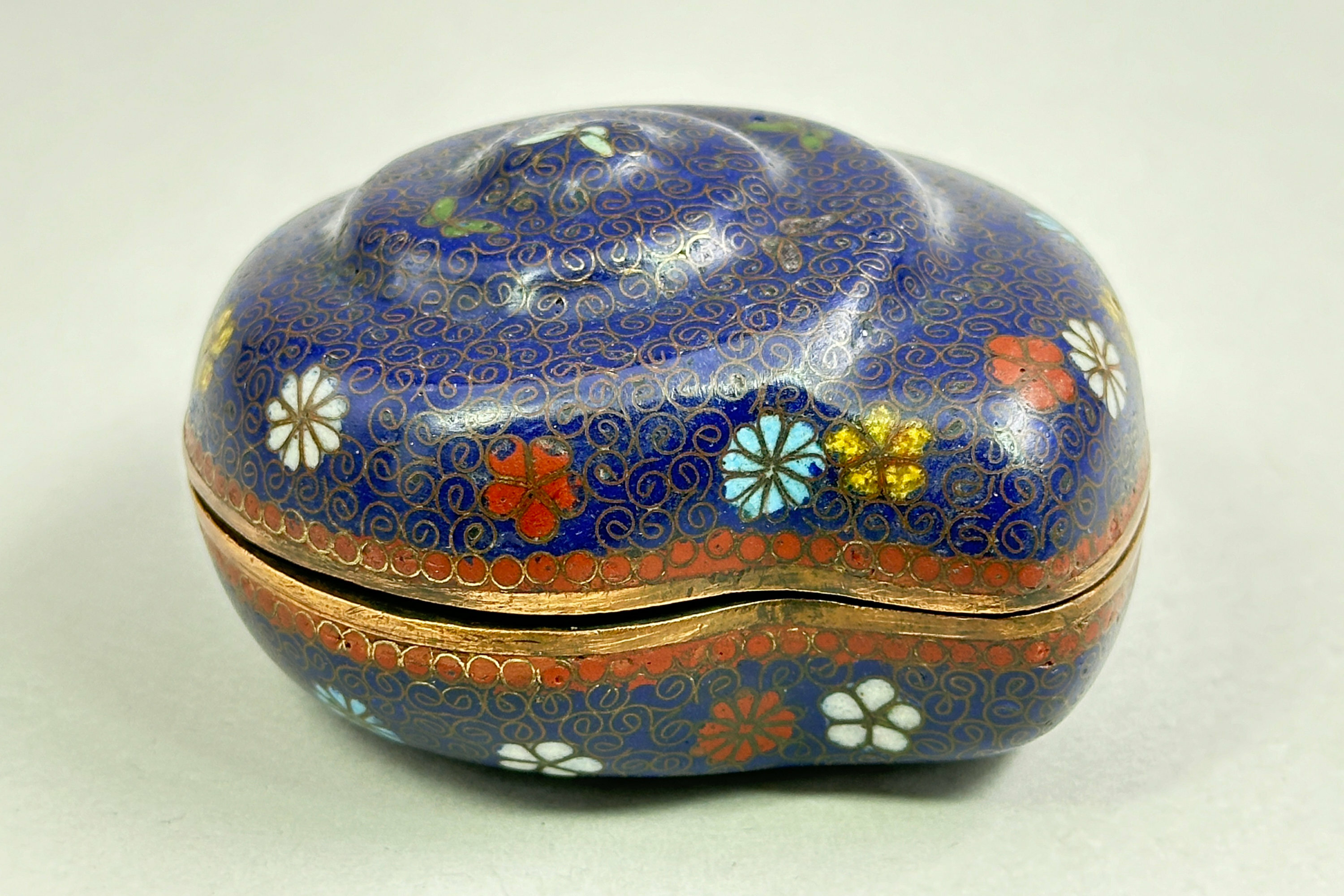
Fine Quality Cloisonne Box and Cover in the form of a Snail, Japanese circa 1880
Price: £95The Japanese produced copies of natural forms in a variety of media. Carved ivory fruit and small animals are well known. Here, cloisonne enamel is used which is less common. The quality of the work speaks for itself and can be judged form the small butterflies on the cover and the green speckle enamel fill at the base. It is typical of the best Meiji period (1868-1912) work and a circa date towards the end of the nineteenth century is most likely.
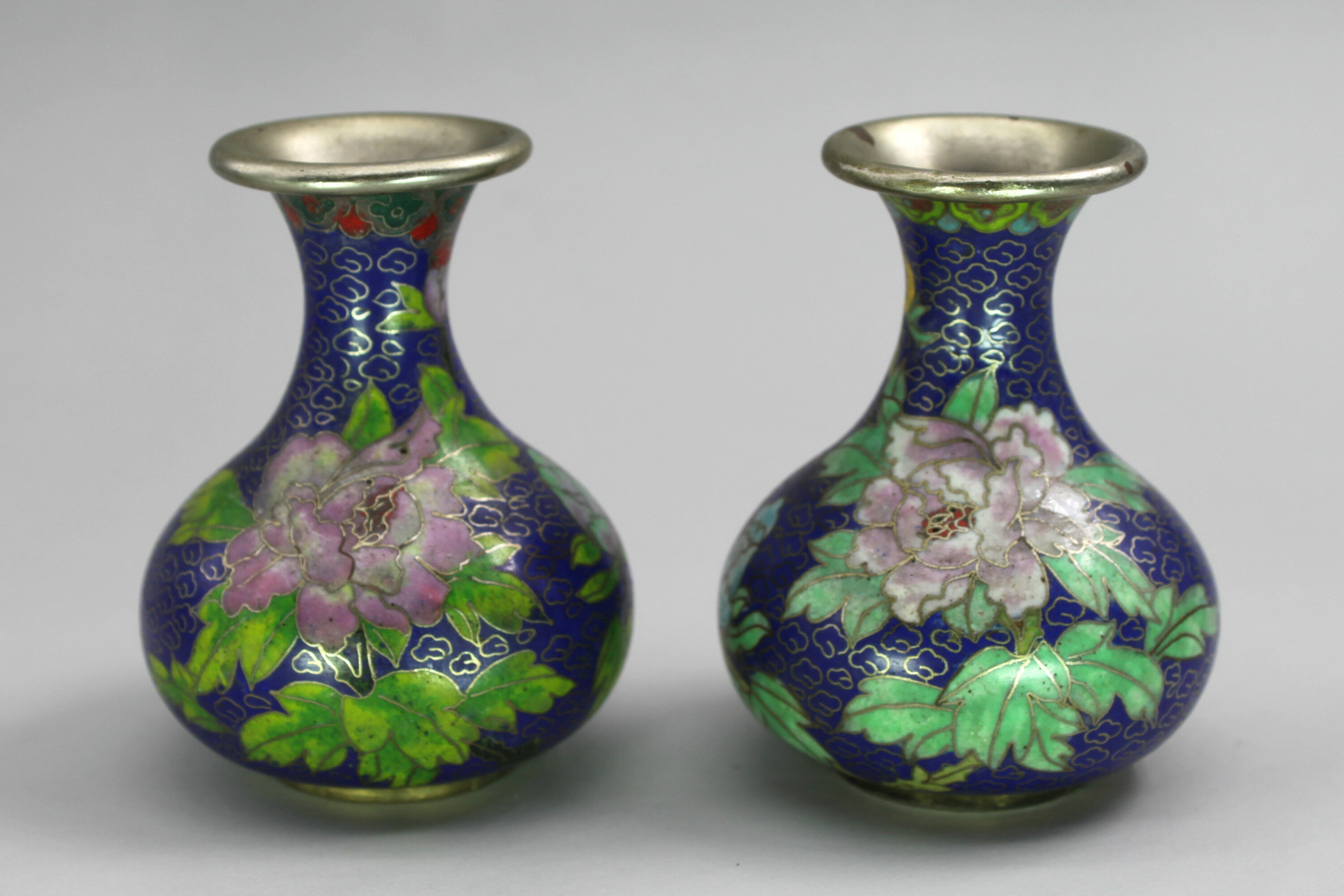
A Matched Pair of Chinese Cloisonne Bottle form Vases circa 1900
Price: £25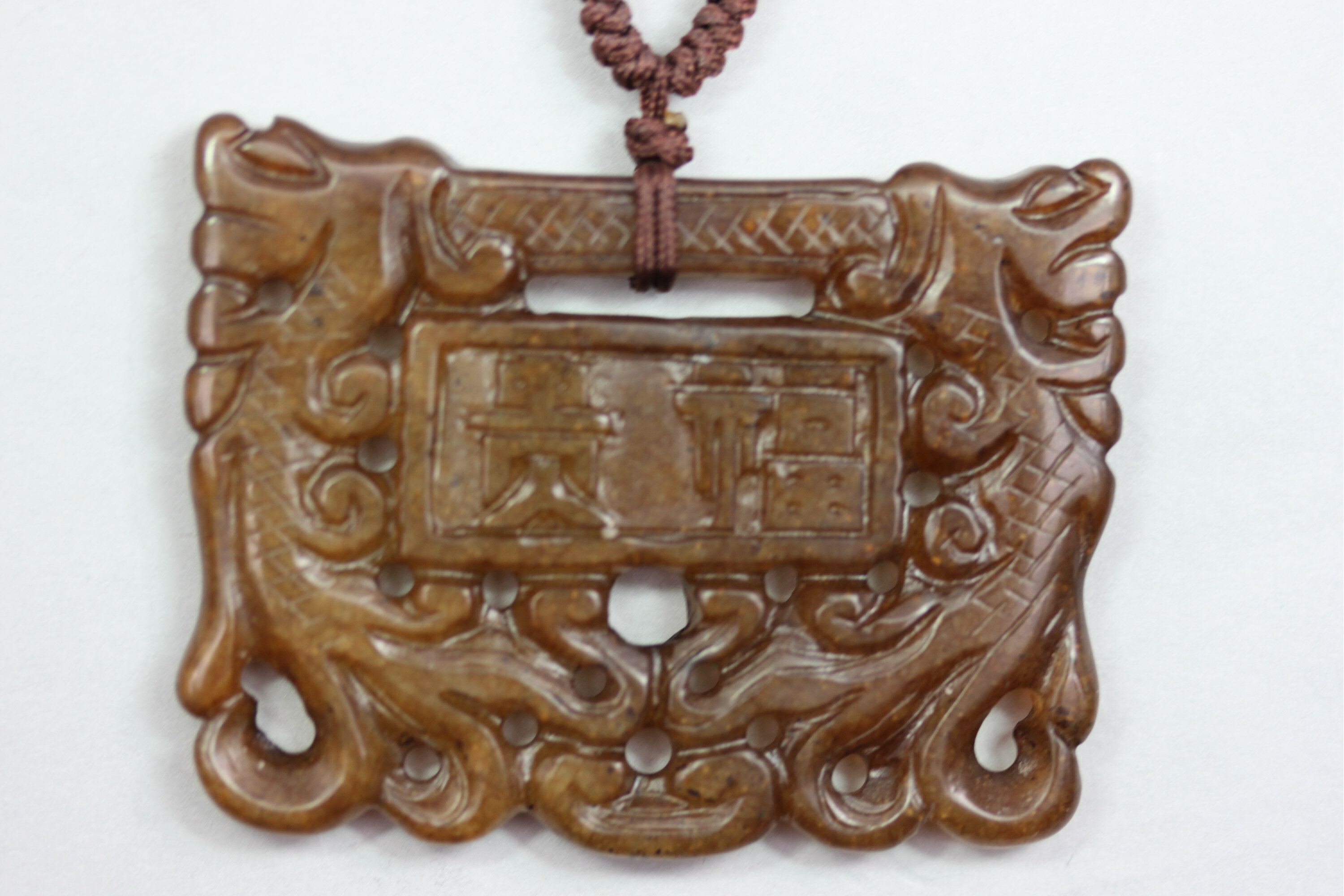
Carved Chinese brown jade necklace
Price: £55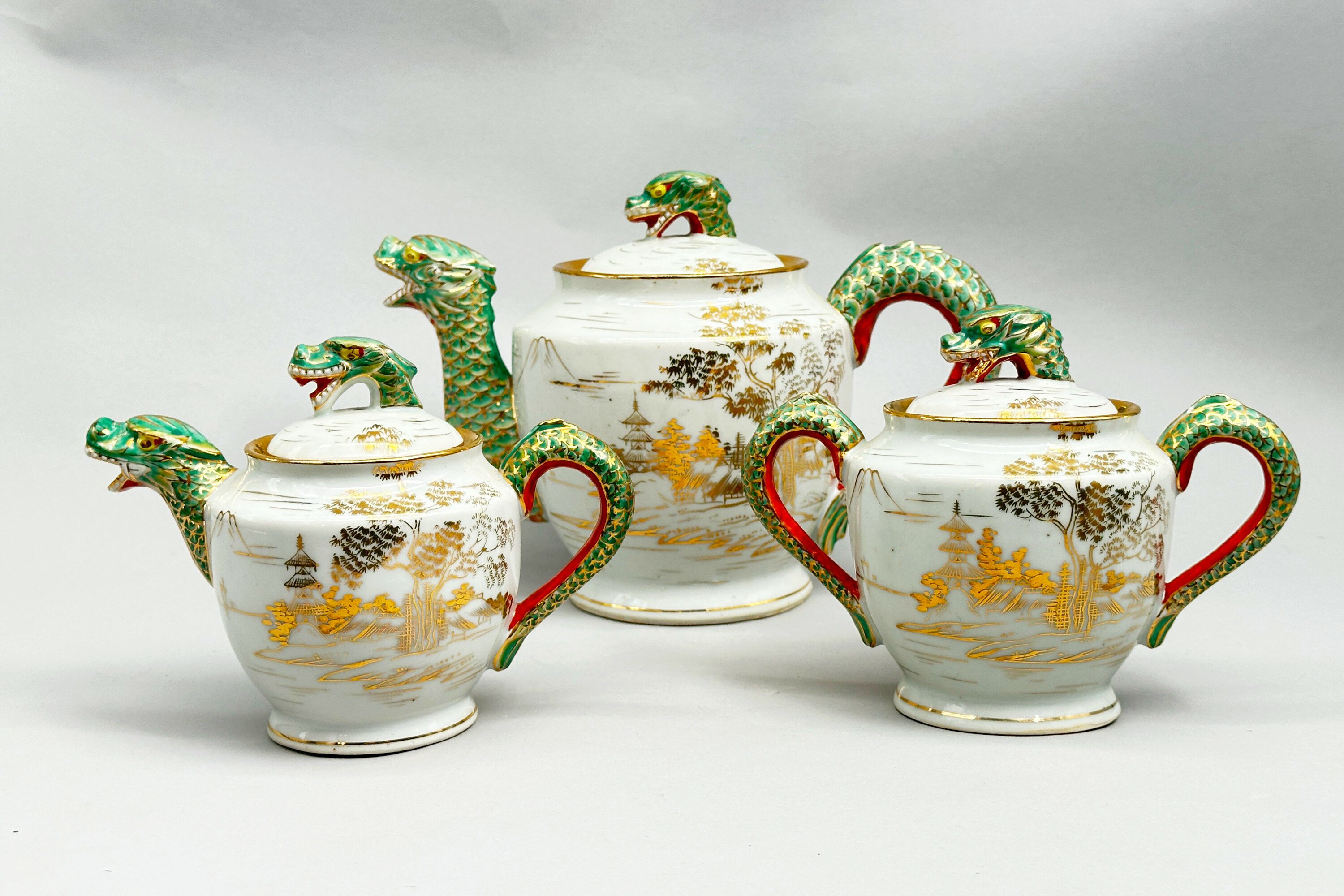
Japanese Kutani Part Tea Service circa 1920
Price: £75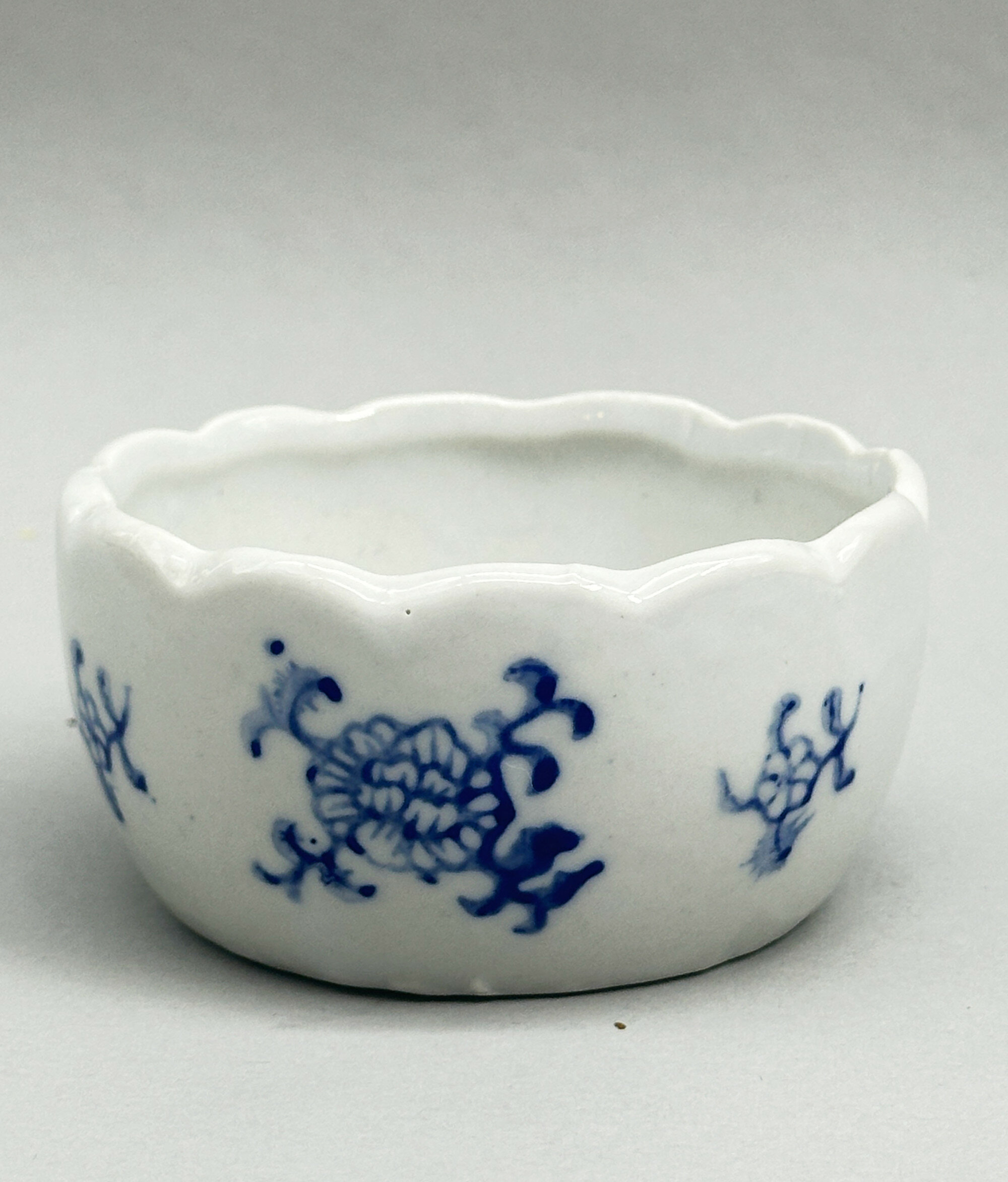
Japanese Arita Brushwasher, C20th
Price: £25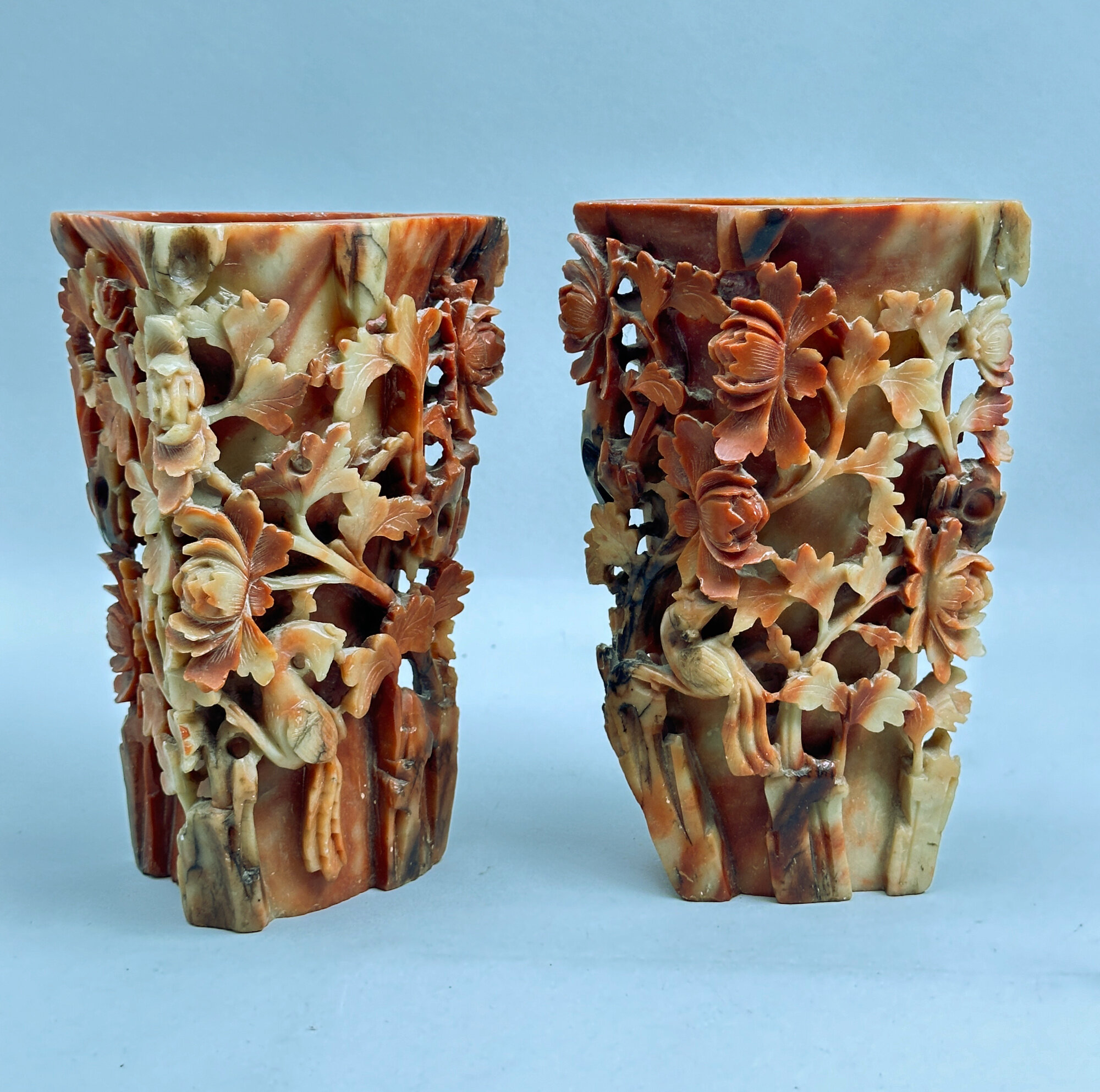
An unusual Pair of Chinese carved Soapstone Vases, circa 1900
Price: £110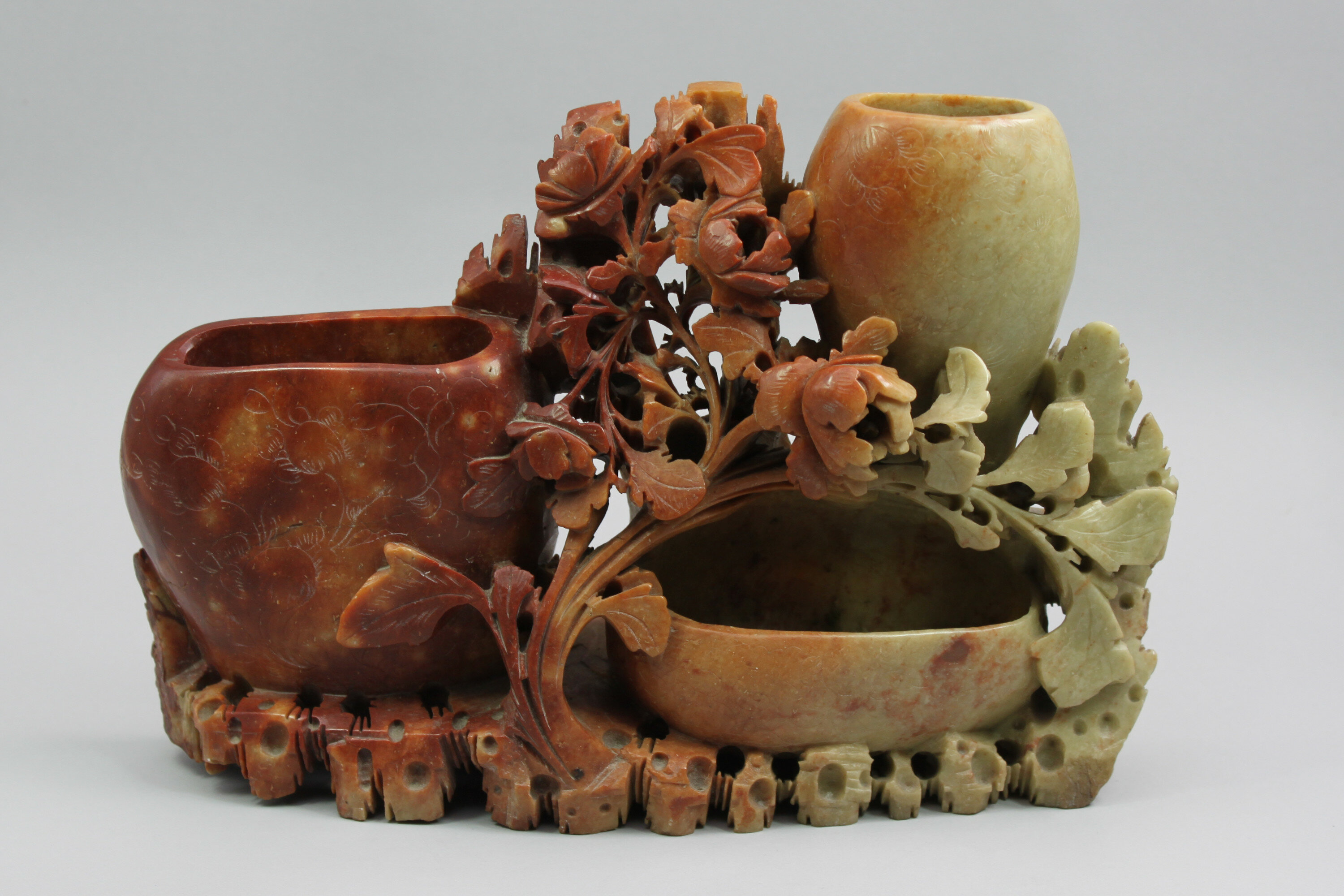
Chinese Soapstone Brushwasher decorated with flowering Lotus, early 20th Century
Price: £45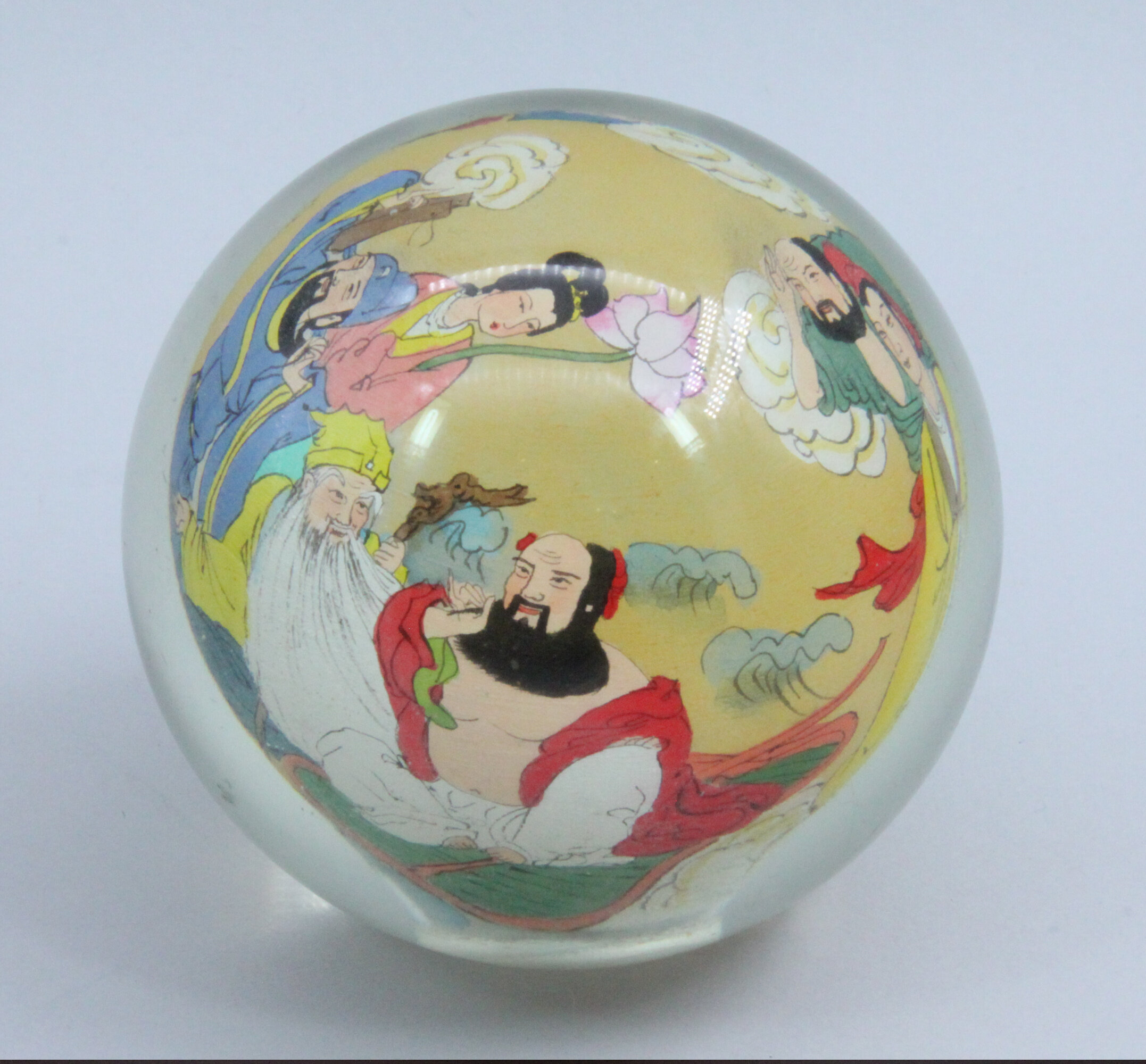
Chinese Reverse Painted Glass Globe depicting deities and attendants, Modern
Price: £45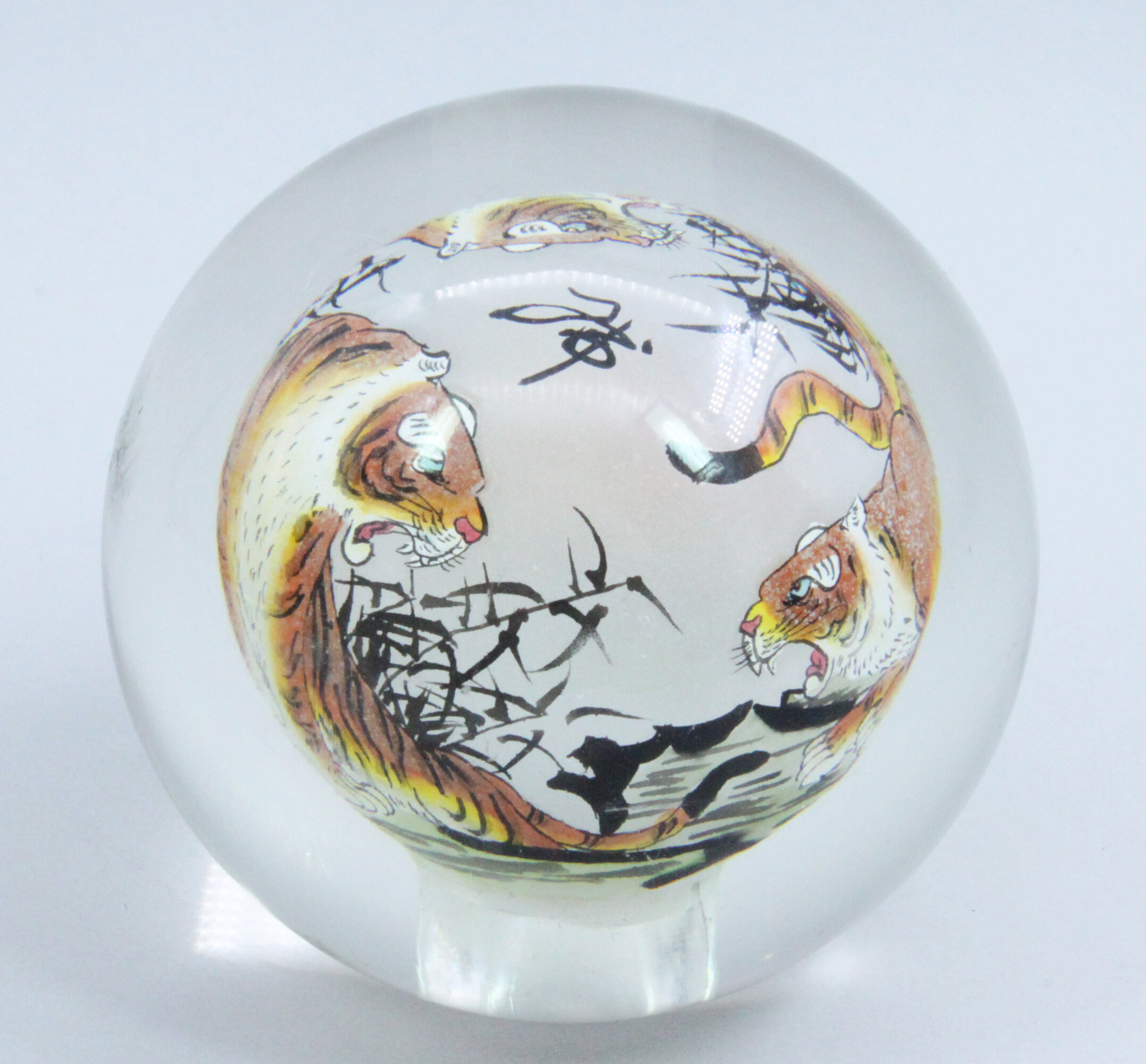
Chinese Reverse Painted Glass Globe depicting tigers, Modern
Price: £45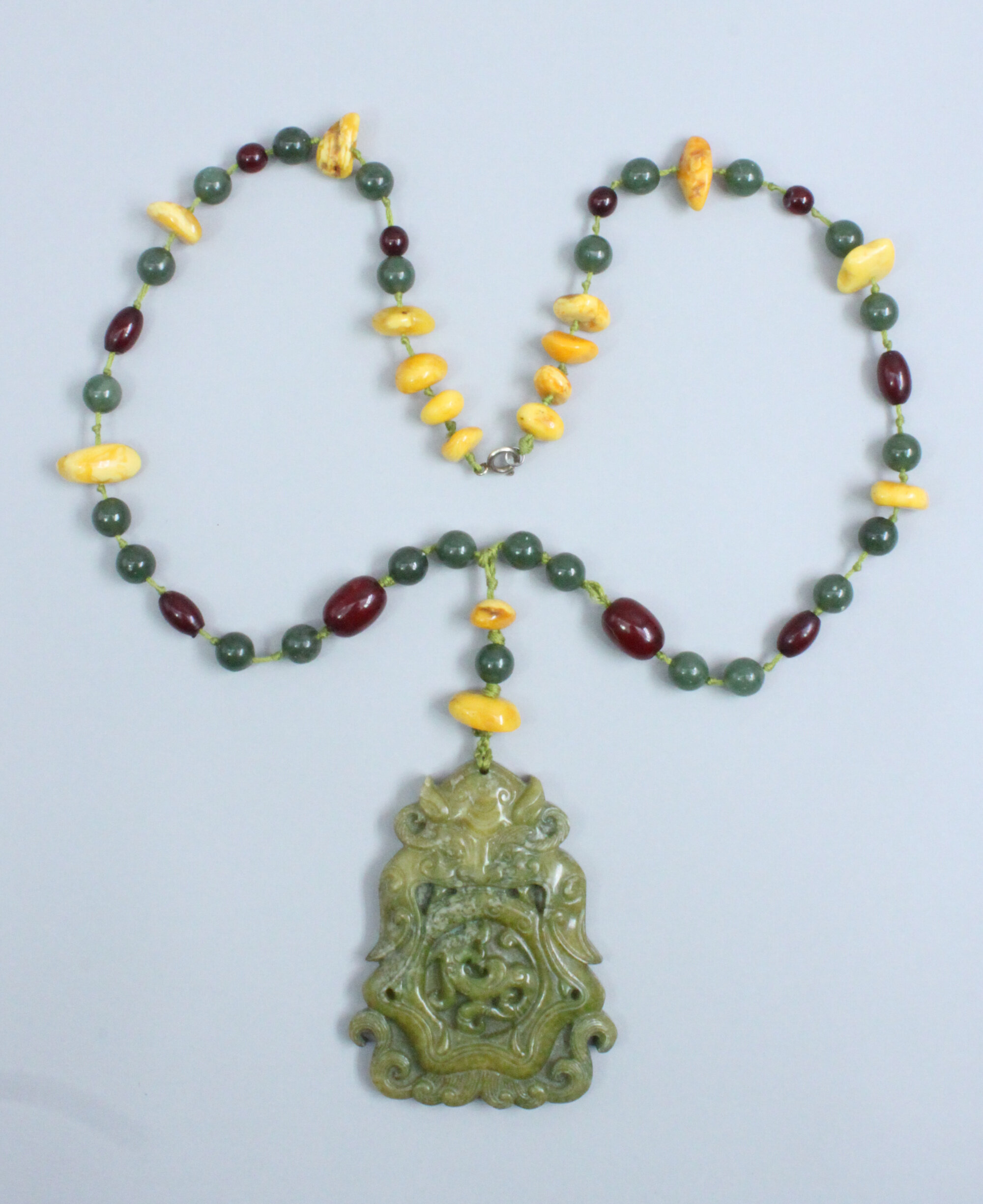
Constructed necklace with jade, egg yolk amber and cherry amber
Price: £250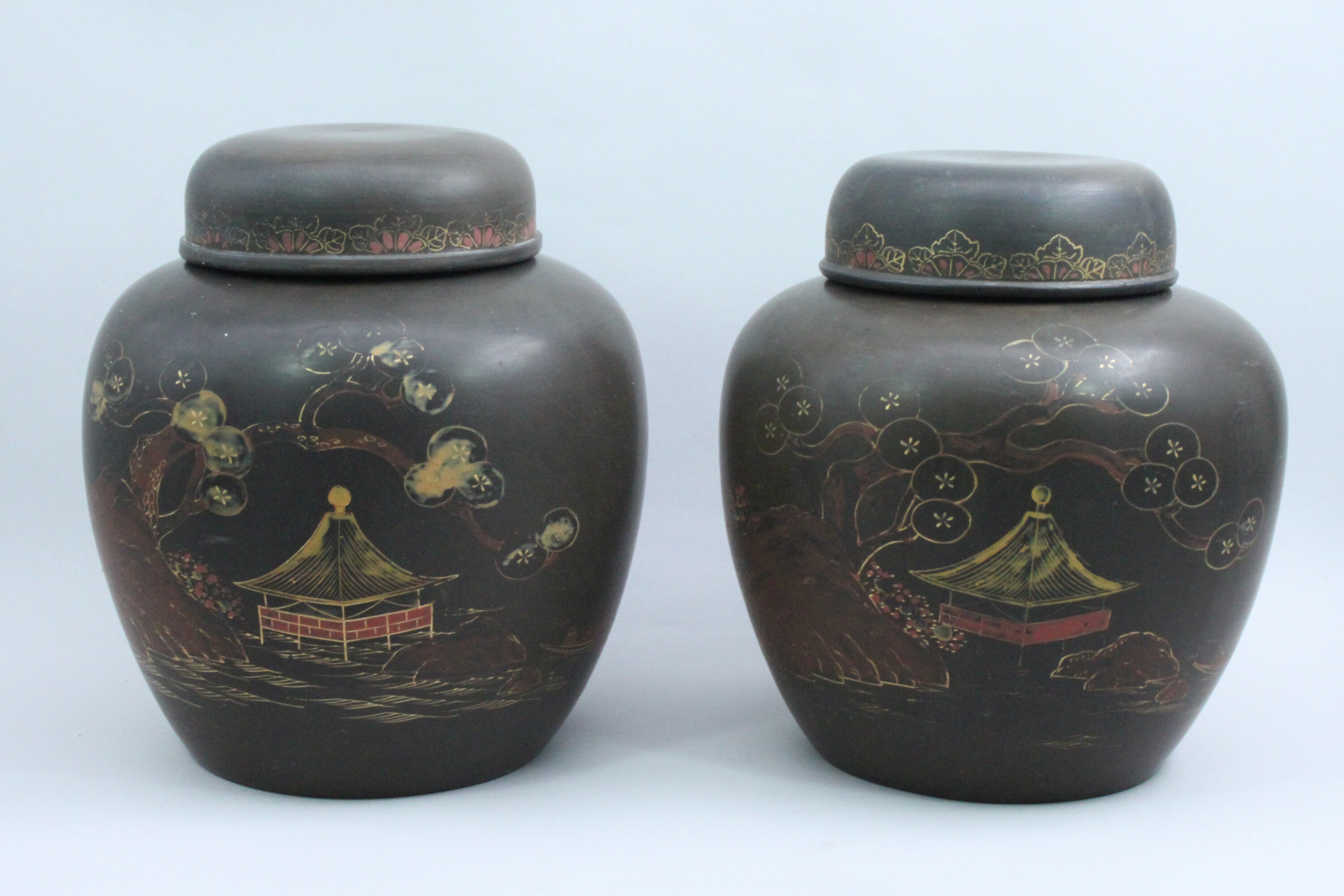
A Pair of Japanese Lacquered Porcelain Ginger Jars and Covers, late C19th
Price: £240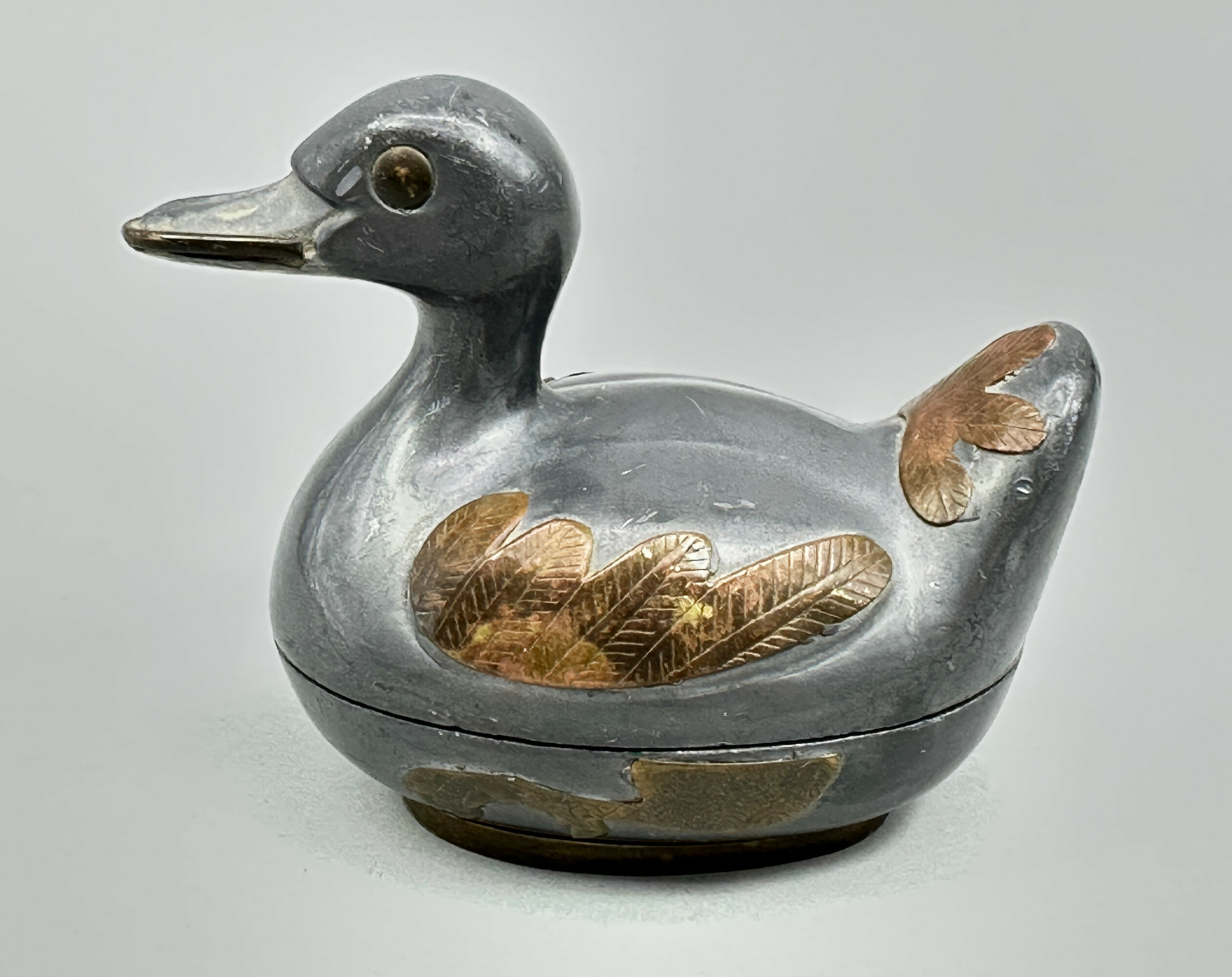
Pewter and brass box and cover in the form of a Mallard Duck, Gatco, Hong Kong, 1960s
Price: £25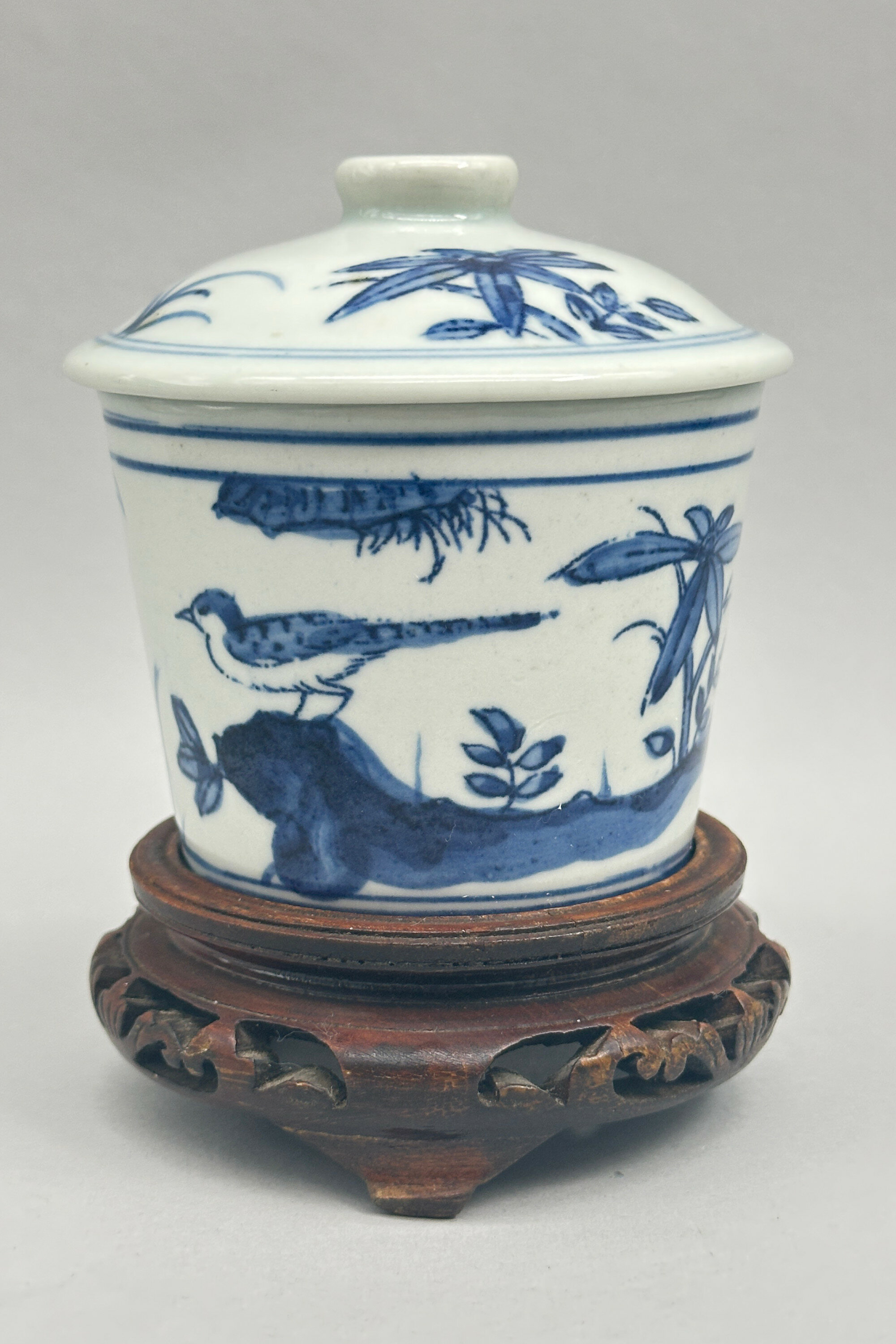
Chinese Small Blue and White Potiche and Cover with wood stand, late C20th
Price: £45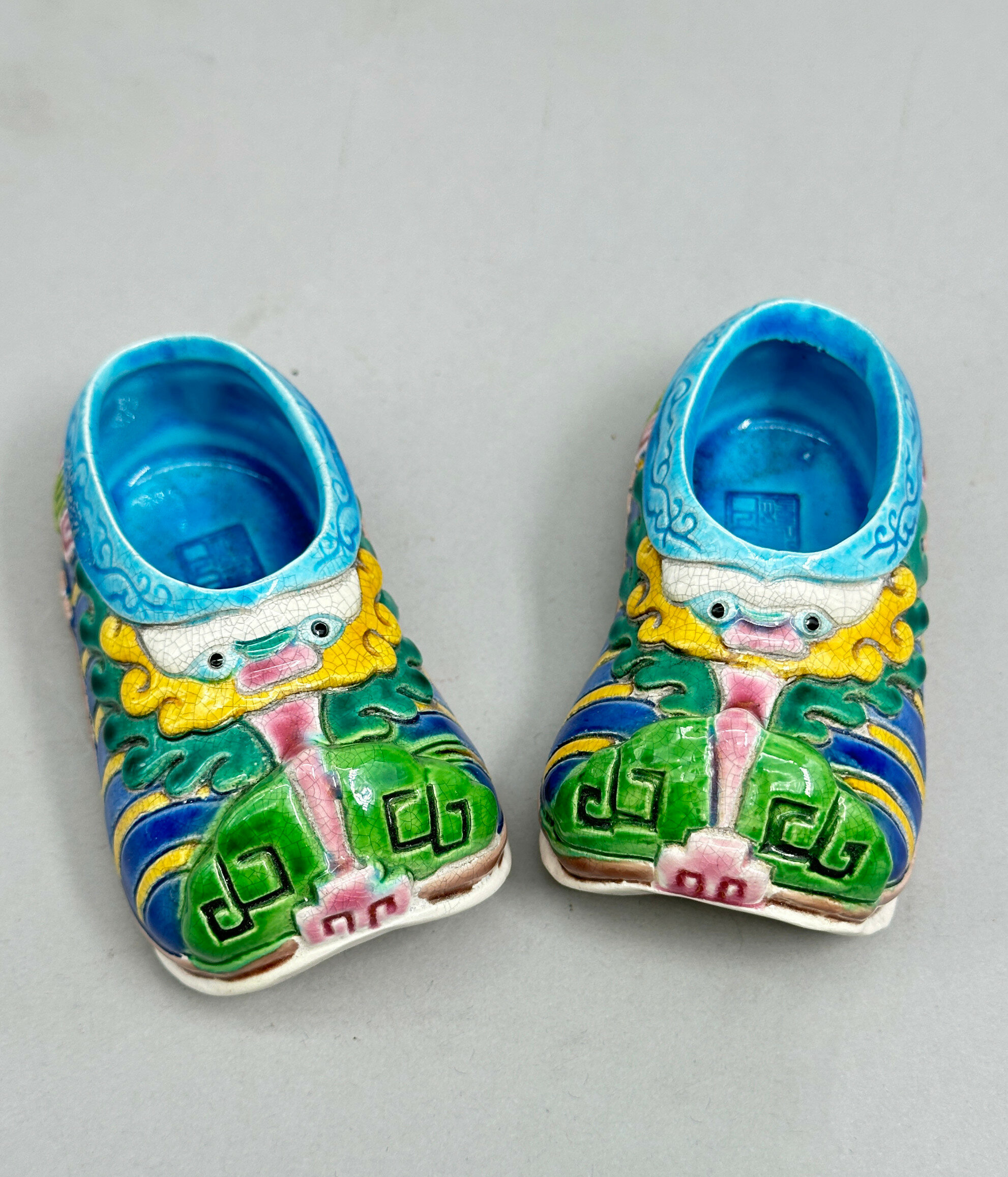
Pair of Chinese Ceramic Shoes, seal mark and with fitted box, C20th
Price: £55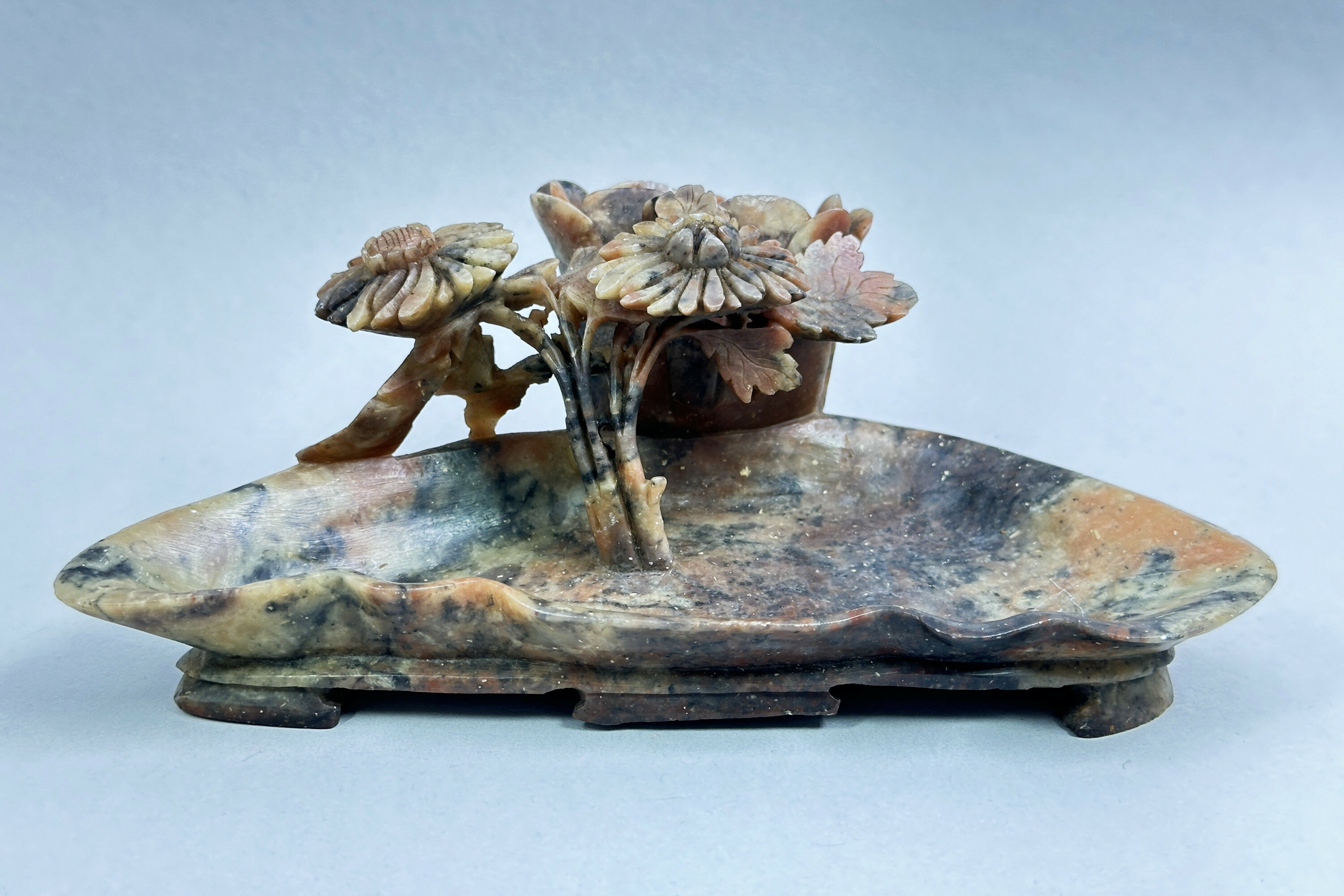
Chinese Soapstone Brushwasher with flowering lotus, early C20th
Price: £95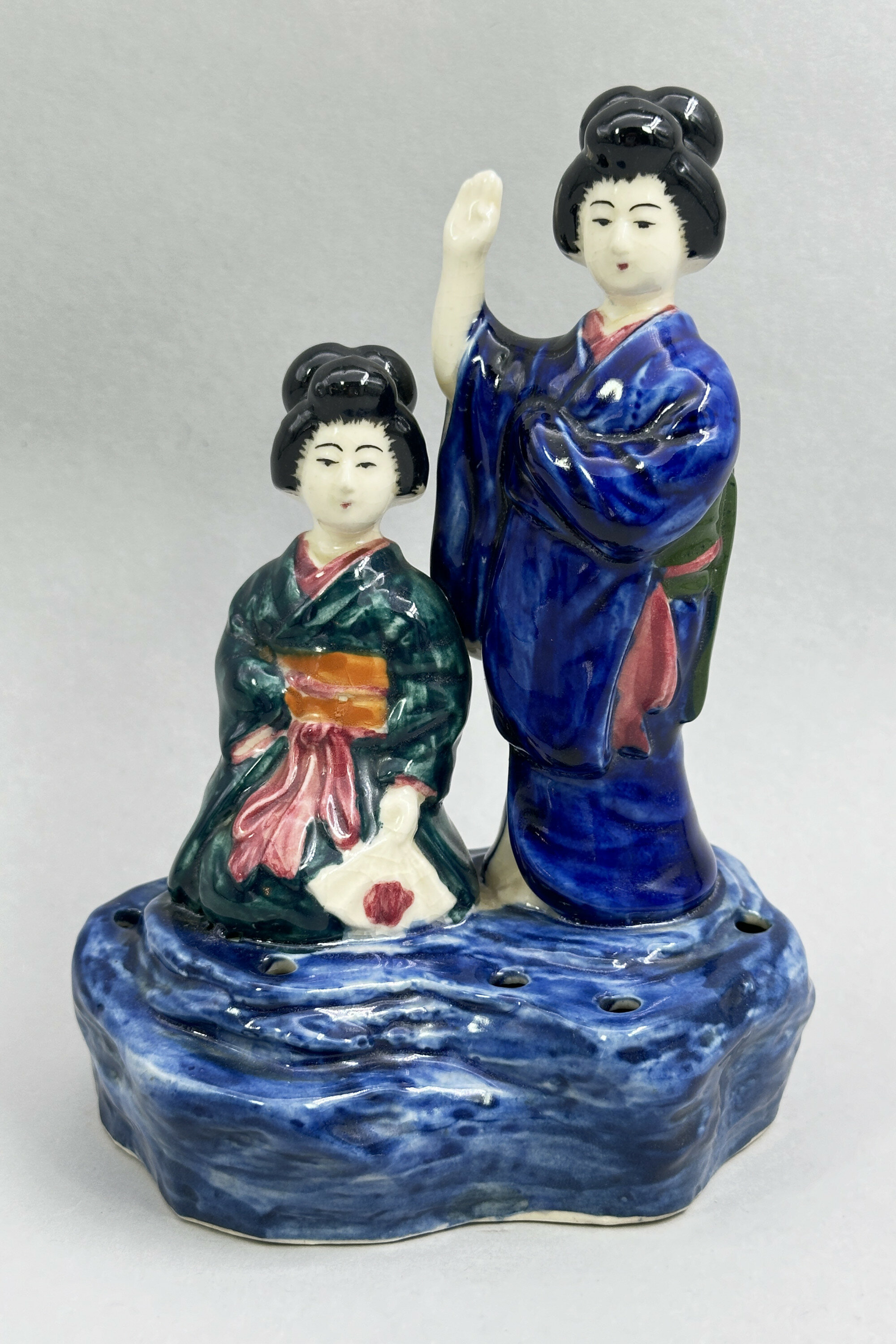
Japanese Ceramic Figural Group of two Geisha, late C19th
Price: £25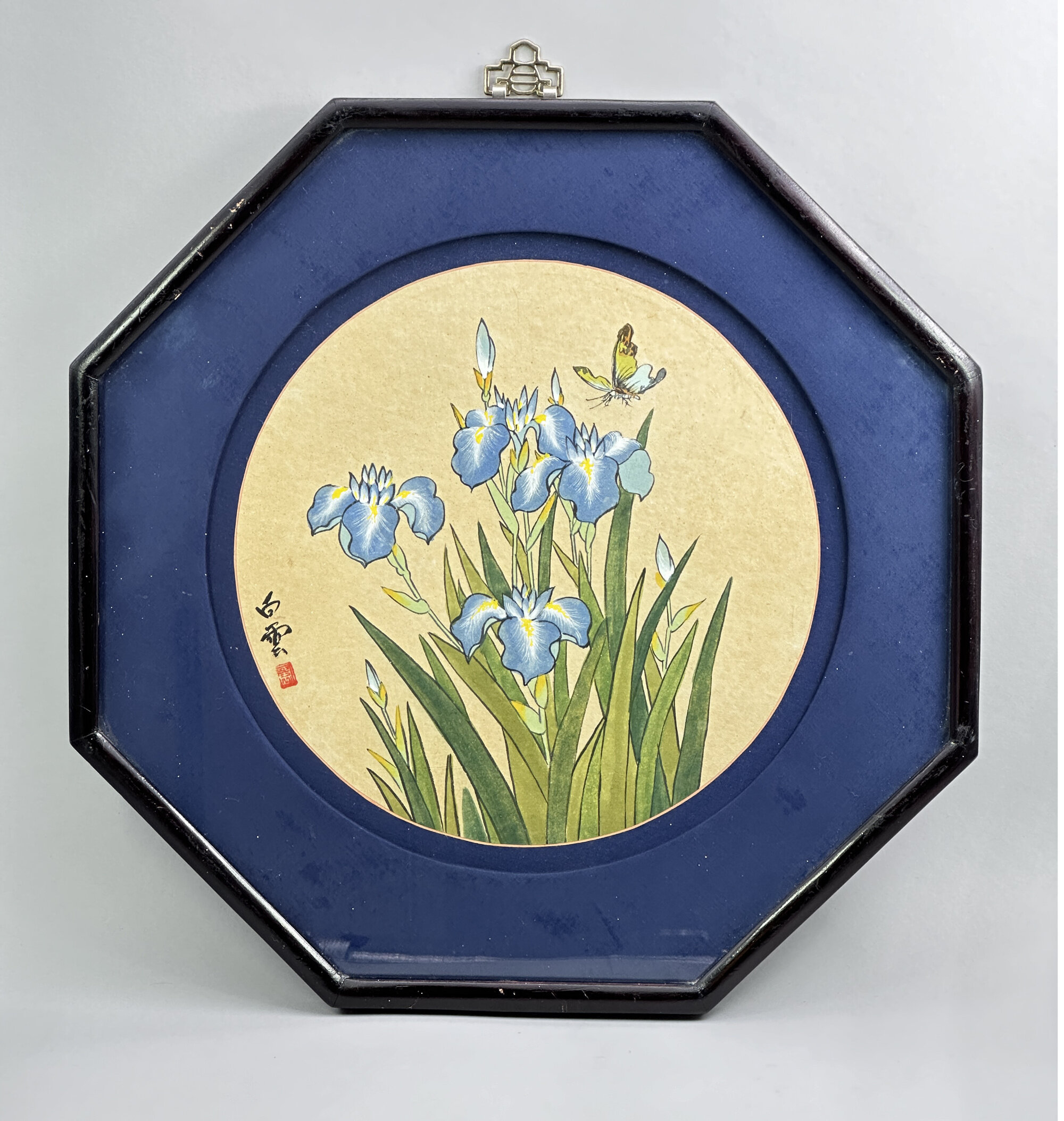
Japanese Gouache Painting of Flowering Lotus, signed and framed, C20th
Price: £45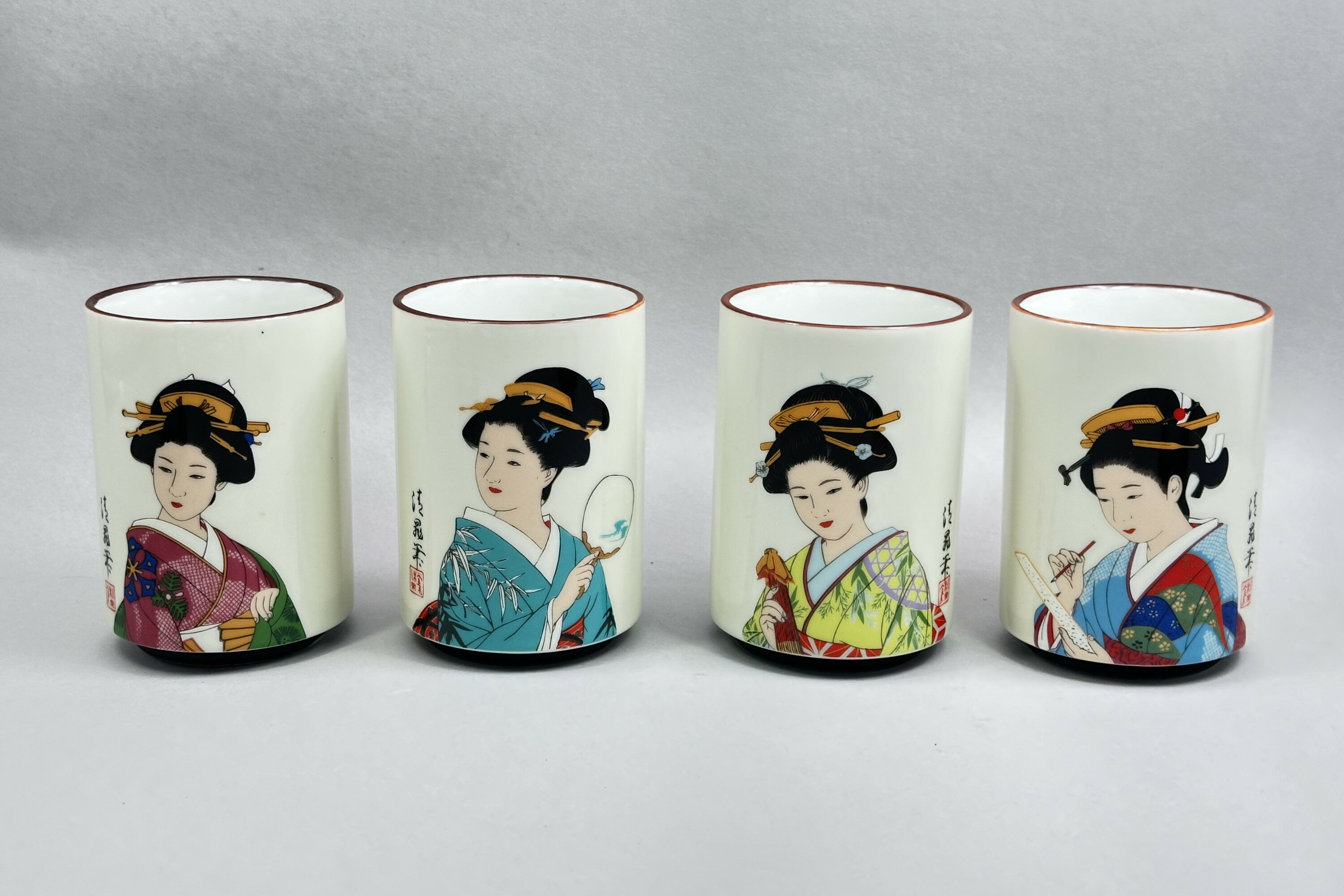
Set of Four Japanese Ceramic Beakers decorated Geisha, late C20th
Price: £40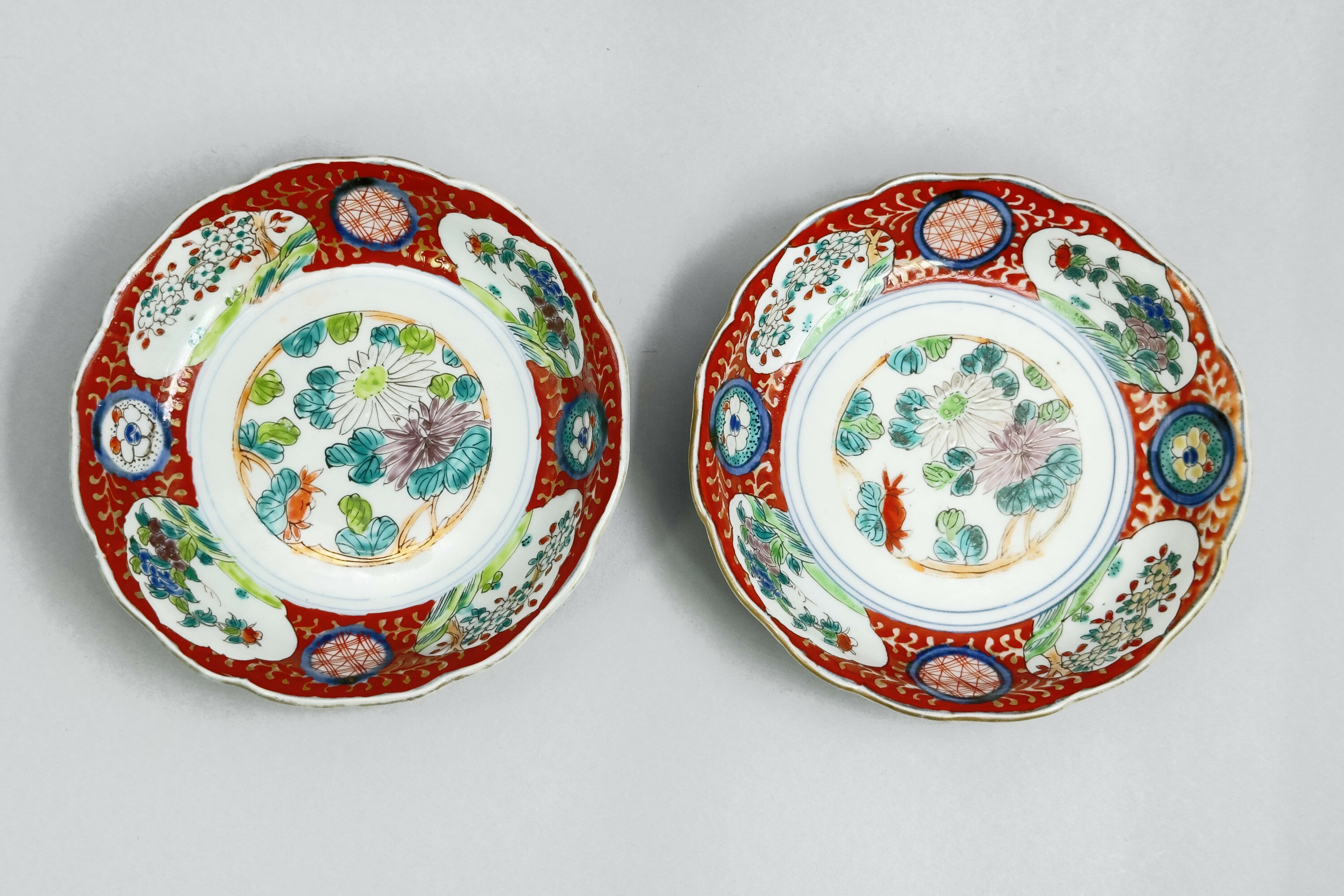
Pair of Japanese Arita Shallow Bowls circa 1880
Price: £75The town of Arita in the former Hizen Province, northwestern Kyūshū island, was a major centre for the production of porcelains in Japan. Best known for blue and white pieces it also produced polychrome wares as well, including the familiar imari colourings. While similar to Imari, the wider palette of colours used here is usually termed ‘Arita’ and the decorative appeal of the style is clear. These bowls probably come from an original set of five and their quality is much above average. Dating is to the Meiji era (1868 - 1912) probably around 1880.
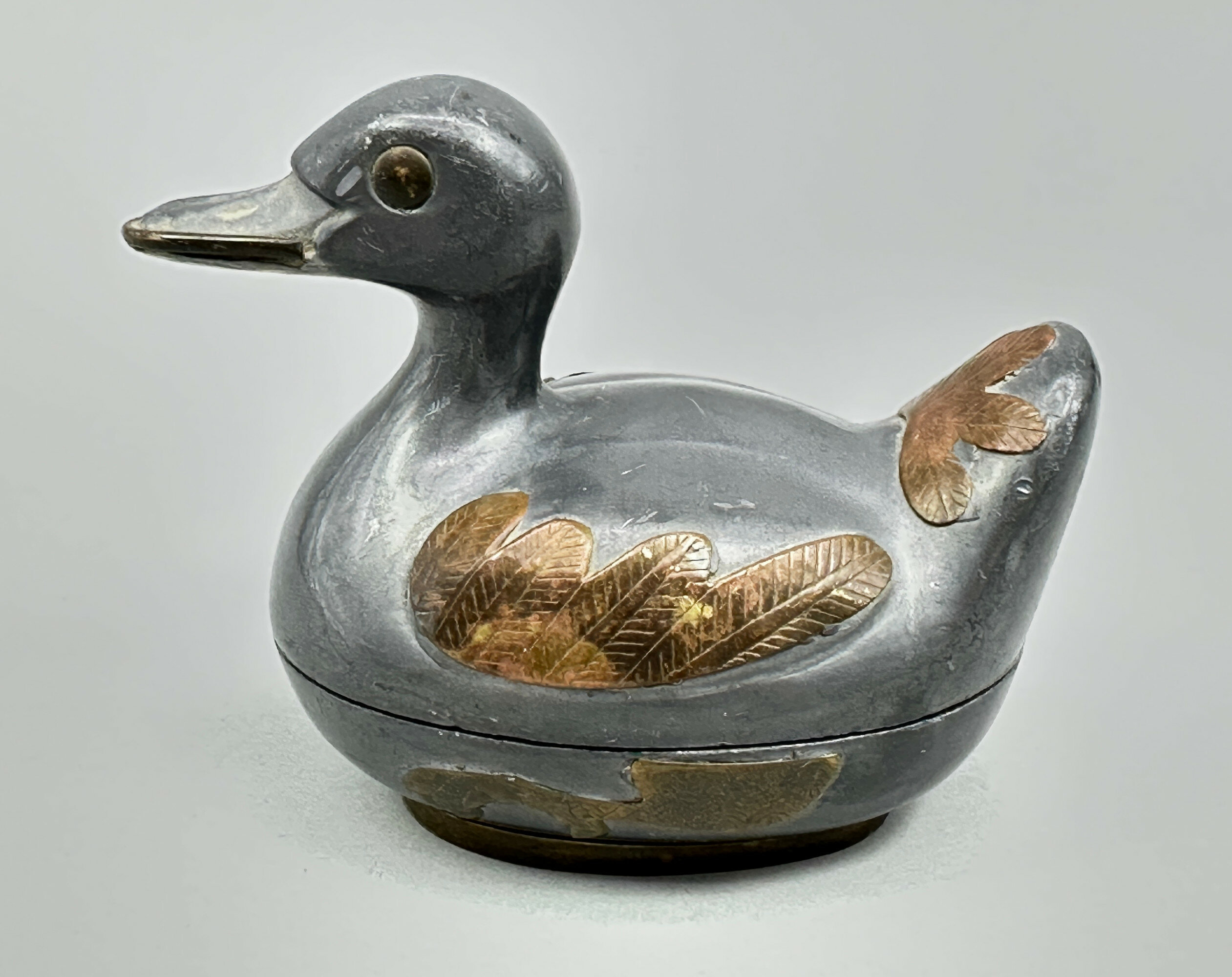
Pewter and brass box and cover in the form of a Mallard Duck, Gatco, Hong Kong, 1960s
Price: £25
Japanese Celadon glaze vase with enamel decoration, late C19th
Price: £25
Japanese Studio Pottery Vase, signed, C20th
Price: £75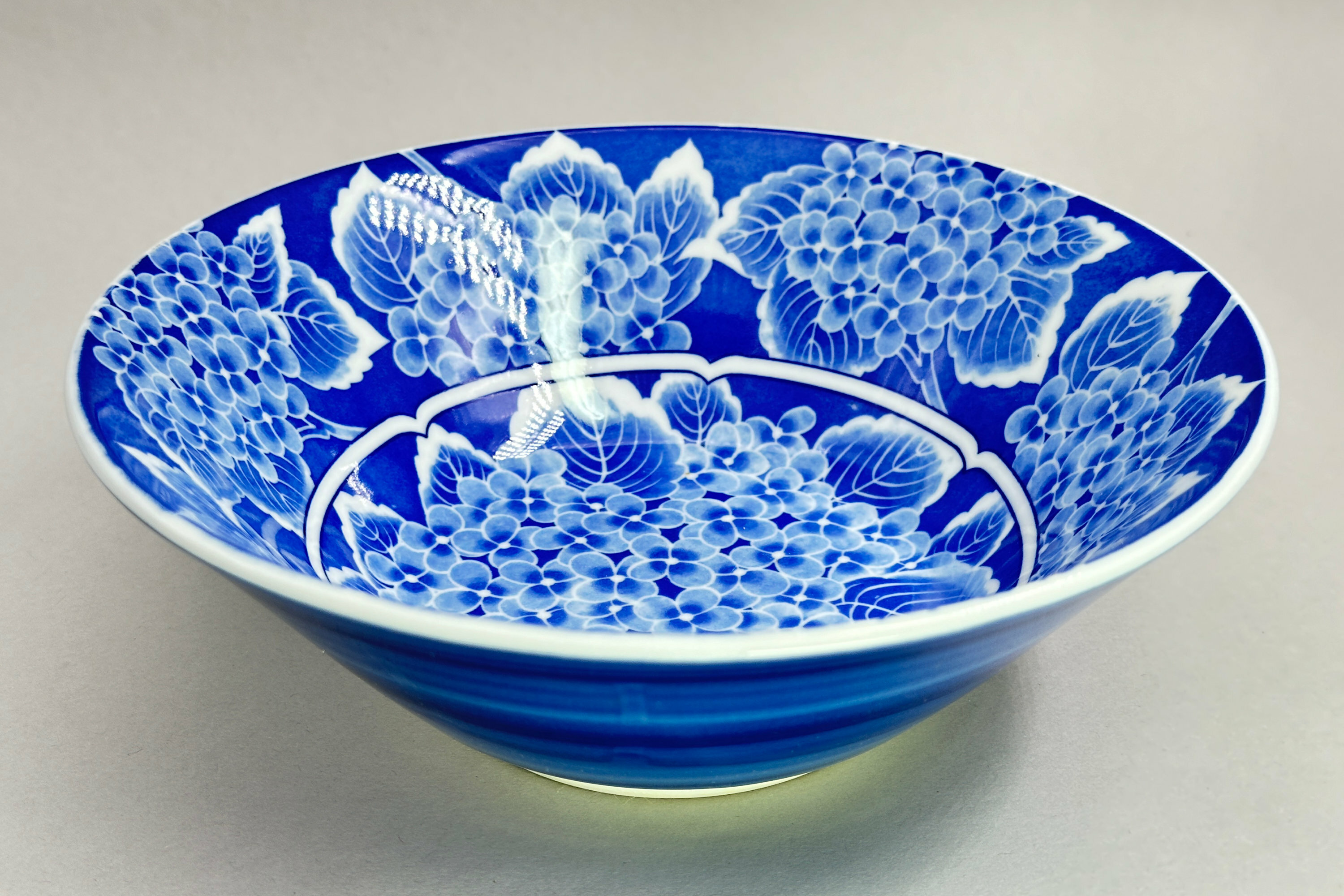
Japanese Blue and White Porcelain Bowl decorated with hydrangea, early C20th
Price: £25Hydrangeas flourish in Japan and also carry a hidden meaning of apology and gratitude based on a mythical story of an Emperor, who angered a woman he loved by neglecting her, and gave her in recompense a bunch of blue hydrangeas as a symbol of his deep emotion and gratitude. Used here as a decorative motif, the painting of the flowers is skilful and elegantly combined with the plainer exterior. The paste of the foot rim suggests an early C20th dating, perhaps to the late Taisho era (1912-1926).
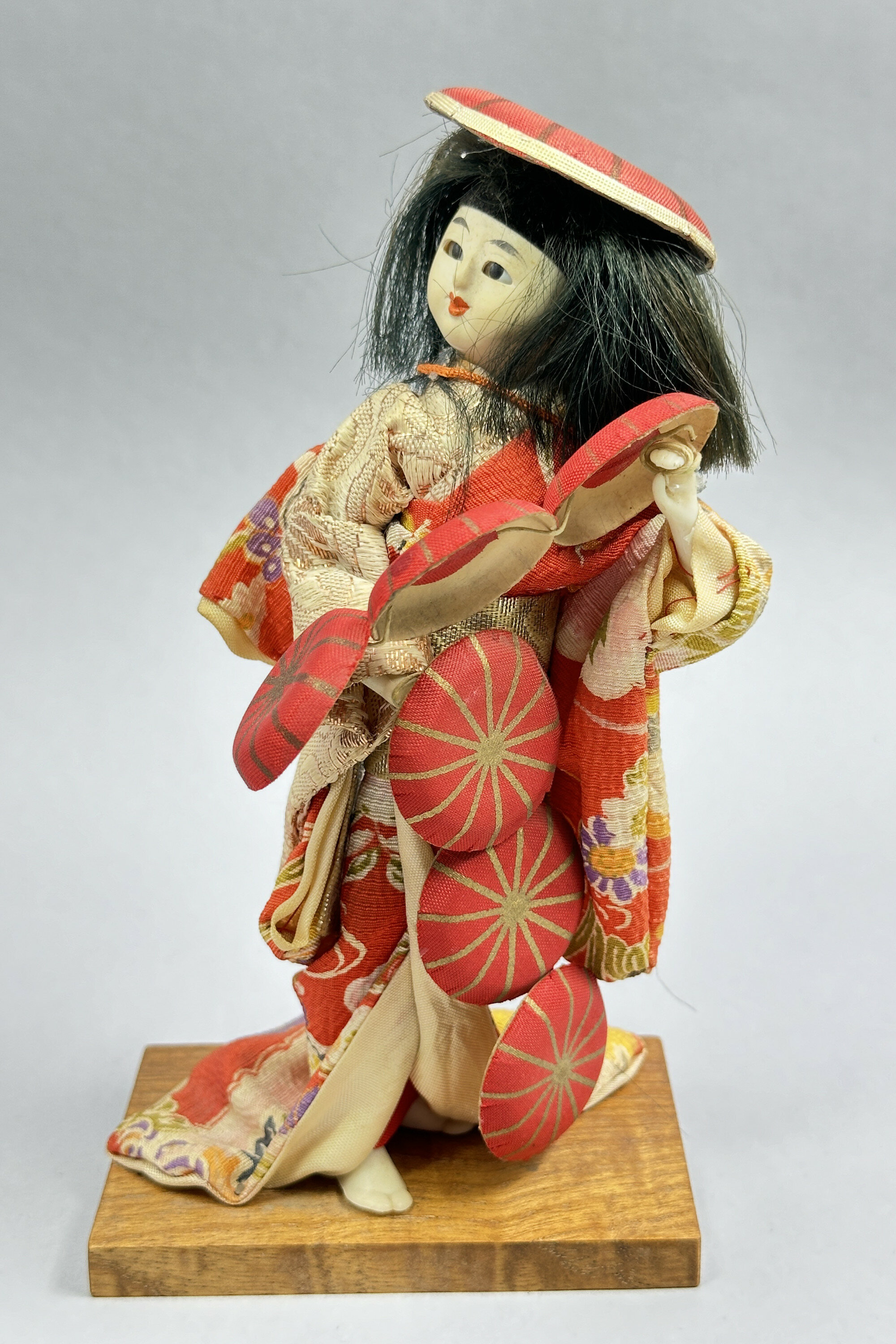
Vintage Japanese Doll of a Hat Seller, C20th
Price: £25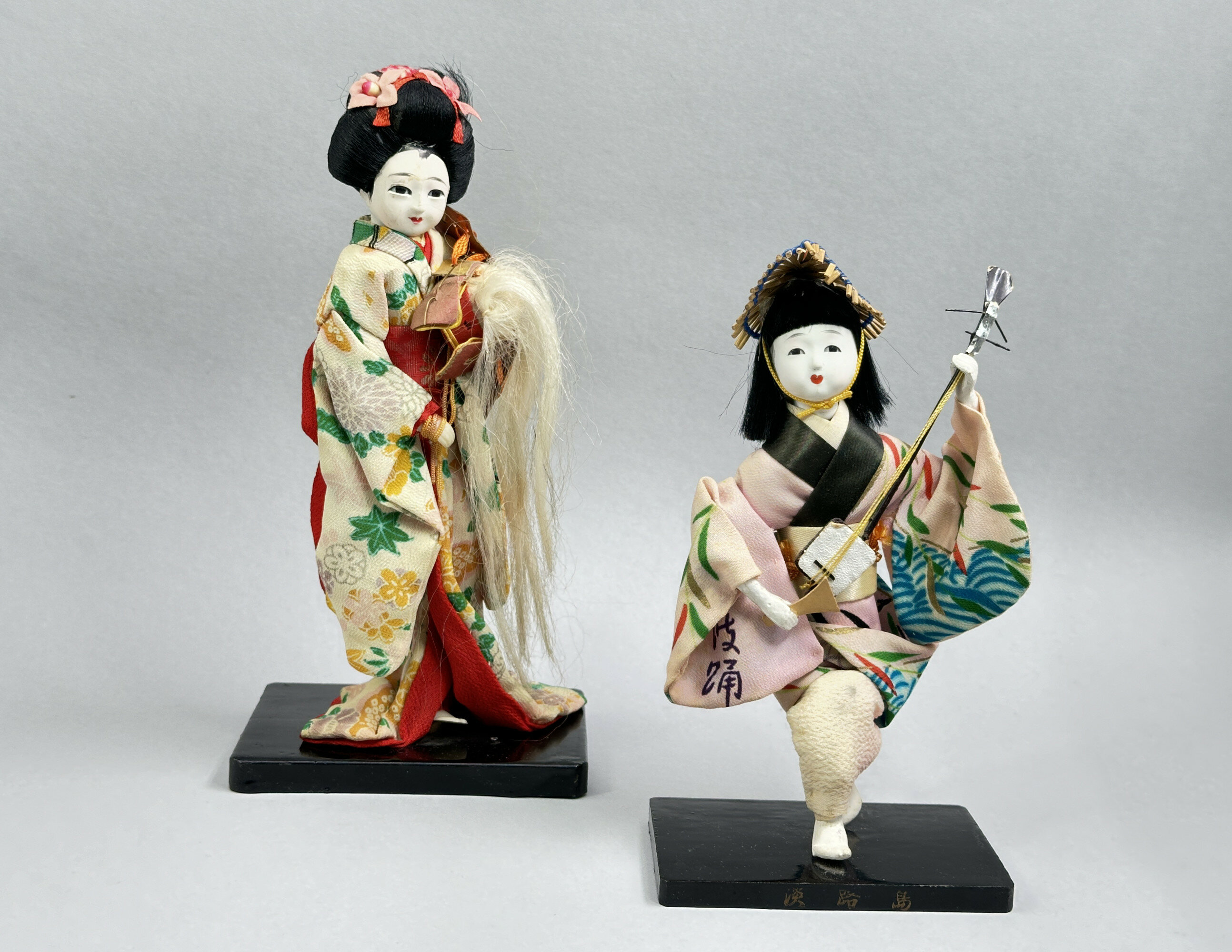
Two Vintage Japanese Geisha Dolls, C20th
Price: £25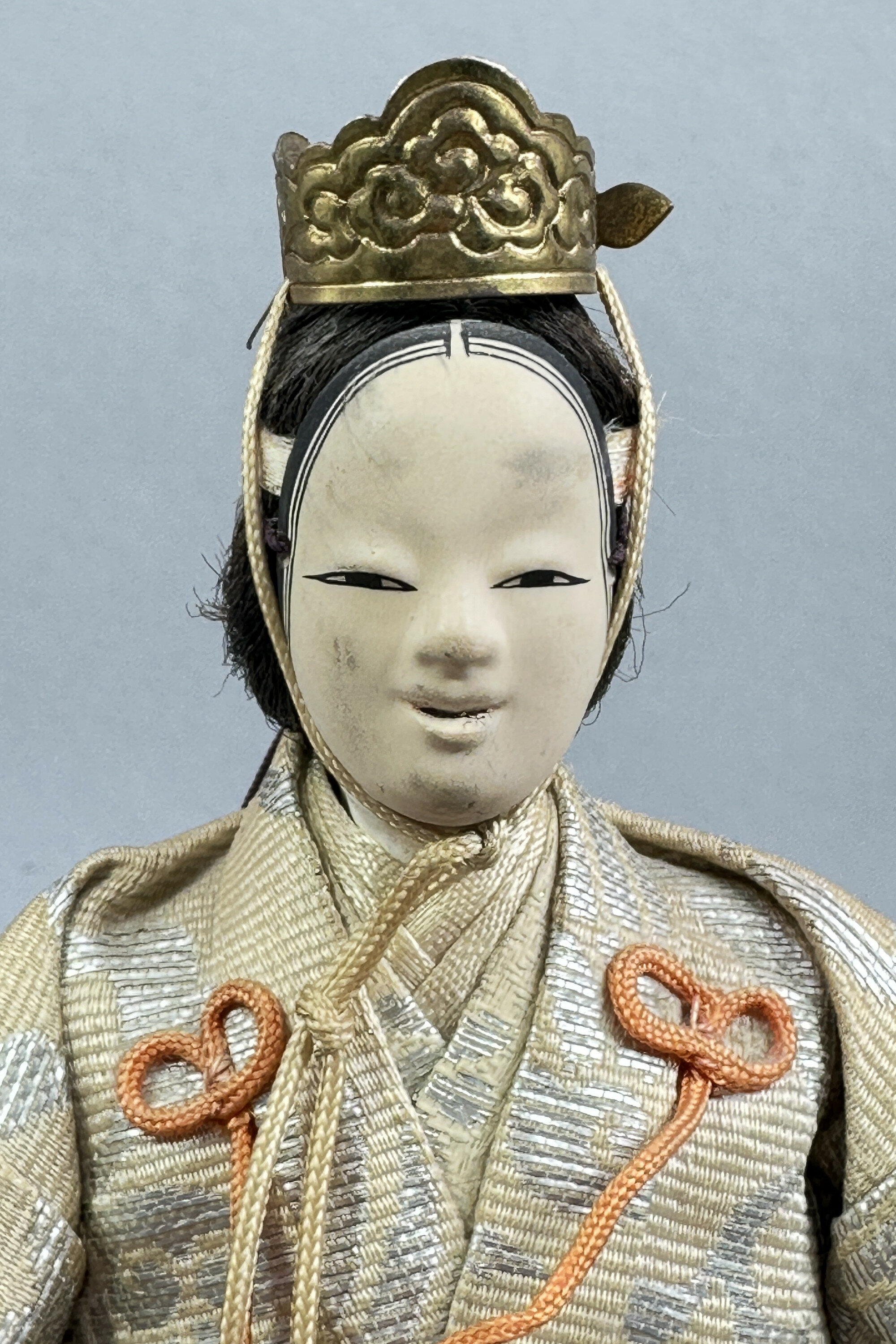
Japanese Noh Figure Doll of a Lady, Showa Period (1926-1989)
Price: £55Dolls such as these were made for display, sometimes at the special ‘Doll’s Day’ or ‘Girls Day’ festival held annually on the third of March and termed ‘Hinamatsuri’. The elaborate dress is sometimes known as ‘Hagoromo’ (‘feathered’) and the mask with its fixed expression derives from the well known ‘Noh theatre’, a major form of Japanese musical drama created in the fourteenth century which combines dance, music and song and is still performed today. The actors are all male and play the female roles wearing a lady’s mask.
The craftsmanship of this piece is self evident and it was most likely made in the second half of the C20th. It can stand equally well on its own or as part of a wider collection and would be a desirable acquisition either way.
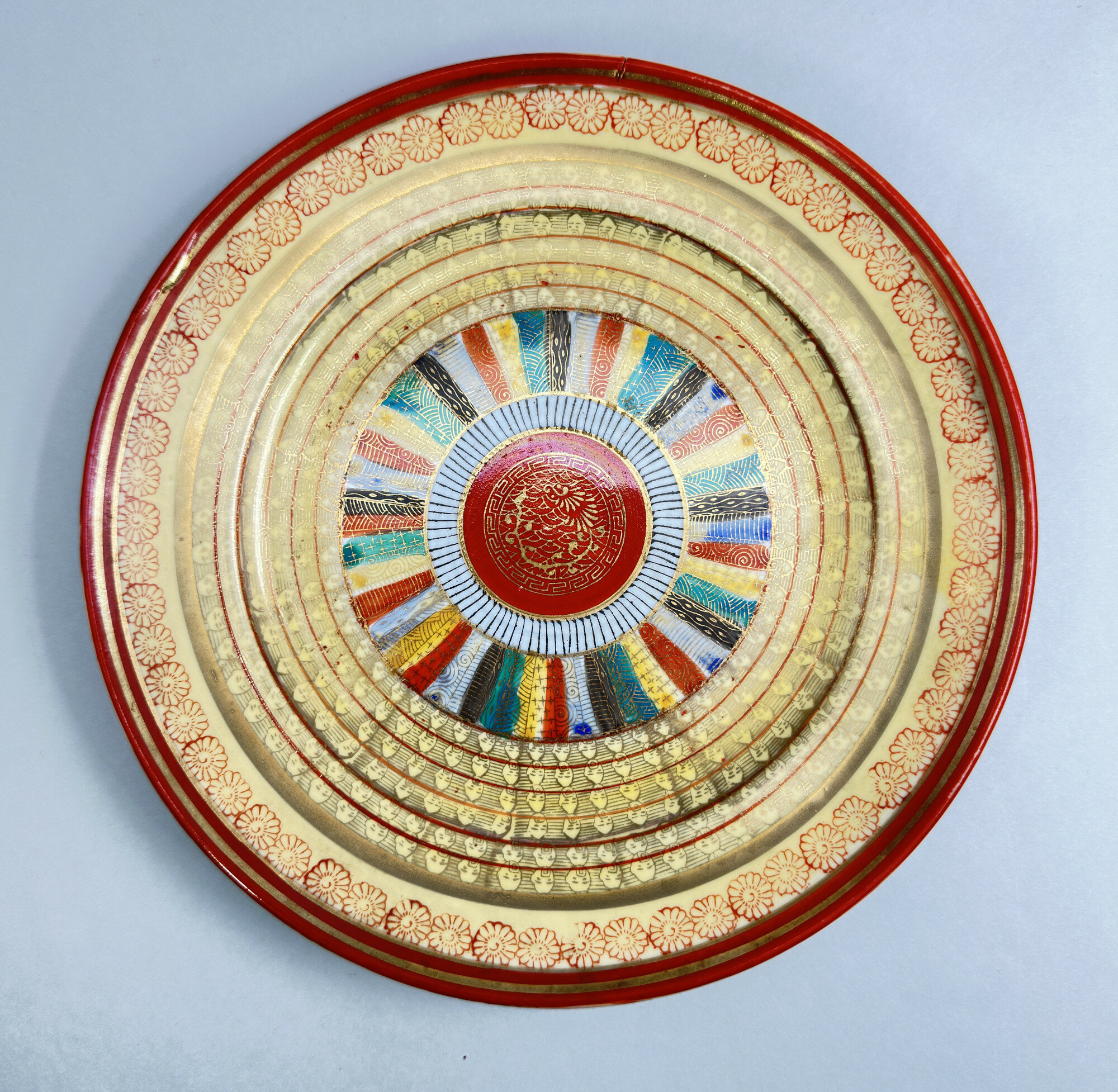
Japanese Kutani Dish decorated with the Thousand Faces pattern, first half C20th
Price: £45The colourings and style of work here clearly indicate the workshops of Kutani (the word means 'nine valleys') in the former Kaga province of Japan. By the nineteenth century the majority of their pieces were decorated in iron red and gold but sometimes with other colours in addition, as here. The ‘thousand faces’ pattern (an apocryphal term and this cataloguer has not attempted to count the number of faces appearing here) seems to have been evolved around the end of the nineteenth century and then continued in production until the mid twentieth. Both plates in various sizes and even tea sets are found in the design. The mark ‘Made in Japan’ was usually employed after 1941 (in the previous twenty years ‘Japan’ was the norm) but there are exceptions and the paste of the foot rim here does suggest a slightly earlier date, perhaps around 1930. In perfect condition, with very little wear to the decoration, this piece is a fine example of a rather eccentric decorative patttern.
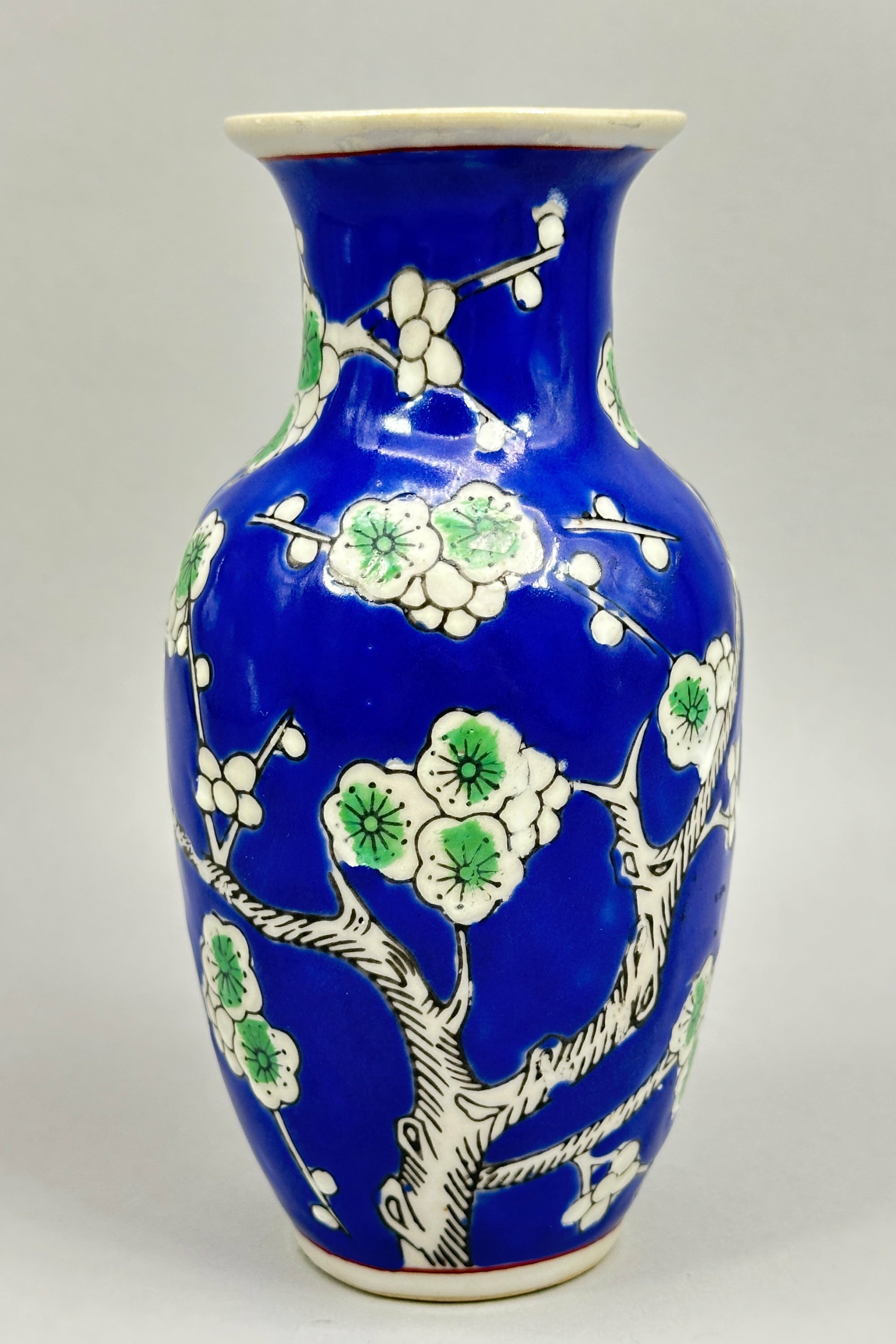
Chinese blue ground Vase decorated Prunus, late C20th
Price: £25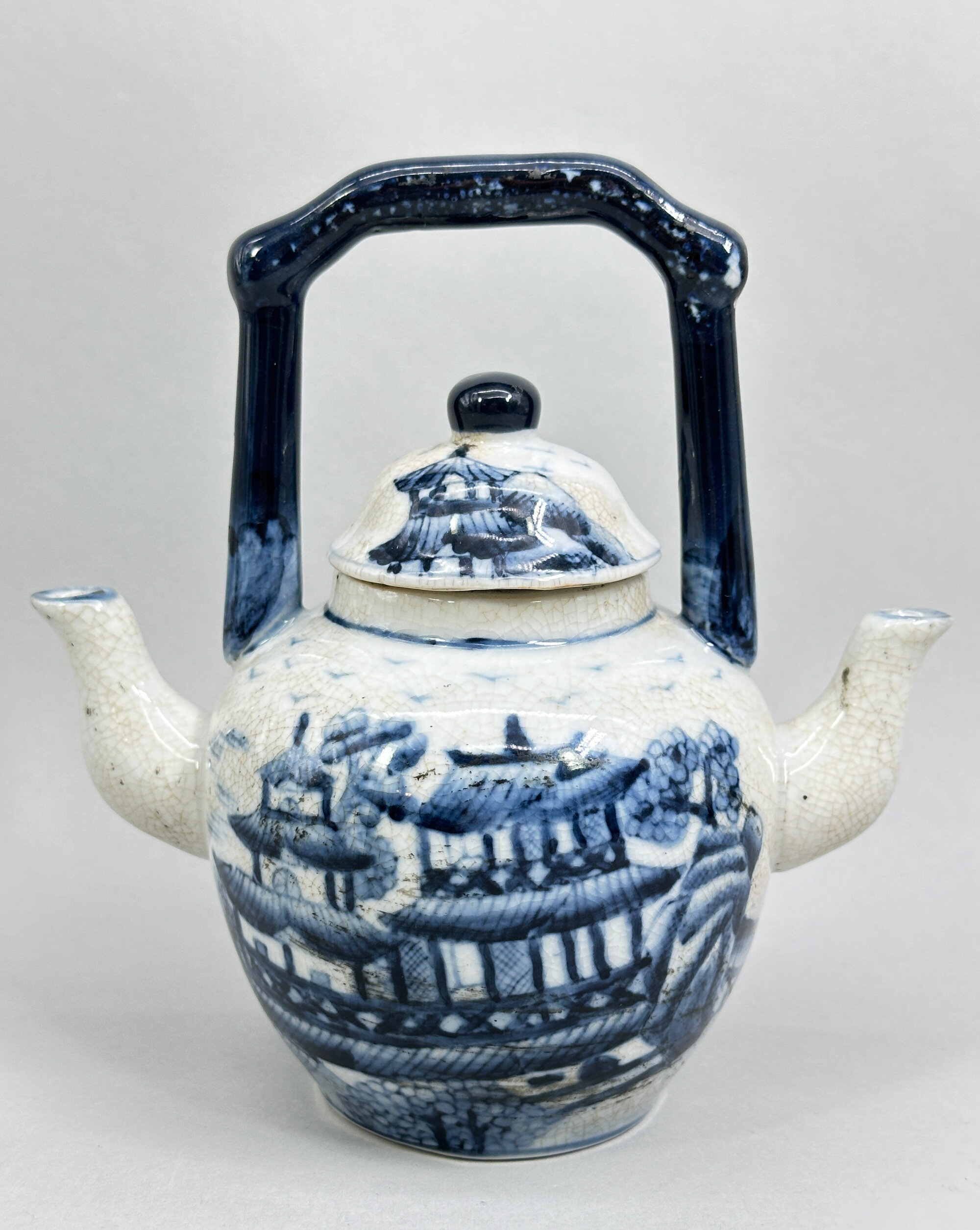
Chinese provincial double spout Teapot, early C20th
Price: £55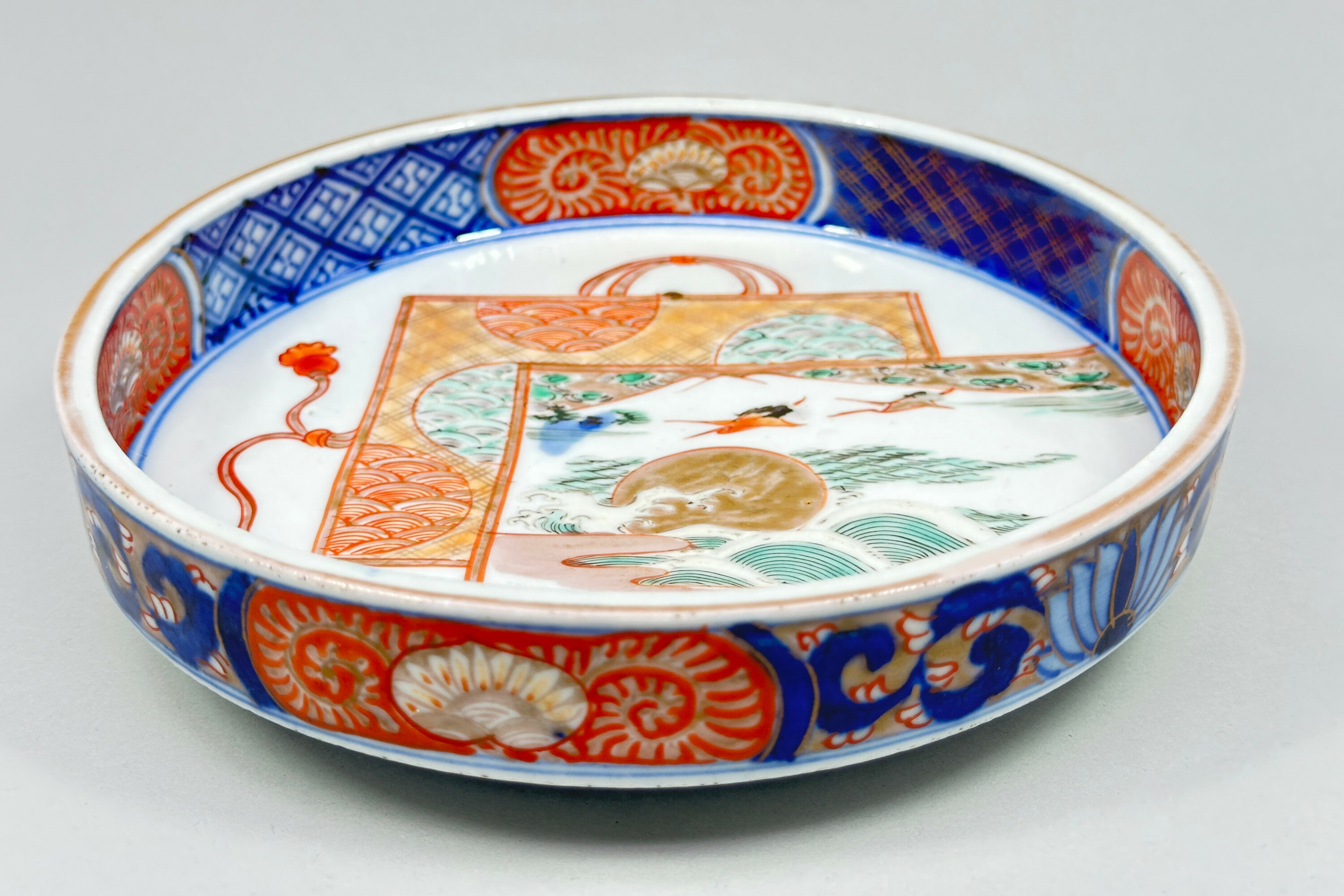
Japanese Arita shallow Bowl circa 1880
Price: £55The town of Arita in the former Hizen Province, northwestern Kyūshū island, was a major centre for the production of porcelains in Japan. Best known for blue and white pieces it also produced polychrome wares as well, including the familiar Imari colourings. While similar to Imari, the wider palette of colours used here is usually termed ‘Arita’ and this bowl employs not only the colourings but also many of the decorative elements found in these wares. The angular form, though, is unusual. Dating is to the Meiji era (1868-1912) probably around 1880.
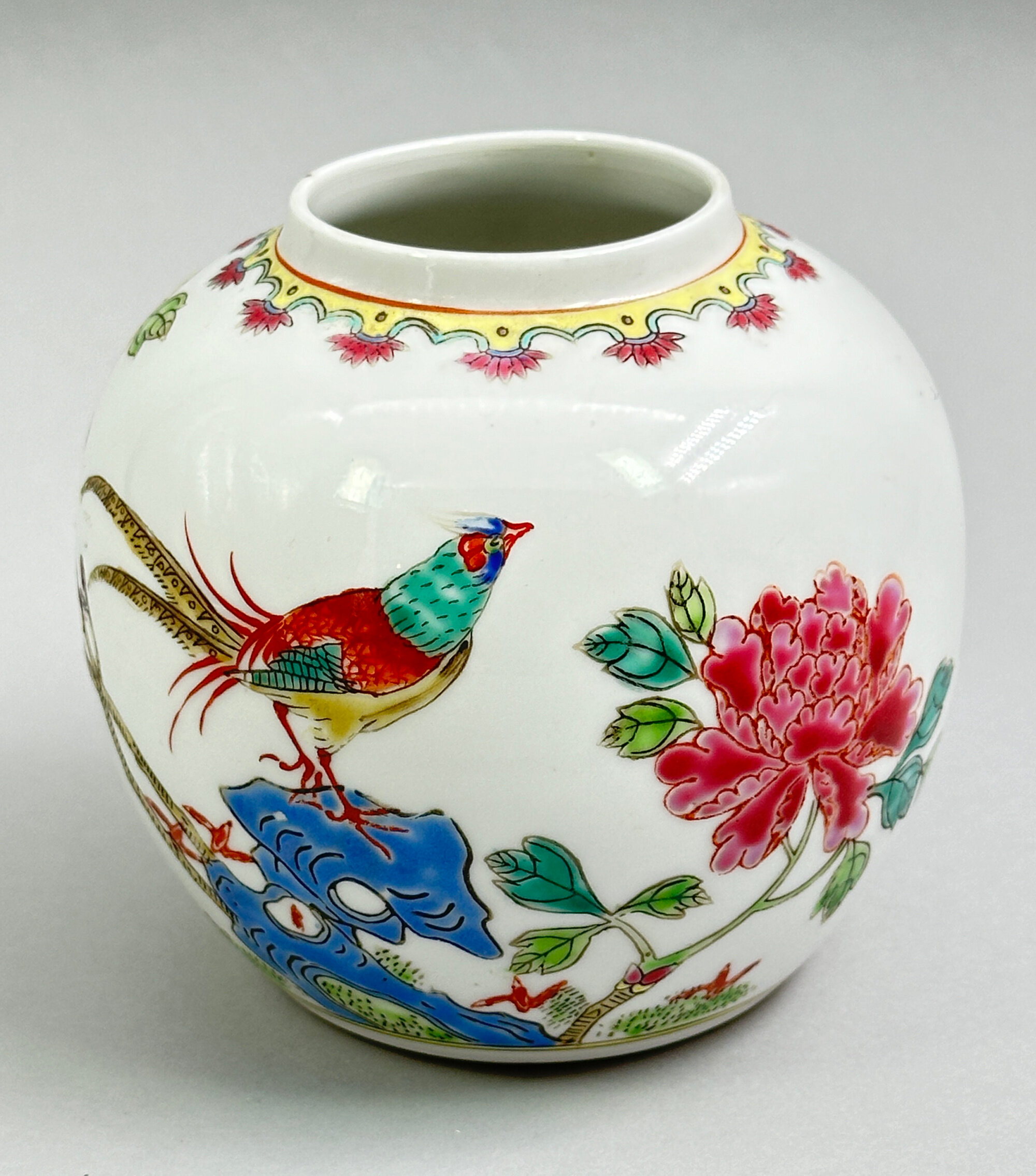
Small Chinese Ginger Jar decorated in Famille Rose enamels, second half C20th
Price: £25The stamped mark to the base reads ‘Zhongguo Jingdezhen Zhi (China Jingdezhen Made)’ with the letter ‘V’ between two lines. In the early 1950s almost all the factories in Jiangxi, the province where the kiln town Jingdezhen is situated, were merged into larger units, each made up of ten to fifteen previously independent factories. From this time factory numbers such as we have here (=V=) came to be used and many pieces are found with a wide variety of letters and numbers indicating the various cooperatives. The quality of the productions varied and it is a reasonable assumption that increasing years witnessed a decline. While other examples of this type of jar exist, some with their original domed covers, this piece is of the very best quality, indeed the work matches earlier pieces in the style very closely, and a dating to the mid 1950s seems quite plausible. It shows that the Chinese potters continued to produce to a high standard when they chose to do so and provides a pleasing memento of the closing era of a tradition of porcelain production stretching back long into the past.
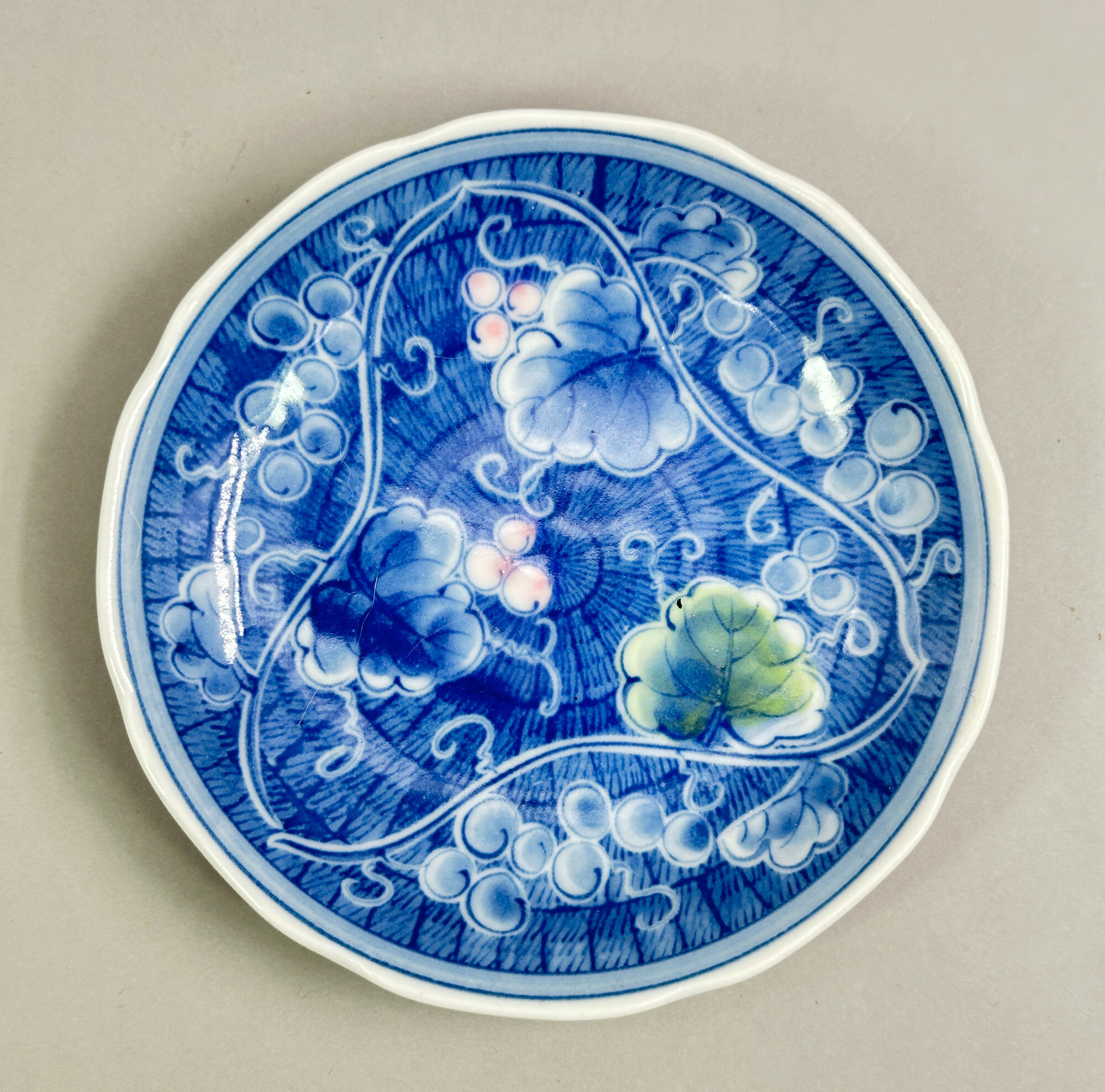
Japanese Arita Blue and White Saucer decorated Gourd and Grapes, mid C20th
Price: £15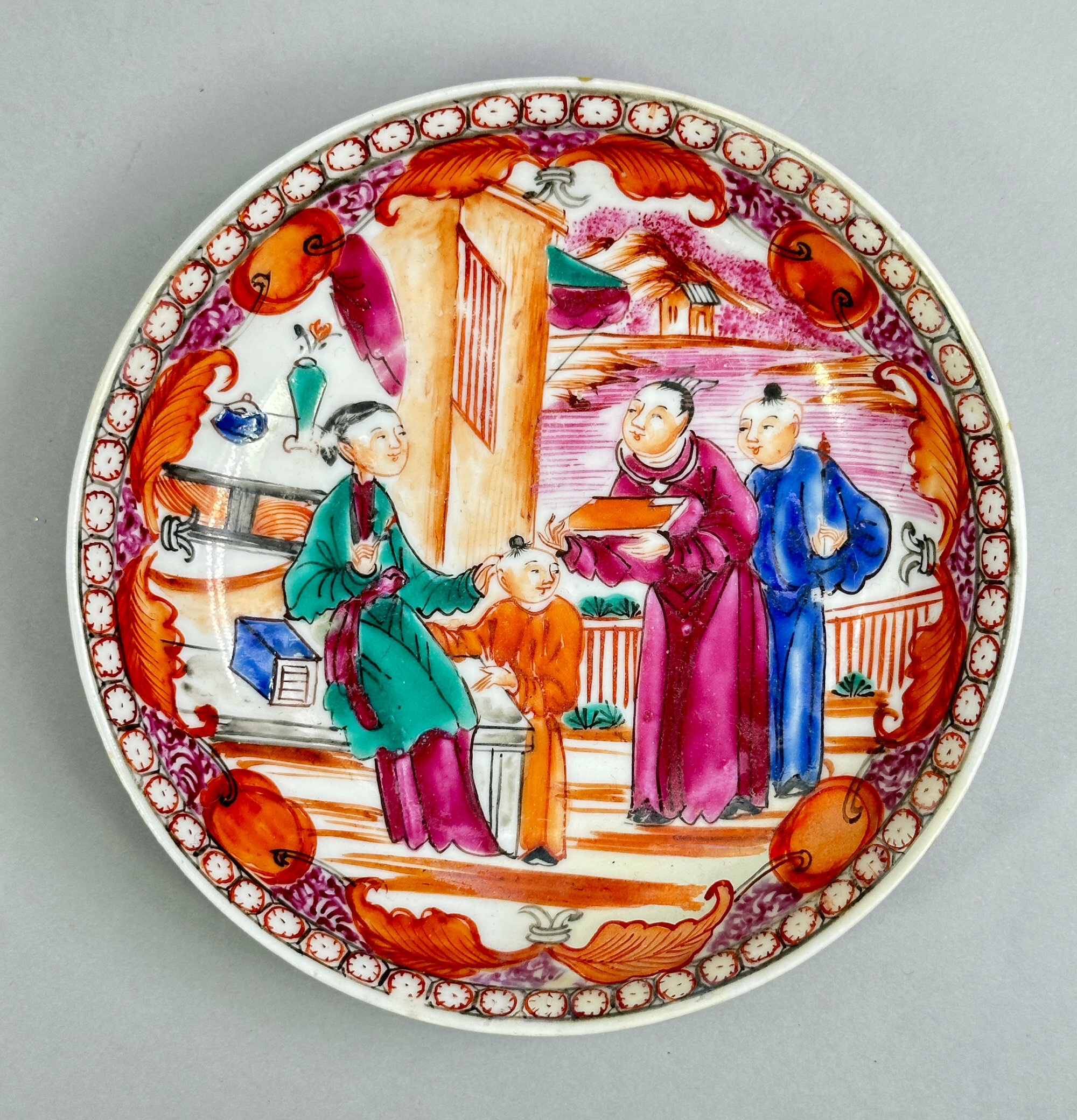
Chinese Mandarin Pattern Saucer circa 1780
Price: £75This is a typical example of the ‘Mandarin’ pattern produced by the Chinese in the late eighteenth century for export to the West where it enjoyed great popularity. The name derives from the male court figures, mandarins, who form such an important component of the designs. The scenes are carefully composed with much charm and rendered in a wide variety of coloured enamels with much emphasis on deep pink (‘Famille Rose’) and iron red. A wide variety of wares were produced in the pattern including vases, bowls, dinner services and tea sets, as here, where there would have been a set of bowls and saucers along with matching serving items. The charm and quality of this piece speaks for itself and presents an excellent and collectible example of this opulent pattern from the eighteenth century.
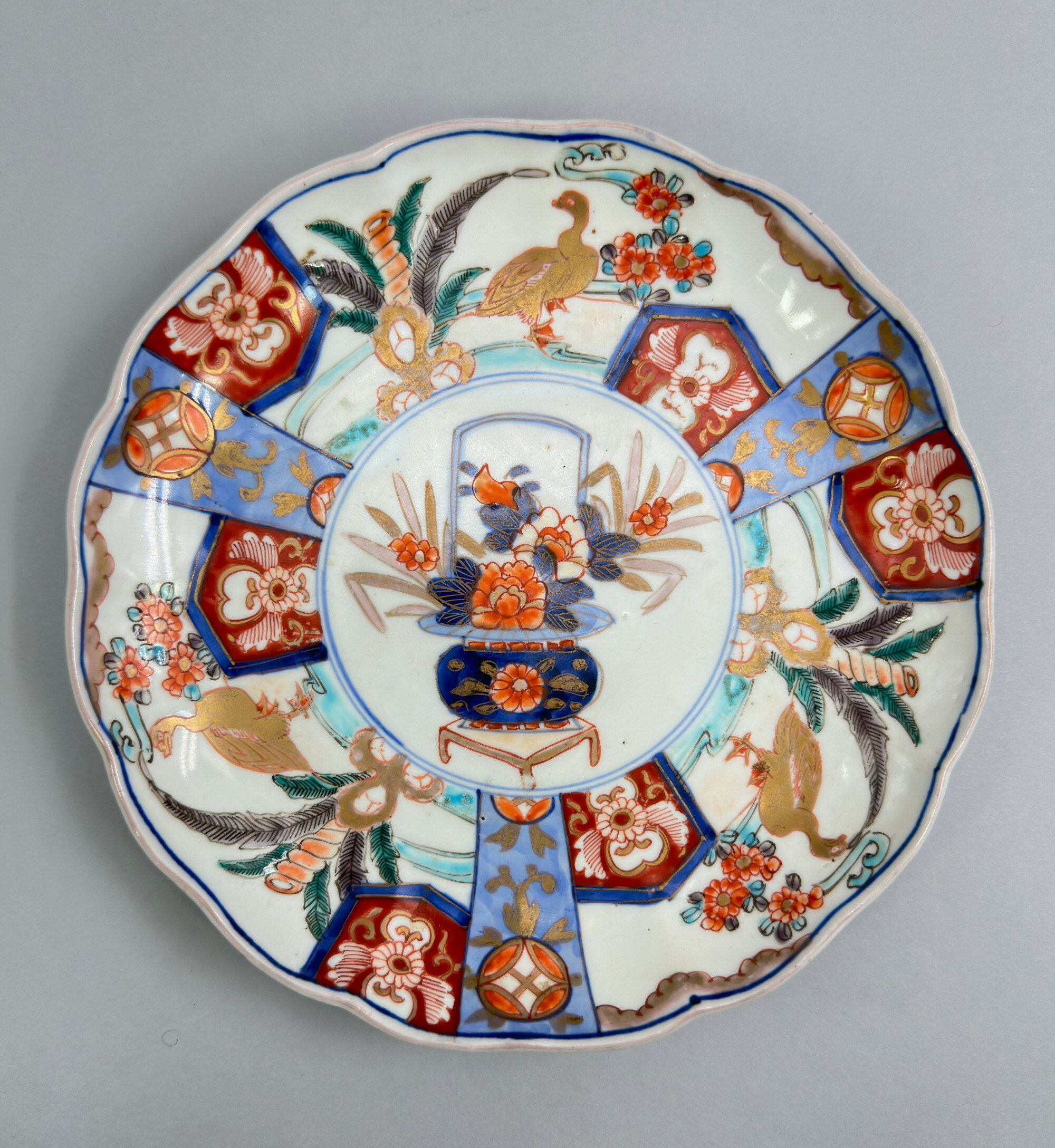
Japanese Arita Dish circa 1880
Price: £45The town of Arita in the former Hizen Province, northwestern Kyūshū island was a major cente for the production of porcelains in Japan. Best known for blue and white pieces it also produced polychrome wares as well, including the familiar imari colourings. While similar to Imari, the wider palette of colours used here is usually termed ‘Arita’ and the decorative appeal of the style is clear. This plate probably comes from an original set of five and its quality is much above average. Dating is to the Meiji era (1868 - 1912) probably around 1880.
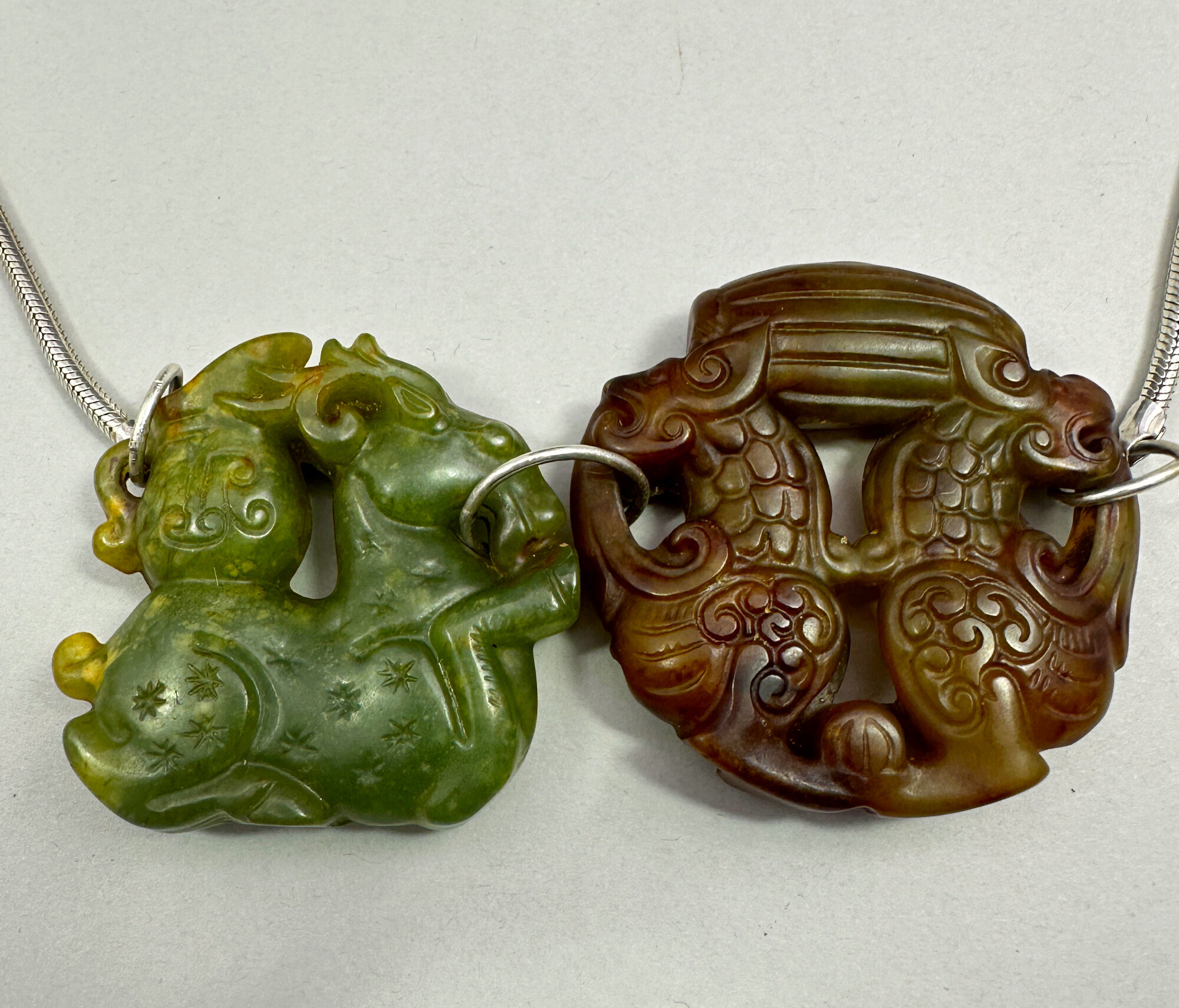
Two jade carvings mounted as a necklace
Price: £125
Chinese Shoushan Soapstone Seal with the characters A.H., C20th
Price: £45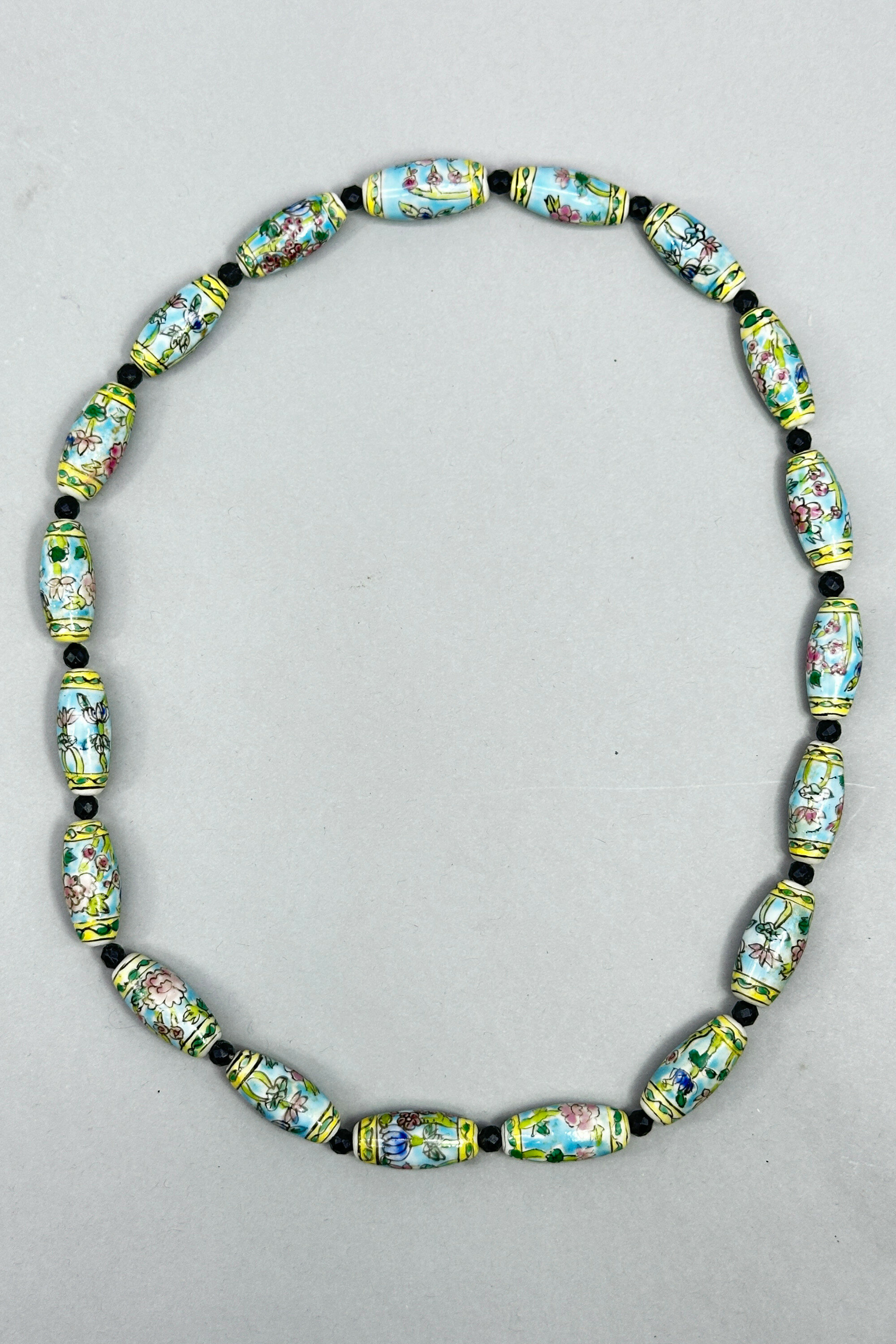
Strand of Chinese ceramic beads c1950
Price: £25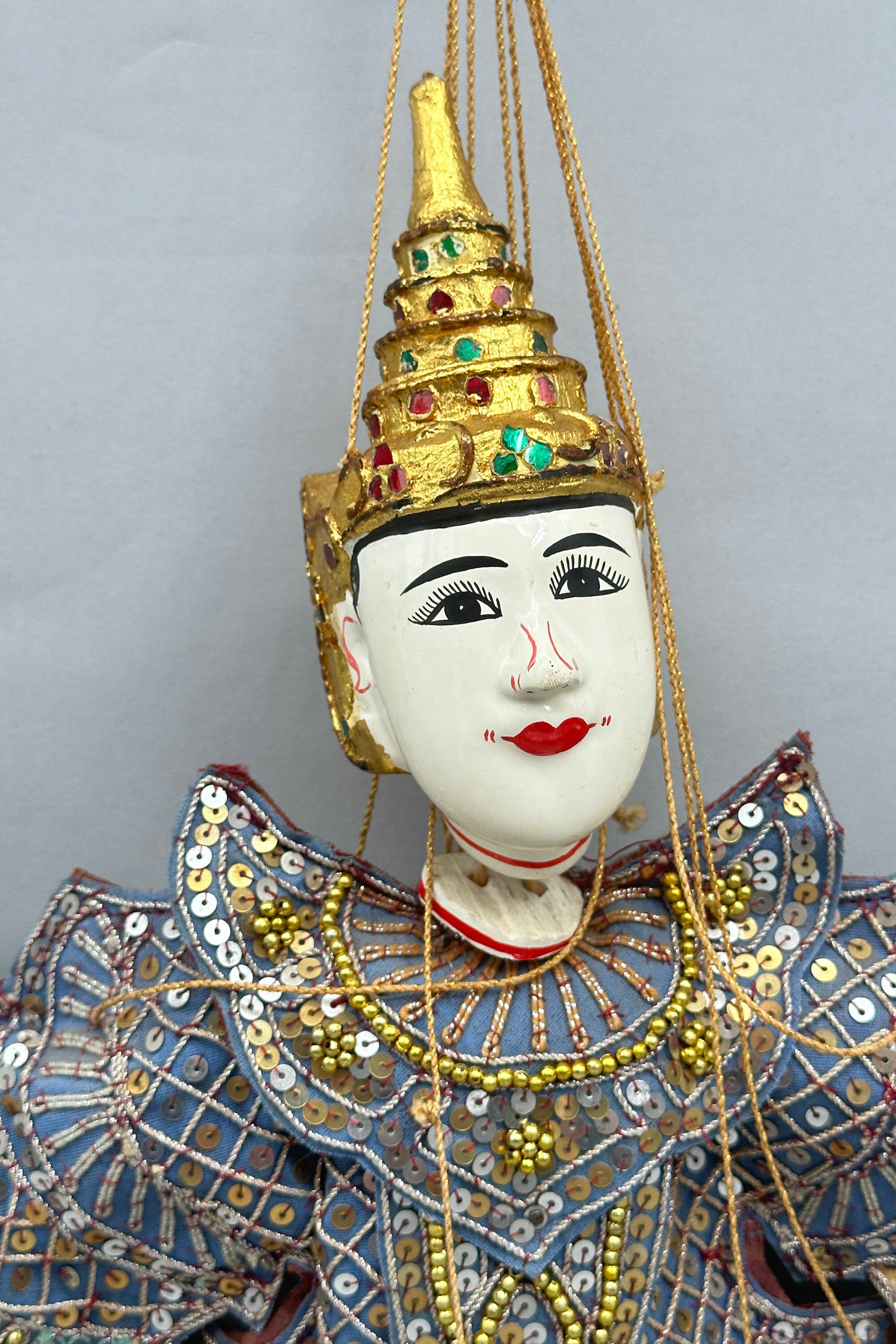
Marionette Puppet of a Dancing Lady or Princess, probably Burmese late C20th
Price: £45The style of the dress suggests Burmese work and very similar fabric decoration can be seen in the cloth wall hangings also included in this sale. Burma has a tradition of marionette puppetry (marionettes are a specific form of puppet where the figure is controlled by strings or rods) which dates back to the late eighteenth century and is still popular today with visitors to the country, now called Myanmar. Termed ‘Yoke thé’, the Burmese marionette tradition allowed political commentary under the guise of of an entertainment display. The standard ‘troupe’ comprised twenty seven characters, both animal and human, and this lady figure is probably the ‘princess’ (‘Minthami’). She is a fine example of the genre and probably dates to the 1990s when General Khin Nyunt of the ruling junta lent official support to marionette actors and troupes in an attempt to revive a tradition which had fallen somewhat into decline.
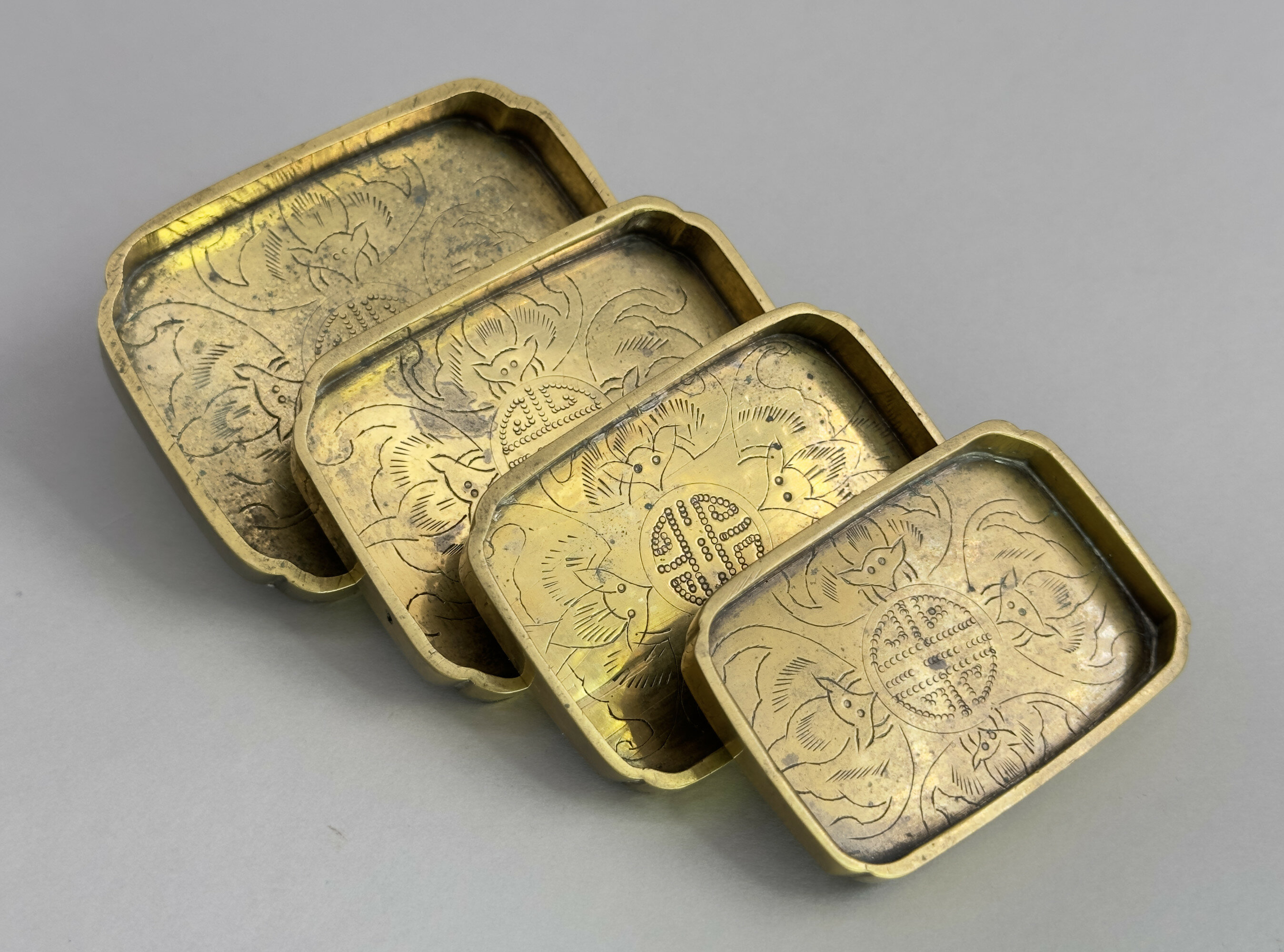
Nesting Set of Four Small Brass Trays with an engraved designs of Bats, Chinese C20th
Price: £30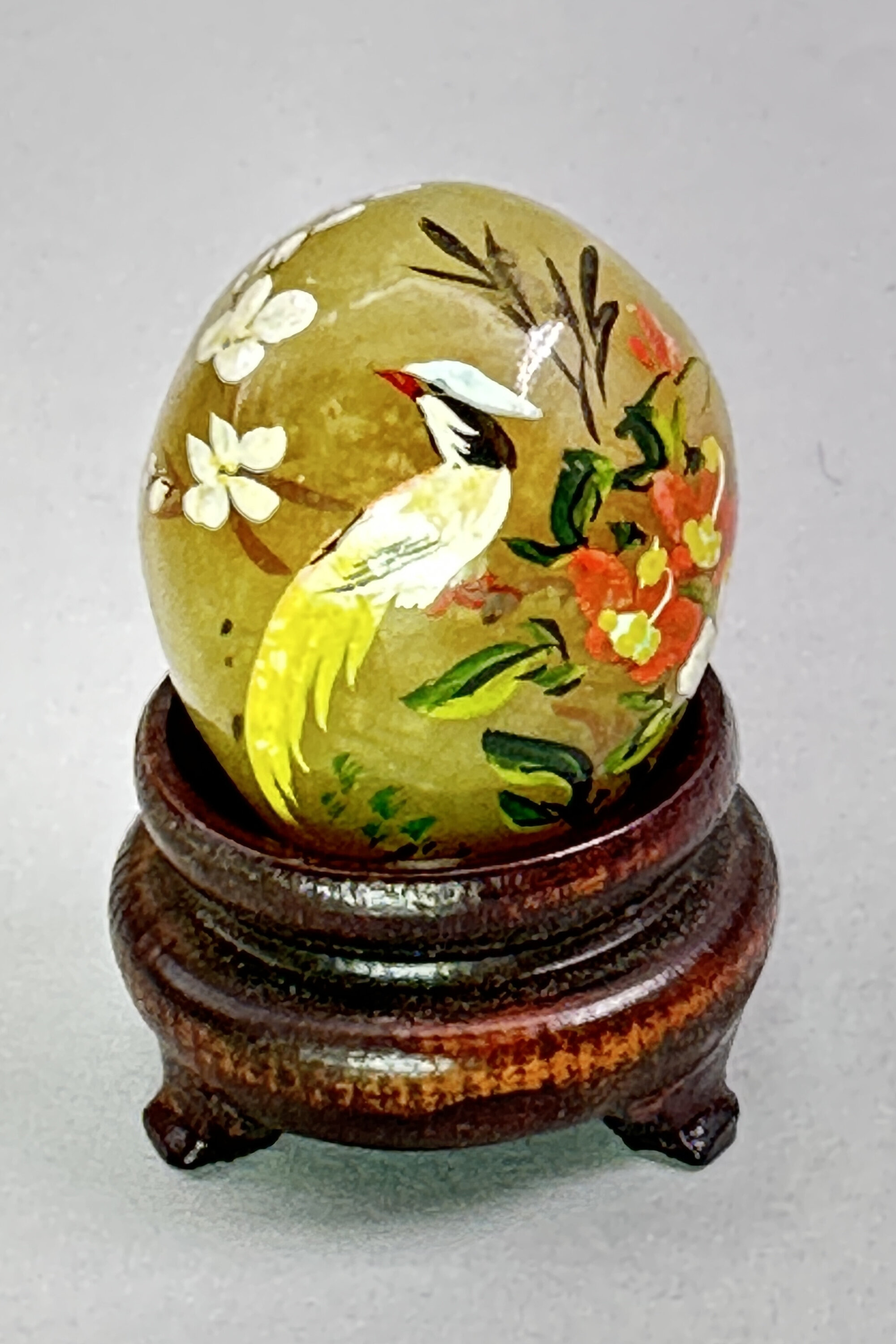
Brown Alabaster Egg painted with a bird and flowers, fitted wood stand, Chinese C20th
Price: £25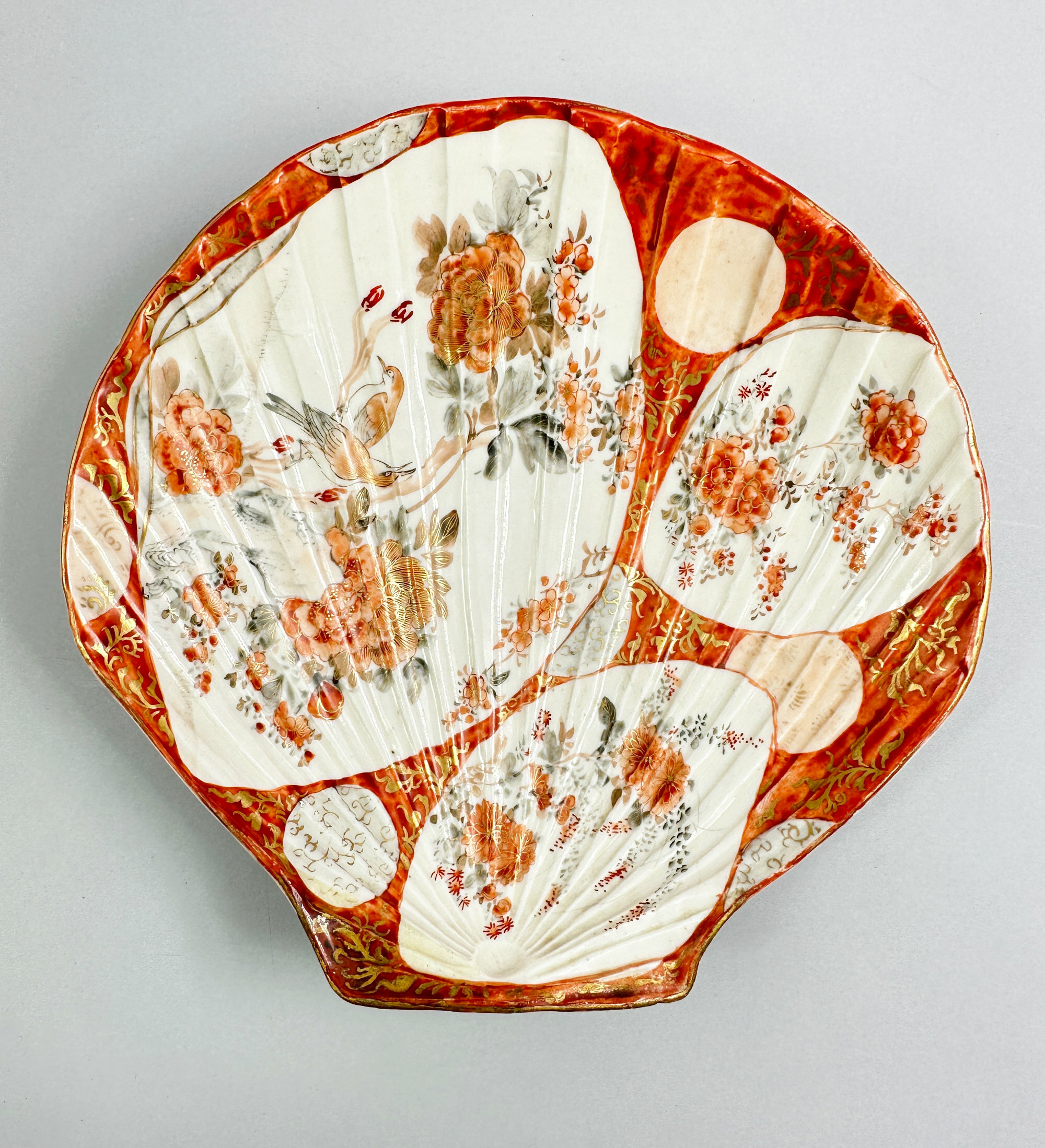
Japanese Kutani Shell Shape Dish, circa 1880
Price: £55Kutani (the word means 'nine valleys') porcelain was made at various factories in the former Kaga province of Japan. The earliest pieces were in a completely different style employing a palette of colours emphasising green, the so called 'Ko Kutani'. Production of this ceased around 1730, and manufacturing was not revived until the early nineteenth century when the more familiar colourings of iron red and gold were introduced. Many pieces were exported to the West in a variety of forms including vases and wall plates. This shell dish is more unusual; the shape is more normally found in Chinese ceramics. Perhaps one of an original pair, this dish, like its Chinese counterparts, was probably intended as a serving dish and could even be used as such today although it can well stand as a decorative item.
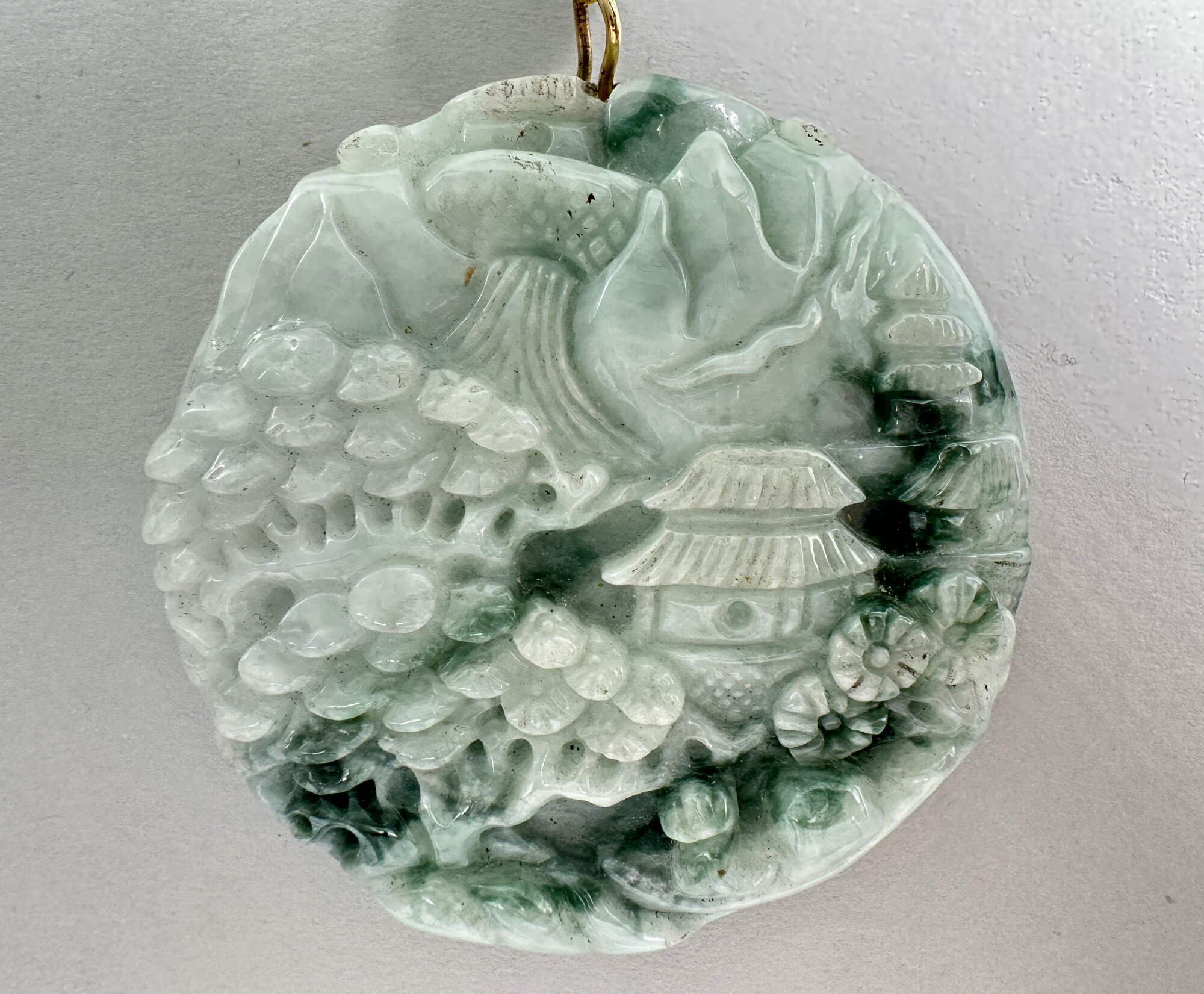
Floating Flower jade pendant on bead necklace
Price: £175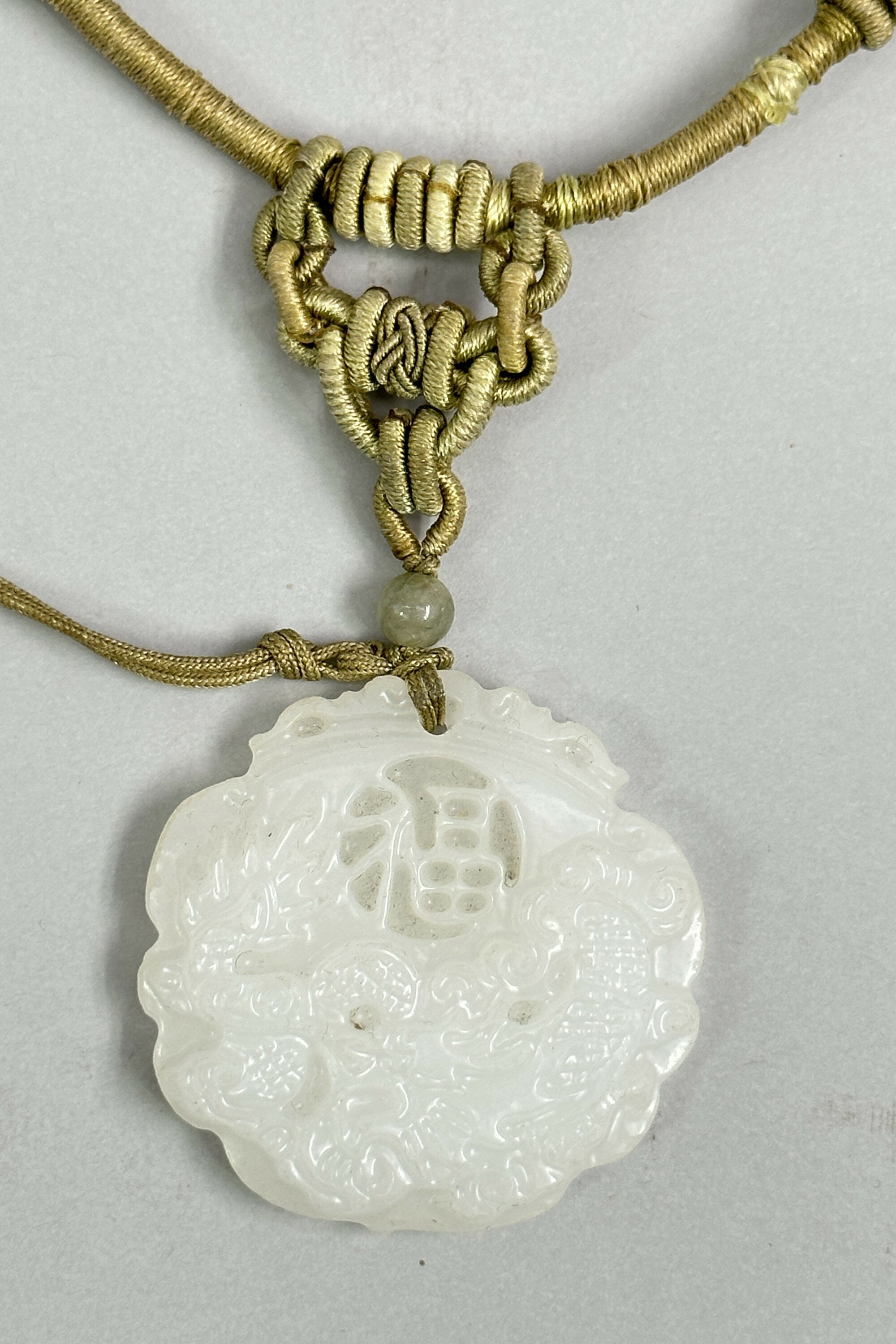
A very finely carved white pendent on traditional silk cord, Modern
Price: £25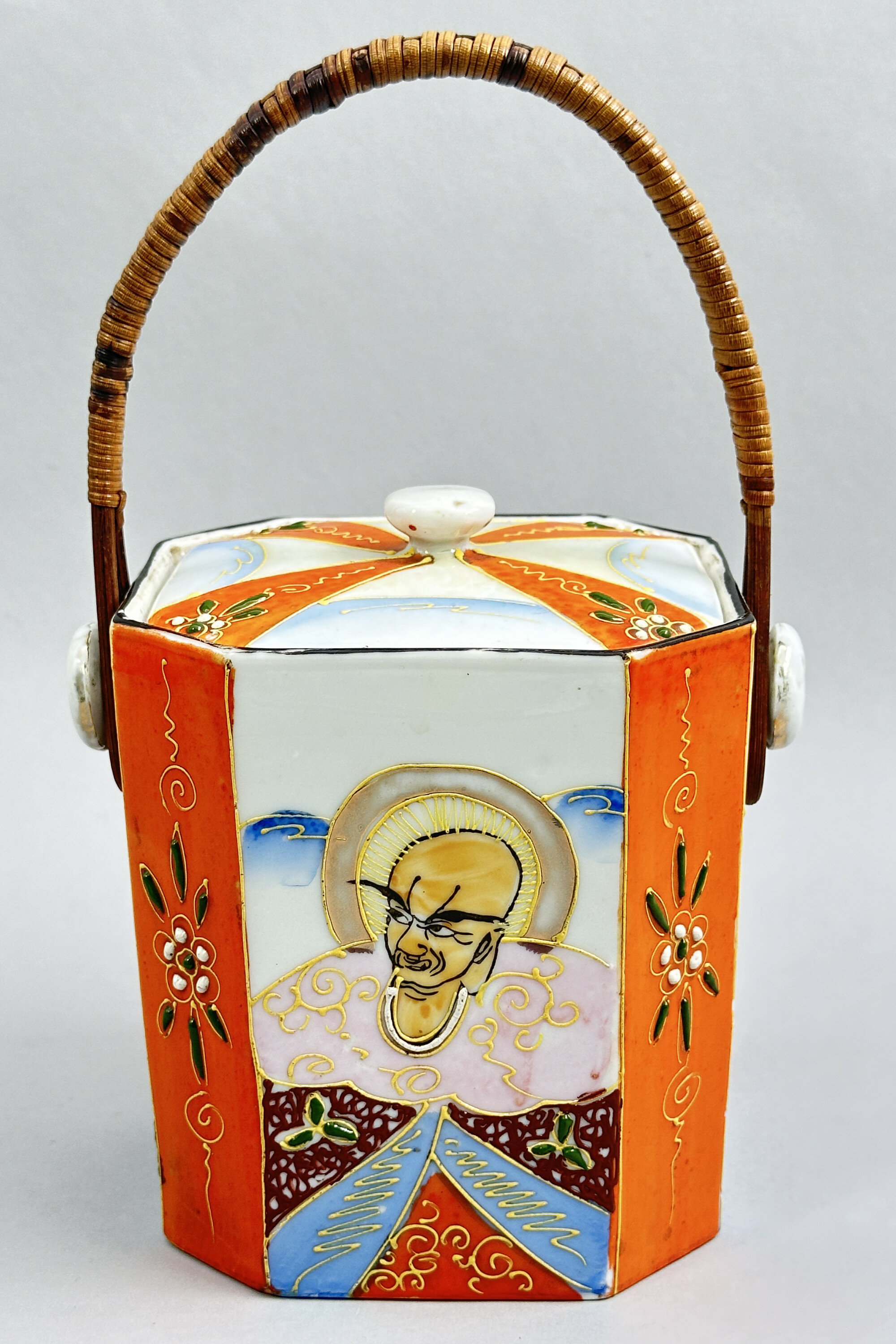
Japanese Samurai China Biscuit Box and Cover, C20th
Price: £25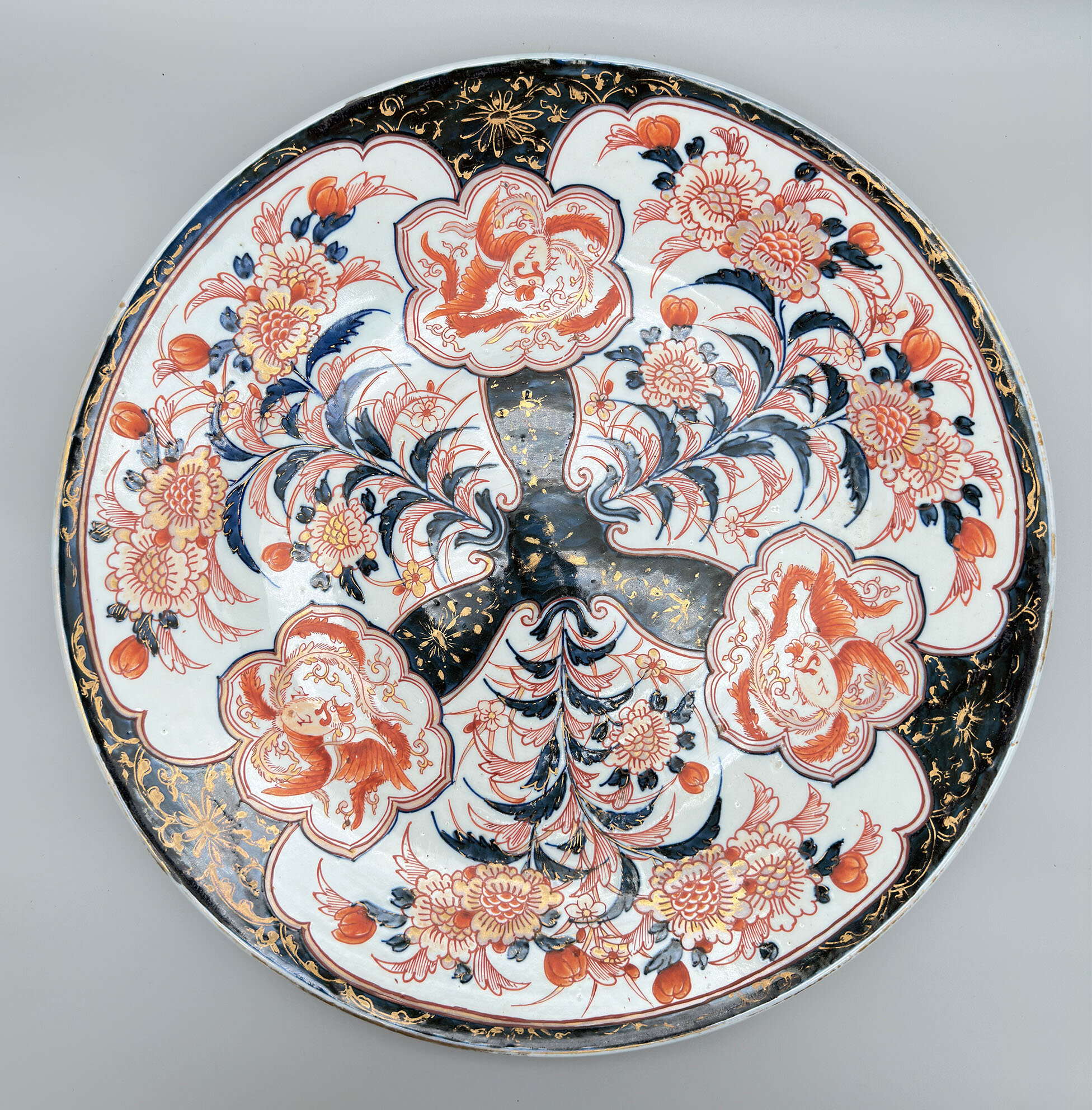
Japanese Imari Charger, Meiji Period (1868-1912) c1870
Price: £450………………………………………………………………………………….....................................................................................………
Trade with Japan in the seventeenth century was predominantly directed by the Dutch merchants who had a trading station at Nagasaki. It was their requirements which dictated what the potteries at Arita should make and by the 1660s they were demanding ‘red wares’, the Japanese term for pieces in the colourings of underglaze blue, red and gold, sometimes with additional colours as well. Once made, these porcelains were sent to the port of Imari from where they began their journey to the West and from which they were to take their name. They proved to be immediately popular on their arrival in Holland and the auctions of the cargoes as they arrived were extremely successful. This led to a plentiful supply of chargers, bowls and vases (many with covers and some forming part of a five piece garniture) which were to decorate the royal and aristocratic homes not only of Holland itself but throughout Europe and particularly in Great Britain, where they can be seen today.
While the forms were relatively plain, the decoration was lavish, employing panels with floral or animal elements on a densely covered ground, often with swirling designs. Two typical examples are illustrated in images (9) and (10), both dating from the late seventeenth or early eighteenth century. The popularity of the style naturally led to it being copied and the Chinese started to produce it from the late Kangxi period (1662-1722) onwards, occasionally following the originals closely but soon producing their own adaptations which were often slightly more restrained and refined. By the beginning of the nineteenth century, Imari exports from Japan and China had lapsed but their place was soon taken by pieces from the European and British manufacturers. In England both Spode and Mason’s Ironstone, amongst others, produced their own version of ‘Imari’, even attempting vases in the colourings as well as flatware. Eventually Japan re-entered the market and from 1860s onwards the West was again supplied in quantity with their Imari wares, although by the end of the century some of these were of rather poor quality.
But at their best, the Japanese workshops in the nineteenth century could well match the work of their predecessors and this charger is a prime example. The form is almost that of a very shallow bowl with the sides evenly curving upwards (see image 4) and an unglazed footrim to the reverse. The nineteenth century decorators often created their own designs, but the decoration here follows the originals very closely indeed, even in the colouring of the underglaze blue which has an almost blackish tinge which is also seen in the two earlier examples illustrated. There are three large fan shape panels with flowering peony and three smaller ones with lotus leaf borders and ‘ho ho’ birds, all on a blue ground with stylised gilt floral decoration. One can almost see a wheel here and the design nearly seems to be in motion which was, again, a feature of earlier pieces. The reverse has just three sprays of peony which allows one to see the quality of the glaze.This, combined with the paste of the foot and the general quality of the decoration all point to a mid nineteenth century dating, probably circa 1870 after trade with Japan resumed as a result of the Meiji restoration.
Japanese Imari wares deservedly retain their popularity today and this charger would be an elegant addition to a contemporary interior or even indeed to a stately home itself.
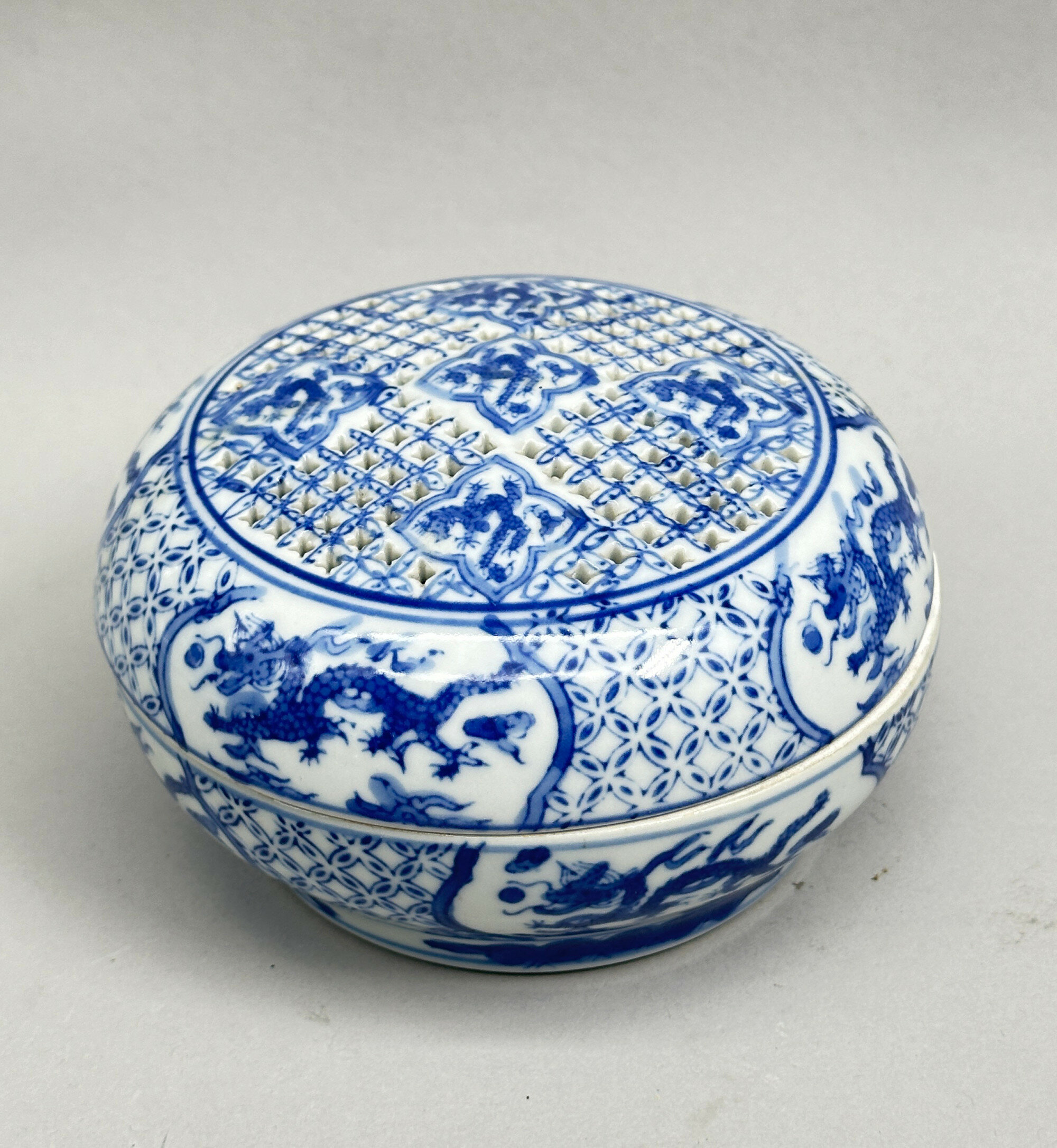
Chinese Blue and White Box and Cover with pierced lid, late C20th
Price: £25The Charles Sadek Import Company was founded in 1936 by the father and son Charles and Norman Sadek and began by importing decorative items from Japan later broadening their range to a wider variety of suppliers including China. These pieces were sold under the ‘Andrea by Sadek’ brand, named after Norman's daughter Andrea. The business continued to a third generation until it was taken over by Fitz & Floyd in 2015.
This box, then, is a typical example of their range of wares, good quality decorative items marketed at an affordable price. The quality of these boxes can vary and this piece seems to be an above average example.
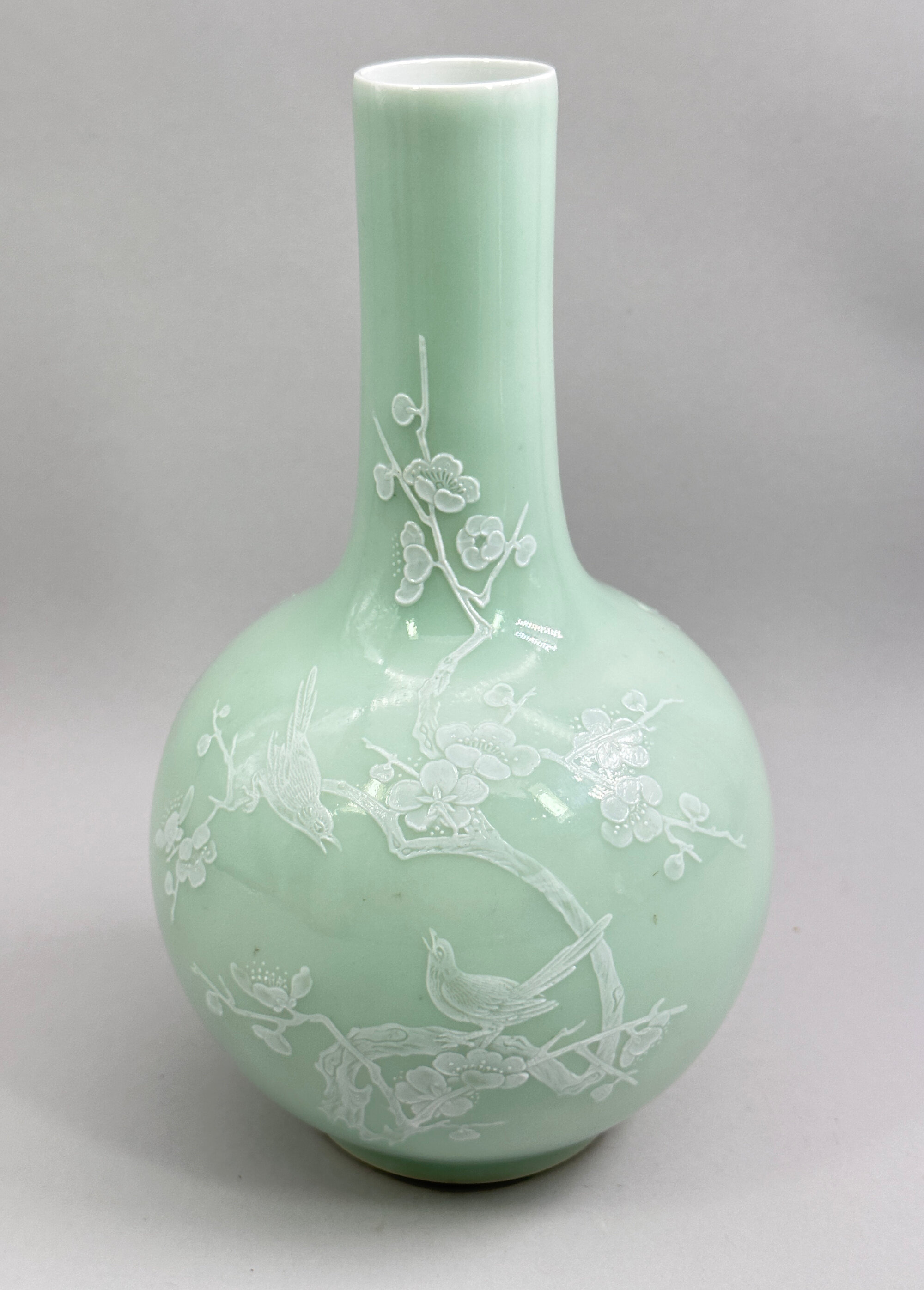
Chinese Celadon Glaze Bottle Vase with White Slip decoration, Jingdezhen mark, C20th
Price: £75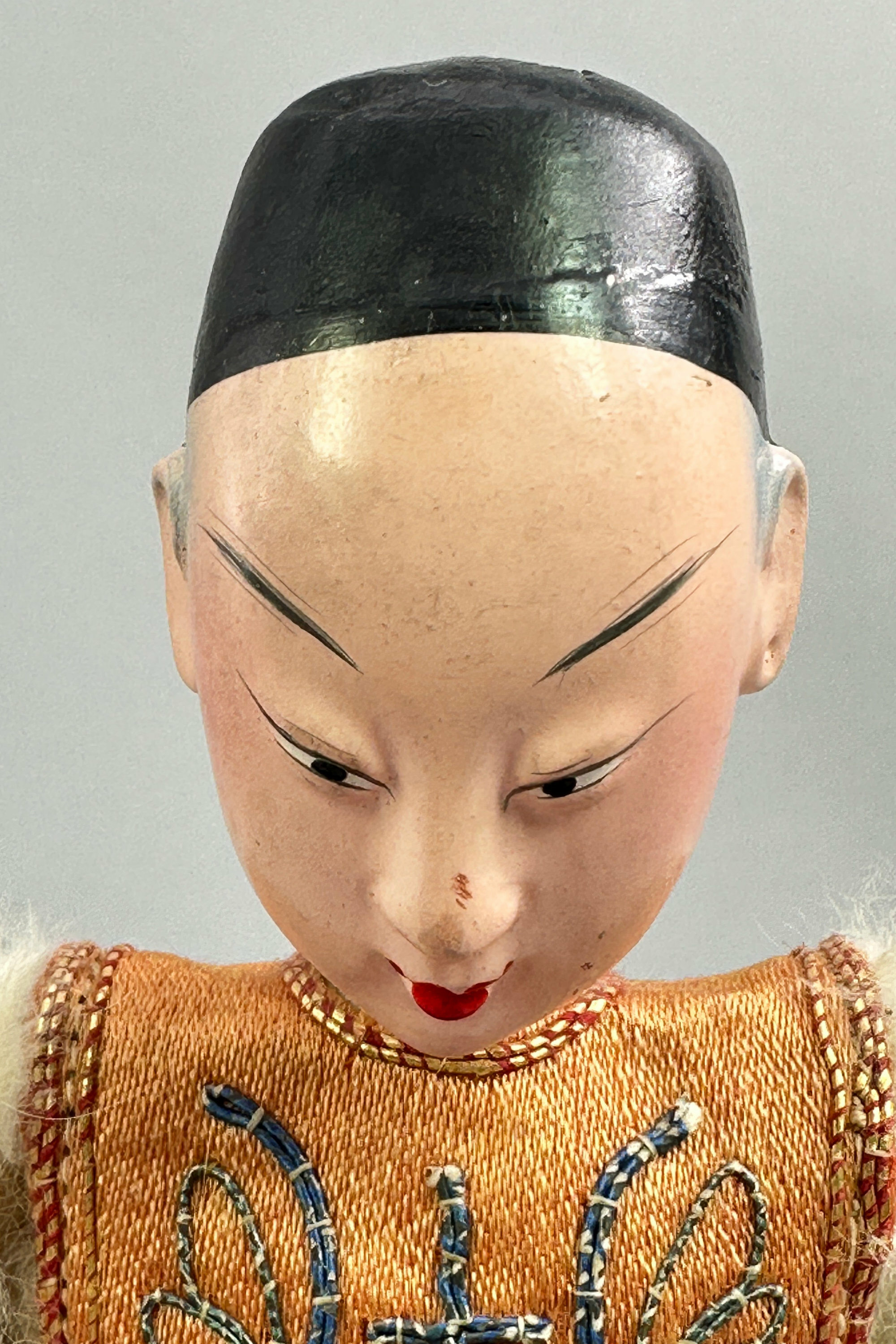
Chinese Doll of a man dressed in traditional costume, early C20th.
Price: £95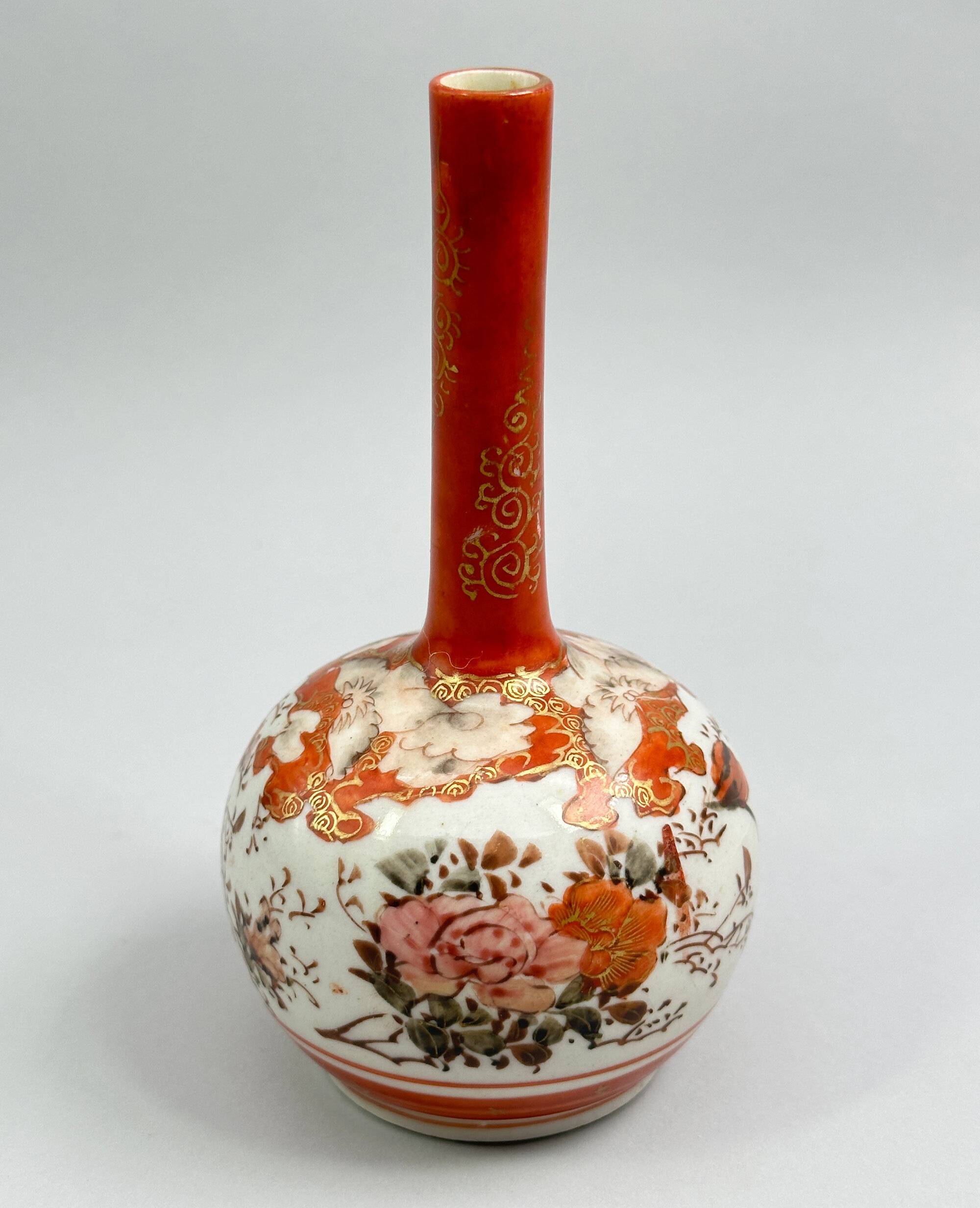
Japanese Kutani Vase of Water Dropper form, circa 1880
Price: £45Kutani (the word means 'nine valleys') porcelain was made at various factories in the former Kaga province of Japan. The earliest pieces were in a completely different style employing a palette of colours emphasising green, the so called 'Ko Kutani'. Production of this ceased around 1730, and manufacturing was not revived until the early nineteenth century when the more familiar colourings of iron red and gold were introduced. This small vase is typical of pieces exported to the West in fairly large quantities at the end of the nineteenth century. The form suggests a water dropper and is found in Imari colourings as well. Many of the Kutani pieces were marked, sometimes simply 'Ku' 'Tani' as here. The glaze was sometimes unstable with a tendency to craze as can be seen here, but this is original to the manufacture and does not detract from the piece's decorative appeal.
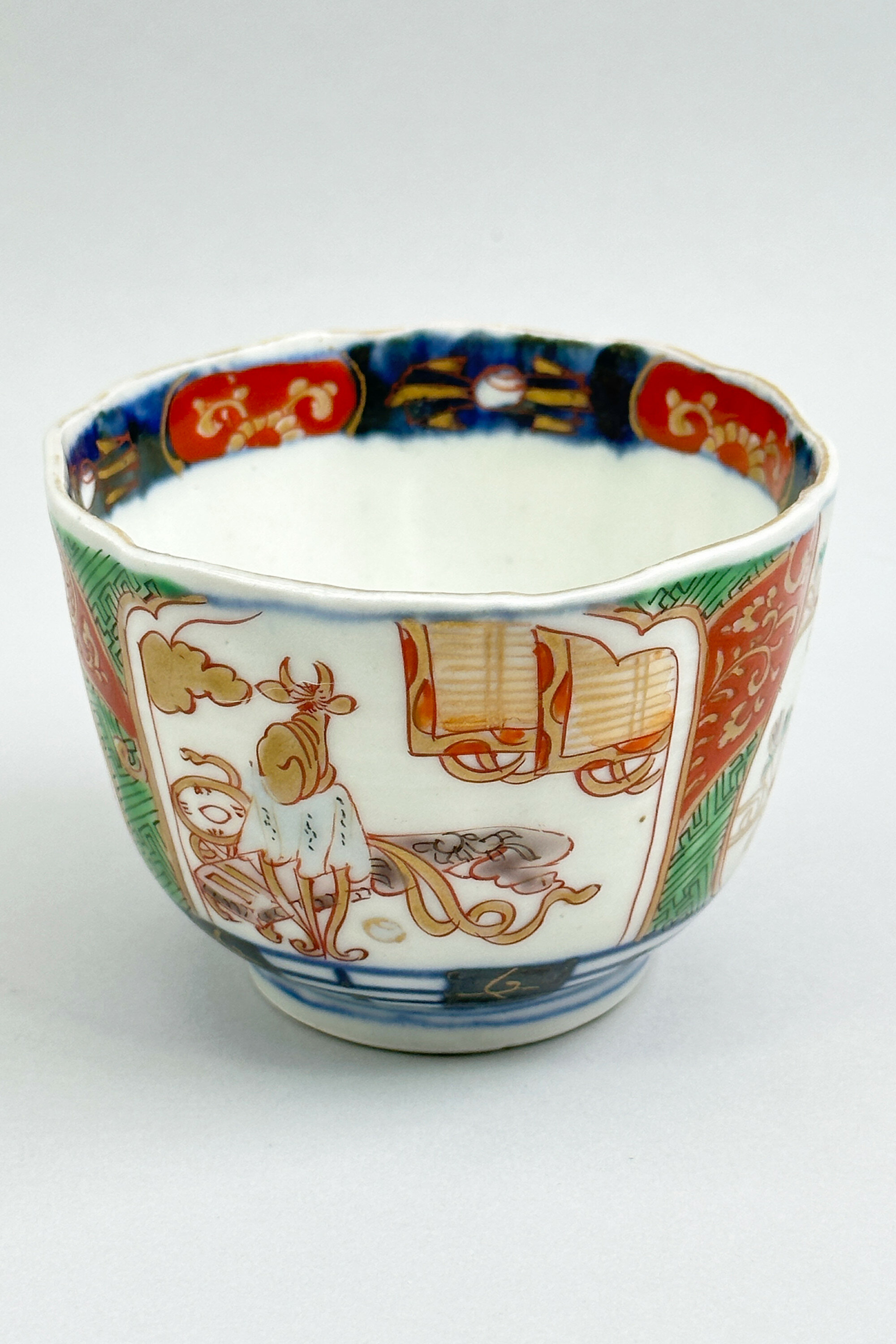
Japanese Arita Bowl decorated with panels of flowers and interior Scenes, circa 1820
Price: £45The rather more elaborate style of decoration here and the addition of enamel colours to the standard imari palette of underglaze blue, iron red and gold resembles 'kenjo imari' pieces produced in Japan in the eighteenth century and in the early nineteenth century, a specific type of Imari that was highly decorated and meant for domestic consumption, Kenjo, meaning 'for presentation'. The paste of the foot, harder and smoother than that used in the later nineteenth century, suggests a dating here to around 1820 before trade with the West was temporarily paused. The form suggests a cup for Sake and this piece was probably one of an original set of five, but it stands on its own as a decorative item in miniature.
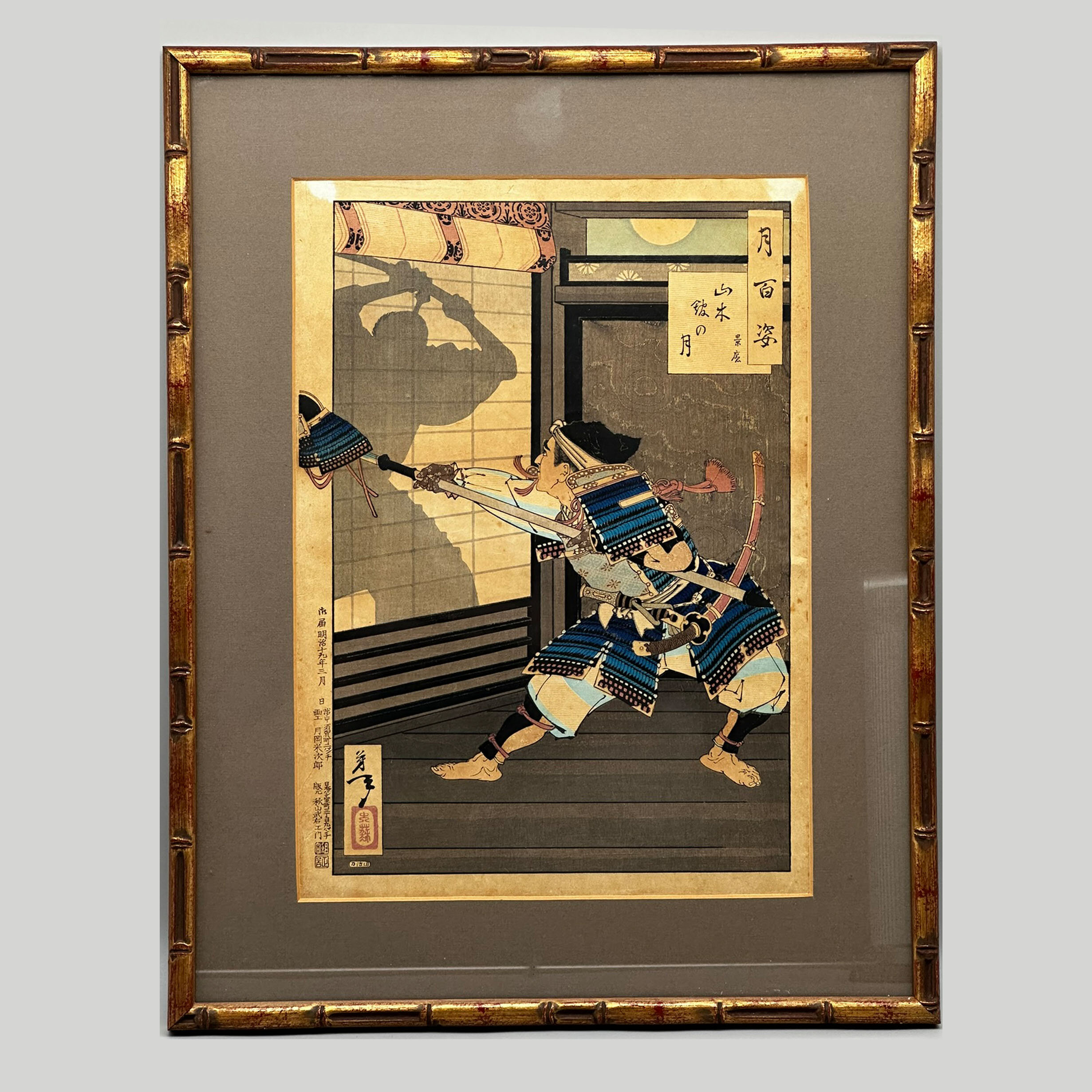
Japanese Woodblock Print - Kagekado, Moon of Yamaki Mansion, by Yoshitoshi Tsukioka
Estimate: £200 – 300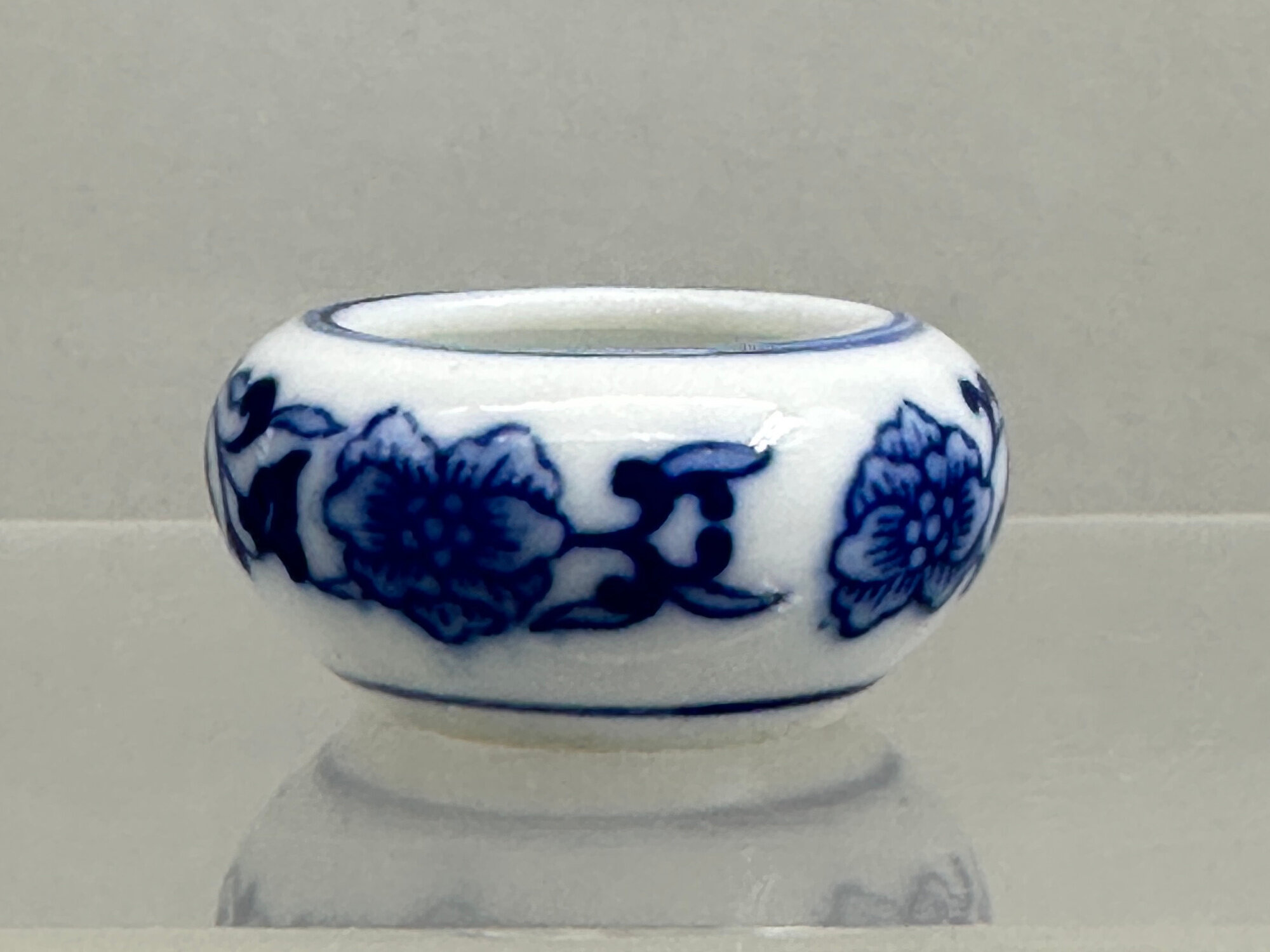
Small Chinese Blue and White Brushwasher, C20th
Price: £25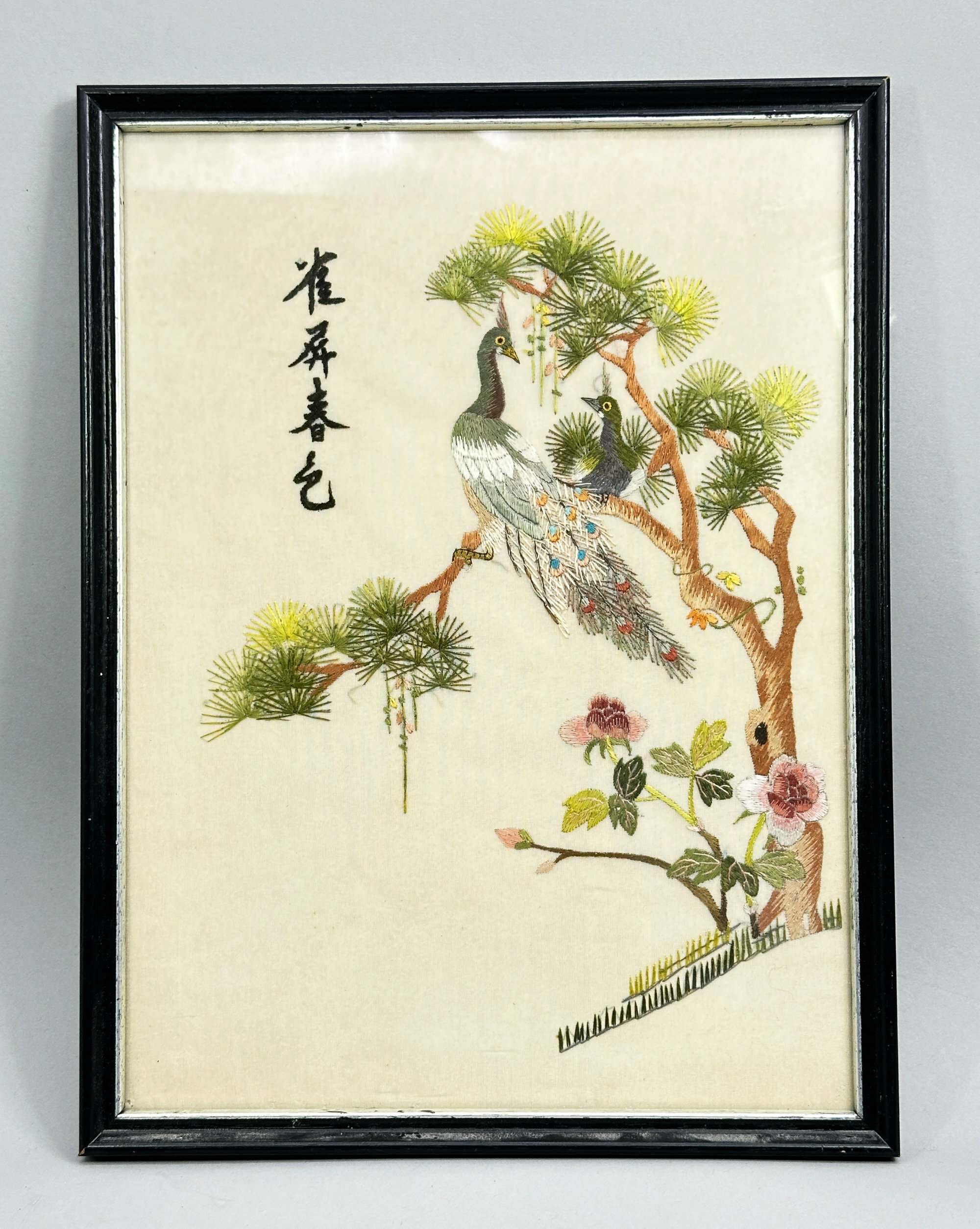
Framed Chinese Embroidery Silk Textile, signed, second half C20th
Price: £25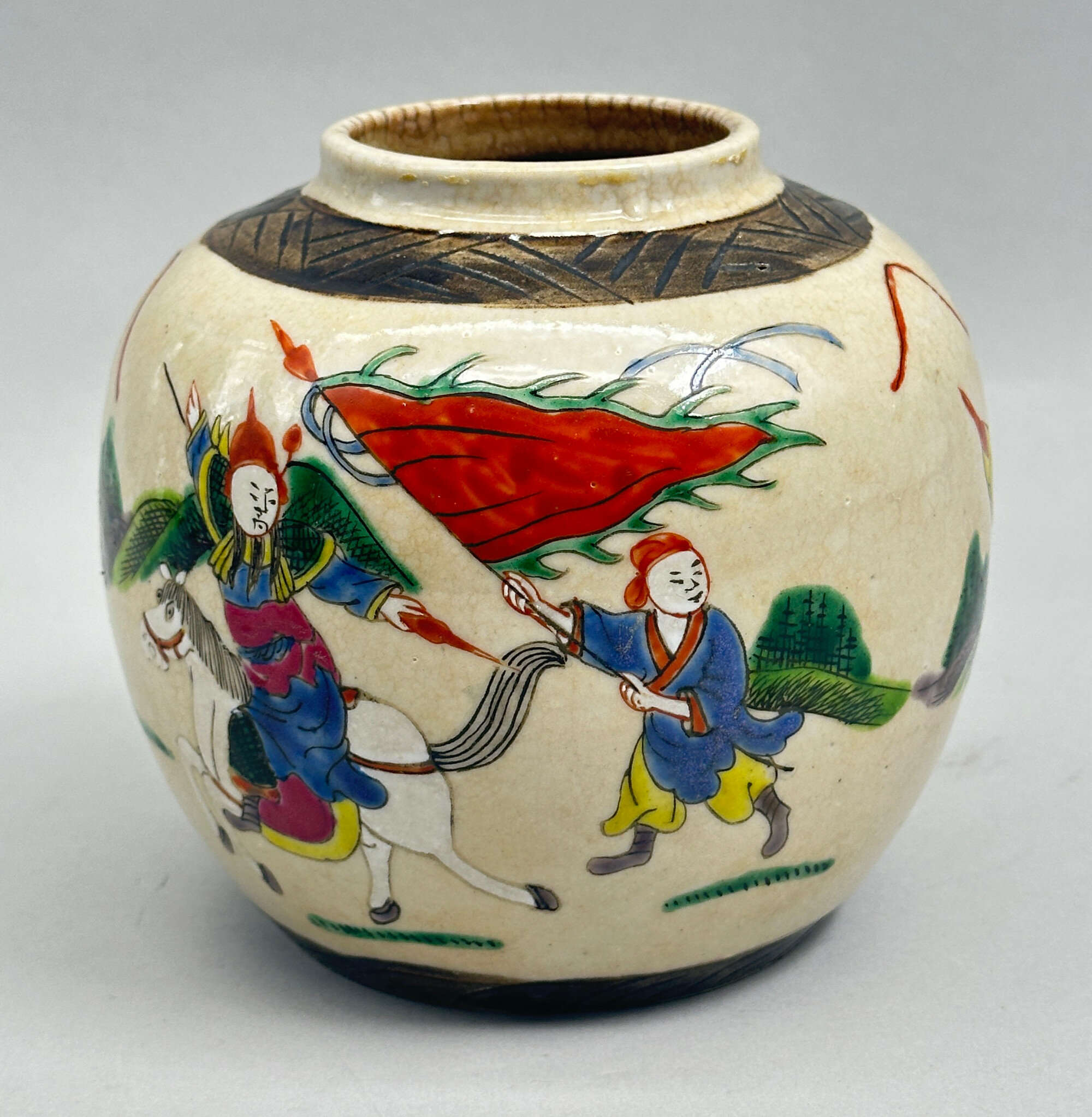
Chinese Crackleware Ginger Jar decorated with Warriors circa 1900
Price: £25'Crackleware' glazed pieces, usually with 'bronzed’ bands, were a staple output of the Chinese potteries from the mid nineteenth century onwards and were produced in a wide variety of mainly vase shape forms, both in polychrome and blue and white and intended as decorative pieces for the Victorian rooms of the West. As with other ceramic types, the quality deteriorated and this piece is typical of the late productions with a more modest level of craftsmanship but still retaining a naif charm. As with many ginger jars, this one lacks its original domed cover which would have been decorated to match.
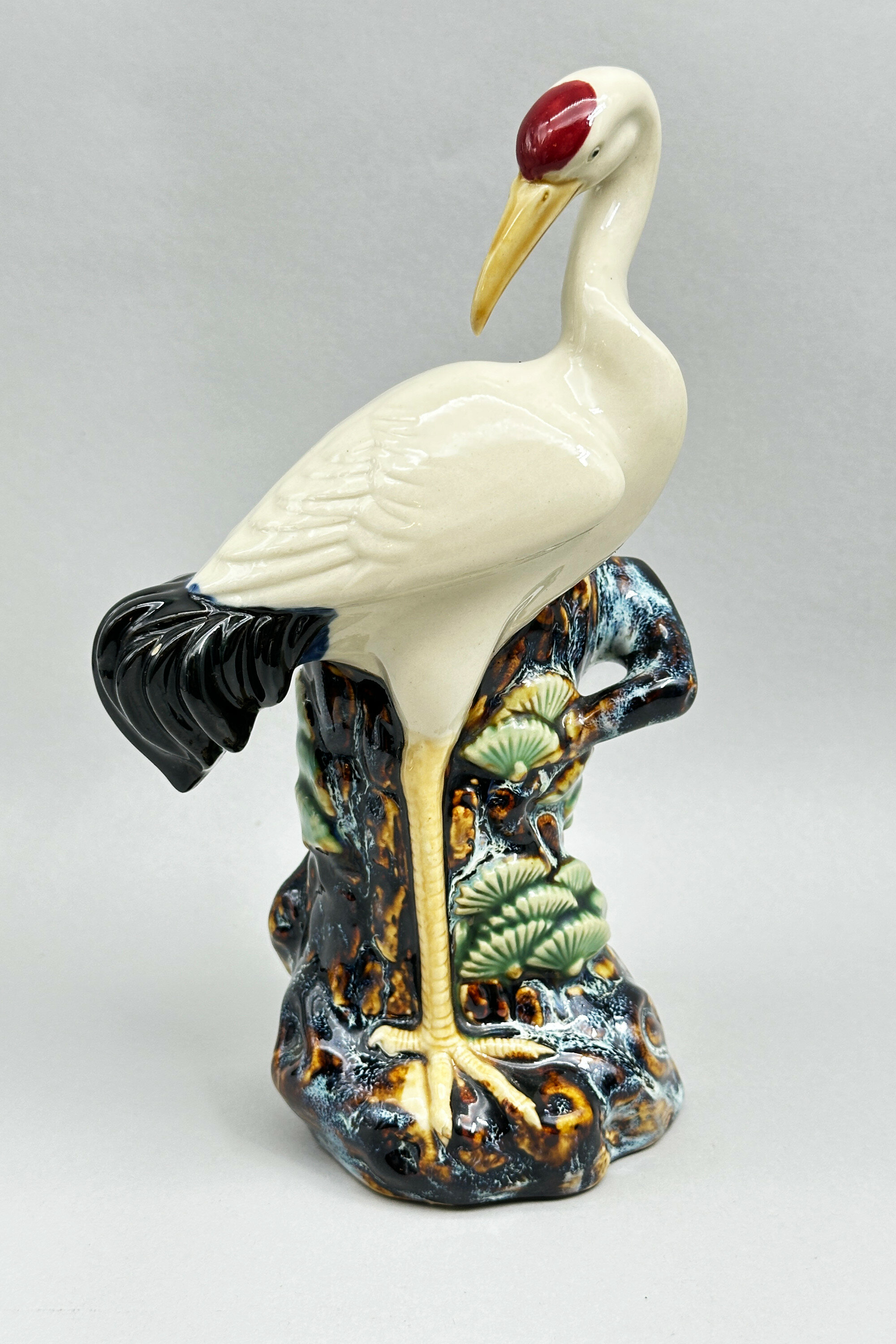
Chinese Majolica Style Brush Holder modelled as a Crane, mid C20th
Price: £25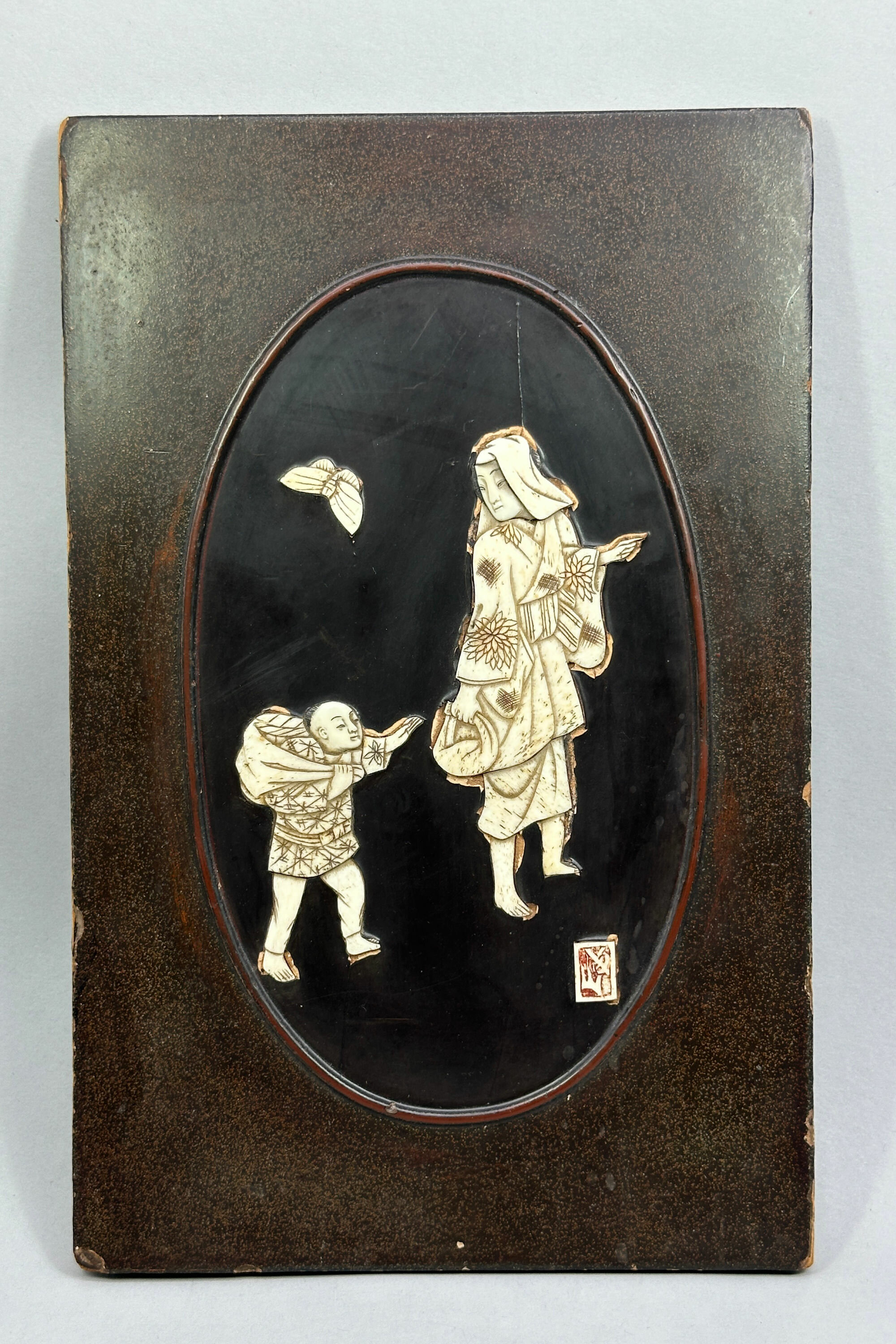
Japanese Bone and Lacquer Plaque, Lady and Boy, signed, late C19th
Price: £45These bone and lacquer plaques were produced in great quantities by Japanese artists in the late nineteenth century for export to the West and became a familiar feature of the European drawing room. The medium was easily subject to damage and loss, especially in respect of the bone inlay, and while this example has some slight damage this is confined to a crack in the lacquer ground of the panel itself and some chipping to the extremities of the panel. The decoration of the figures remains intact (the surround seems to have been cut away in some places to give added definition to the composition) and allows appreciation of the skill with which they were carved, presenting a genre scene of great charm.
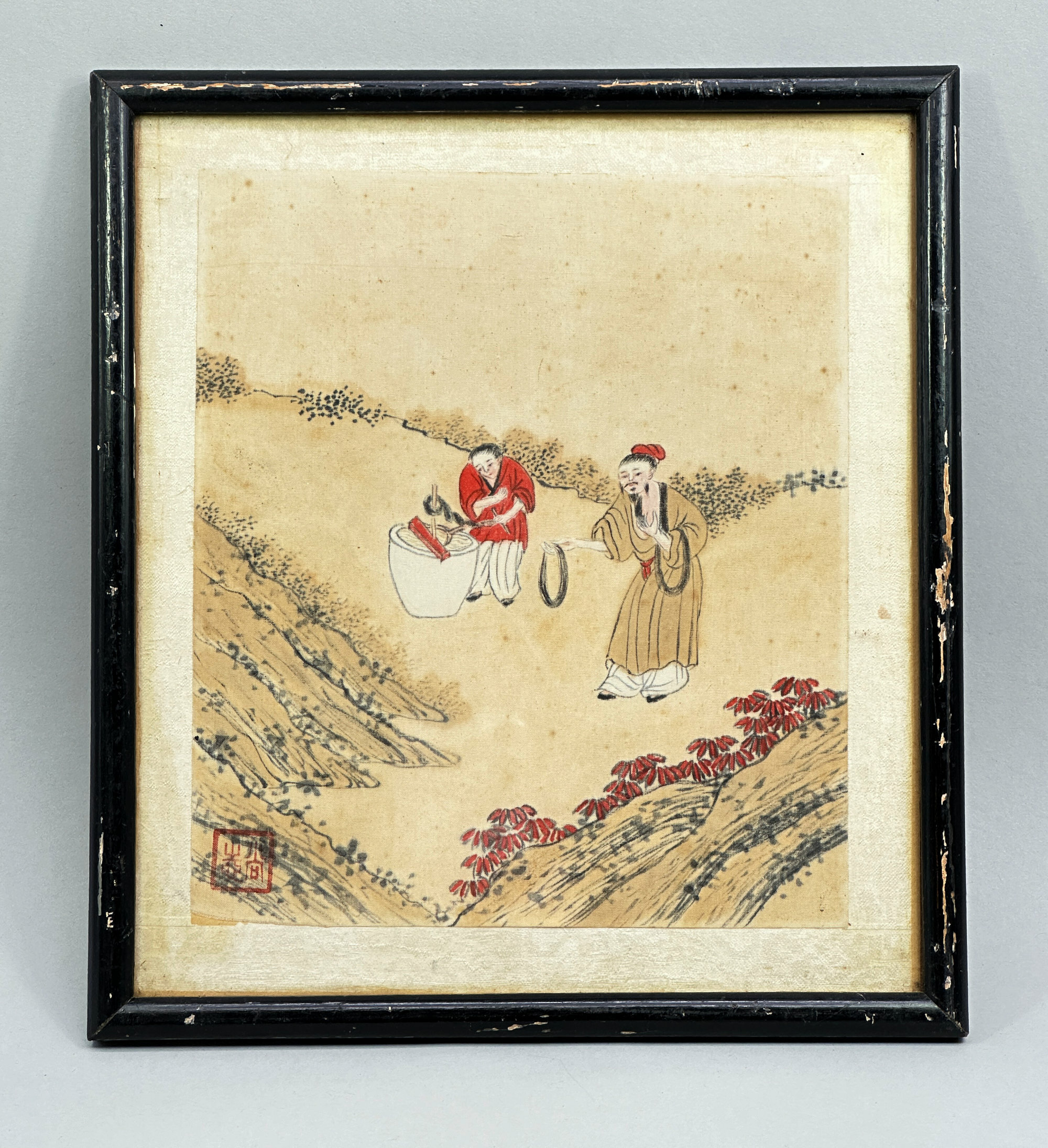
Framed Chinese painting on silk, two Silk Dyers, C19th/C20th
Price: £15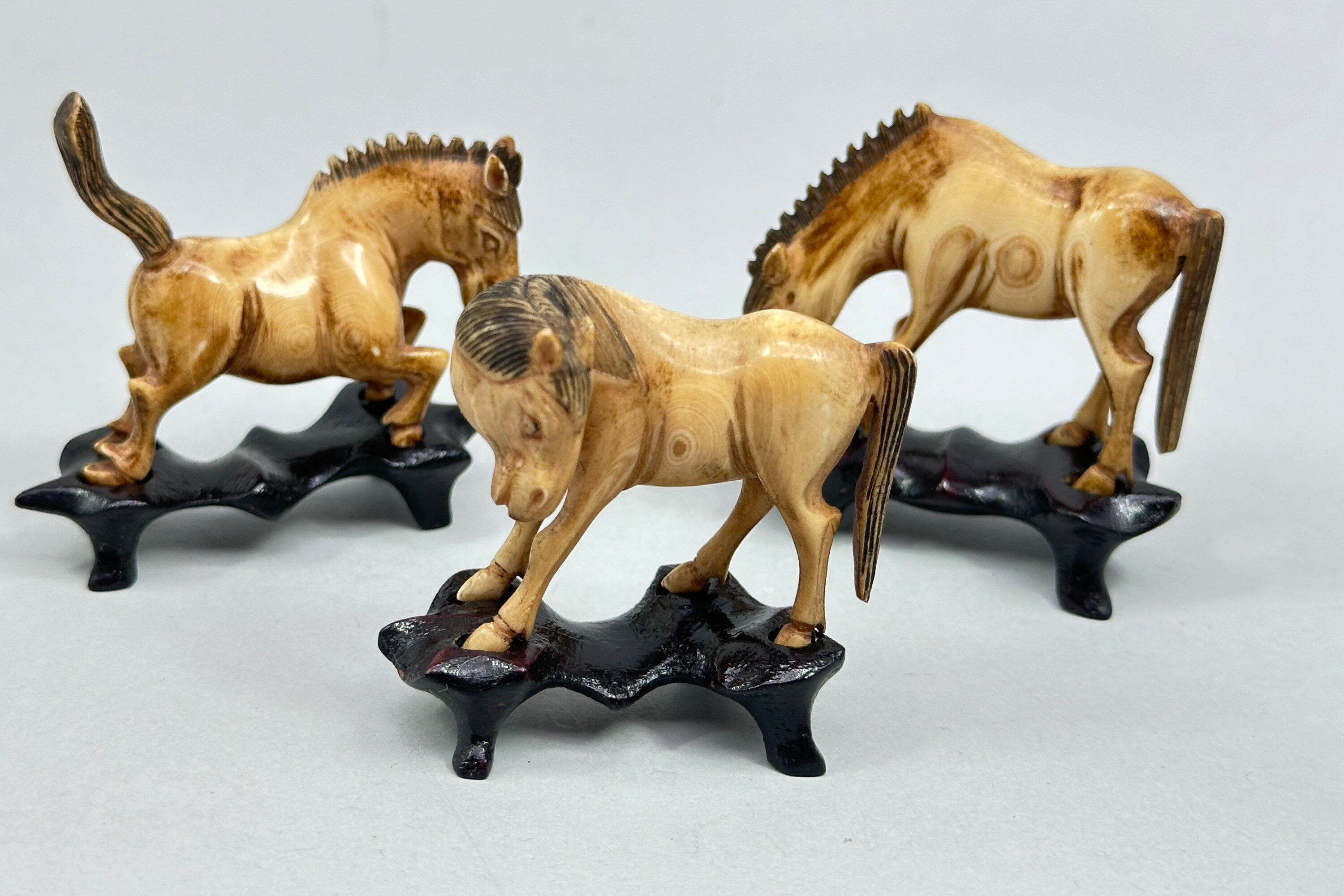
Group of Three Chinese carved bone Horses with wood stands, probably mid C20th
Price: £30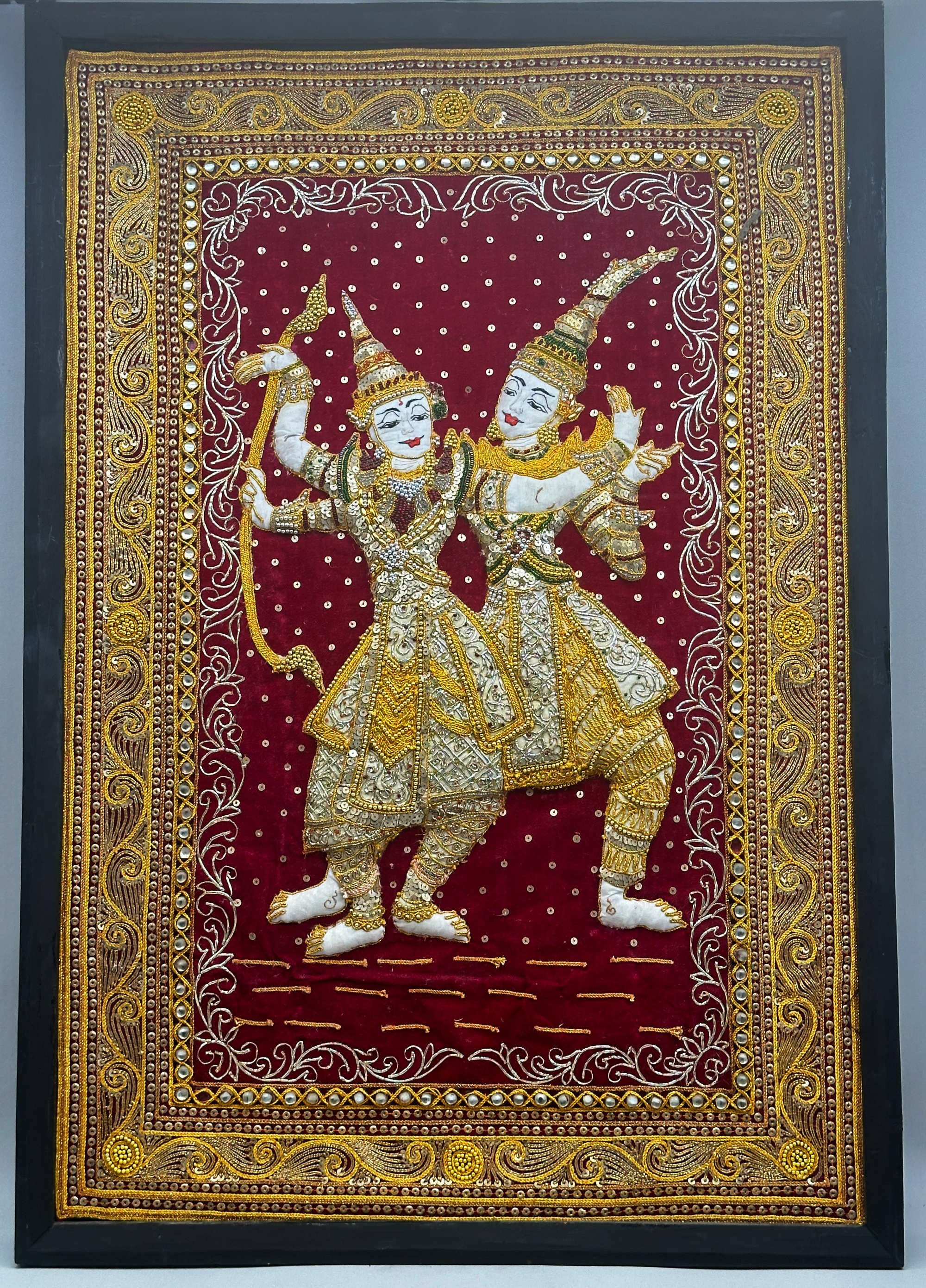
Large Burmese Textile with two dancing figures, probably second half C20th
Price: £110The distinctive style of embroidery and applied work here is typical of Burmese work known as ‘Kalaga’ which means ‘curtain’ in Burmese and is used to refer to heavily embroidered appliqué tapestry sewn with a technique called ‘shwe gyi do’. First produced around 150 years ago, Kalagas are generally linen, silk, cotton or velvet background fabrics embellished with sequins, embroidery, beads, coloured stones, tiny pearls, coral, braids and metal threads, the choice of materials depending in part on the client’s budget. Cotton padding was used to produce the ‘3D’ effect seen here and on many other examples of the work. The elaborate decoration meant that some of the larger pieces could take many months to produce which is likely to have been the case here. Dating is difficult and a mid C20th attribution here is probably sensible but an earlier period of manufacture is quite possible. The hanging has been recently mounted on board and fitted with a simple frame making it ready for display in a contemporary interior.
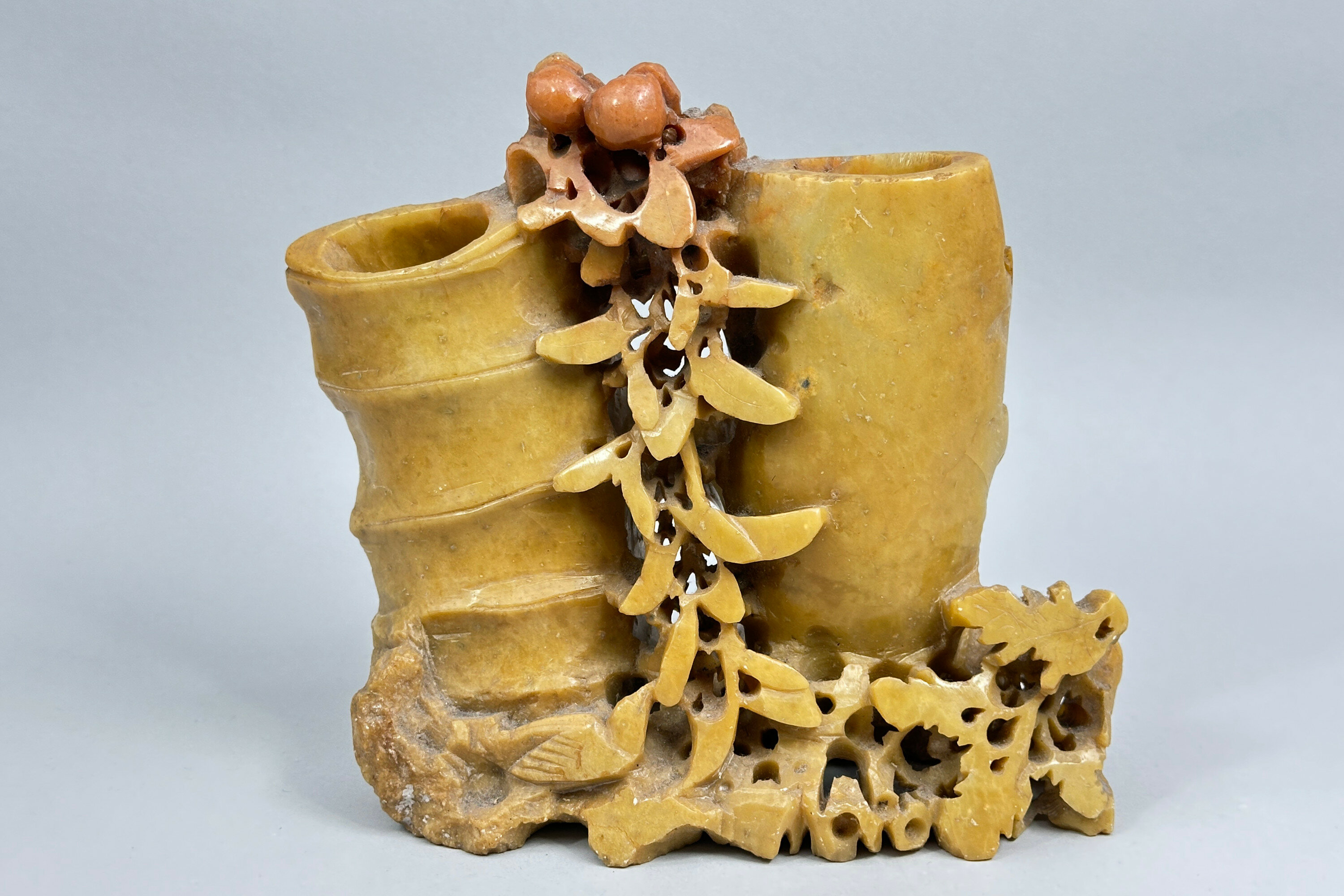
Chinese Soapstone Double Brushwasher, C20th
Price: £45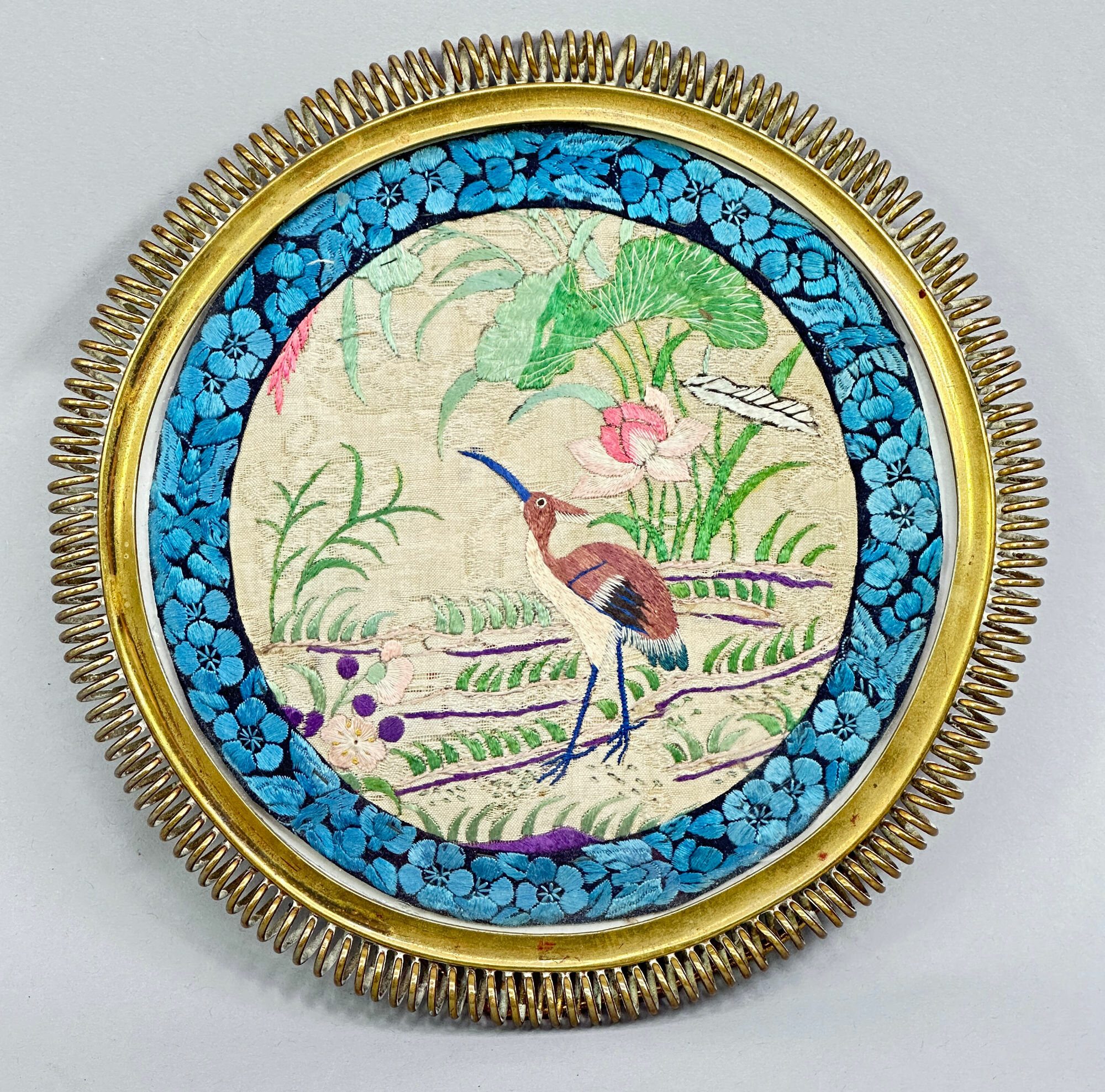
Chinese circular silk textile Panel in later European brass metal Frame, C19th/C20th
Price: £55